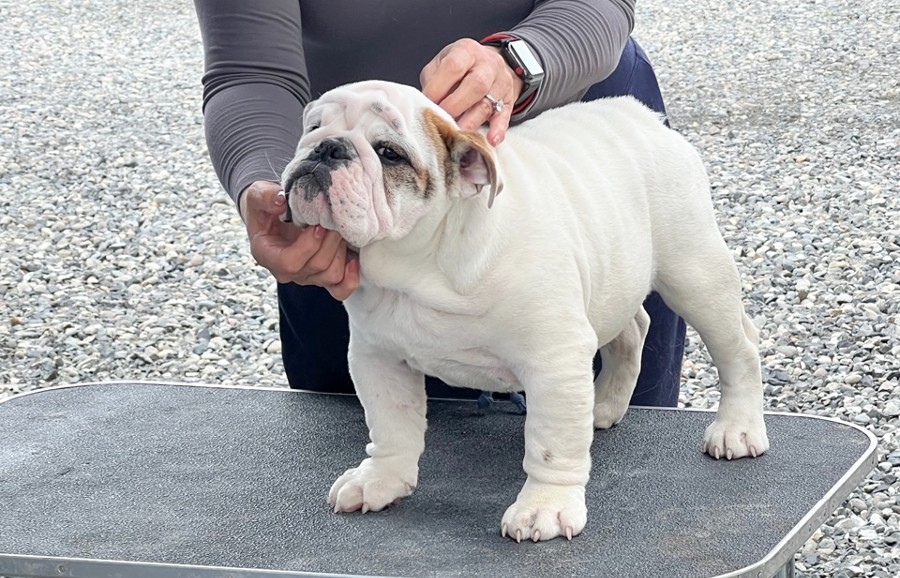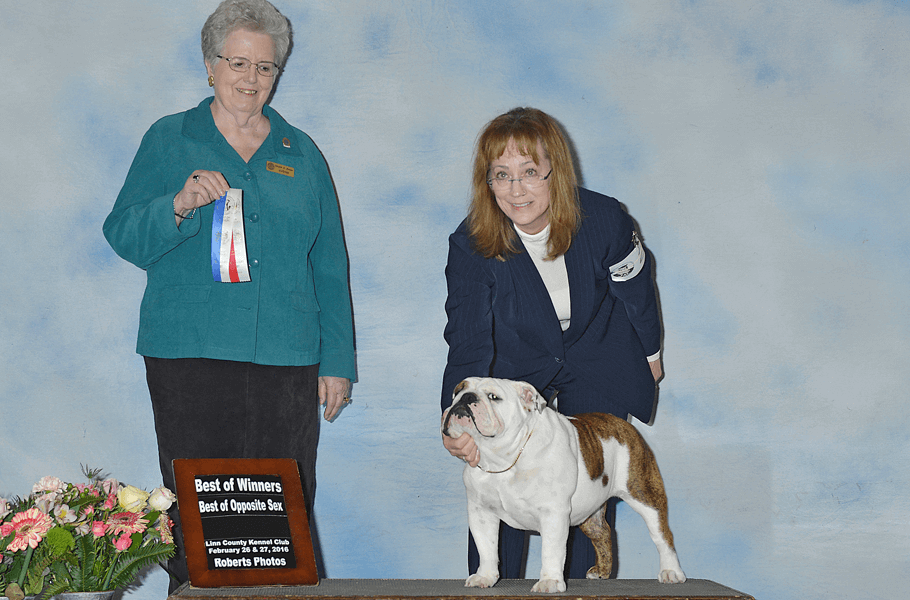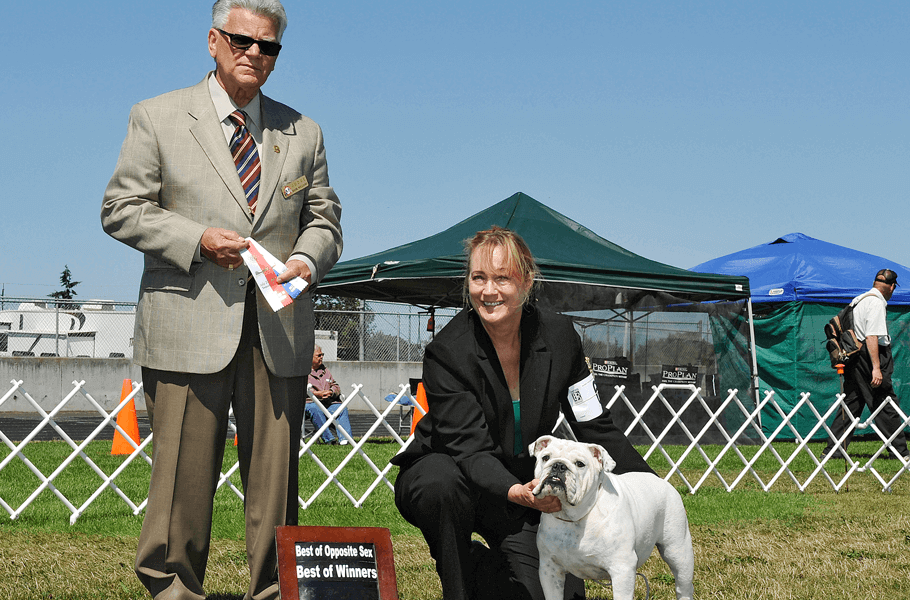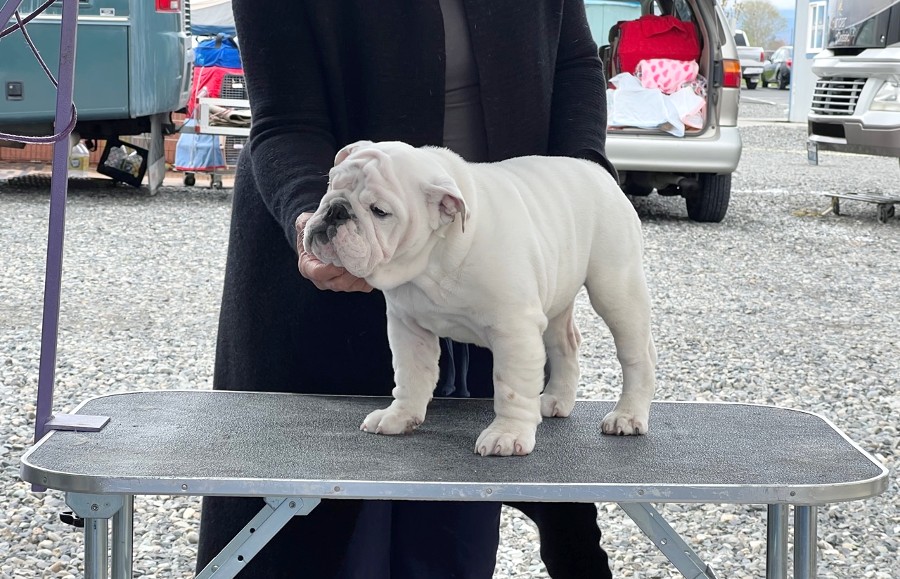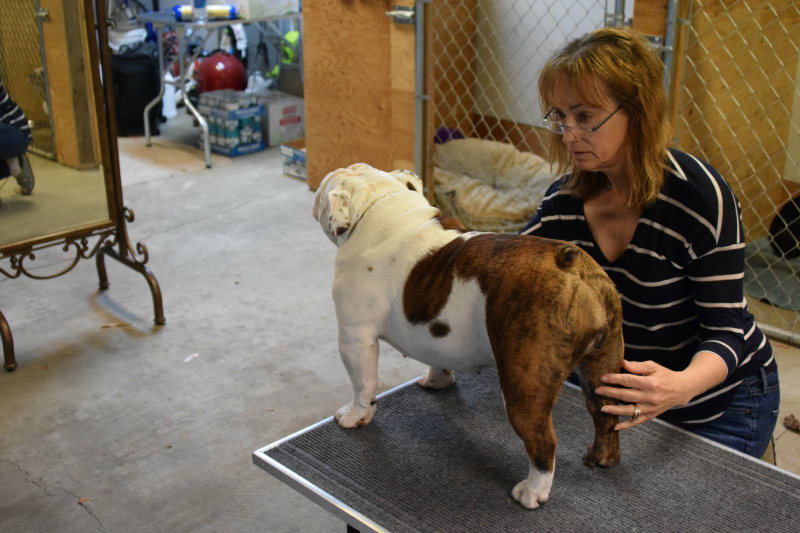What Makes a Good Show Dog?

What makes a good show dog? This is a question we sometimes hear from those interested in entering their dogs into dog shows. It was certainly a question we wondered ourselves when we first began showing. To be a successful show dog, a dog must, of course, meet the breed standard. But there’s more to it than that.
A good show dog must also have a calm and capable handler and possess an inner charm and confidence; a certain je ne sais quoi. We’ll detail exactly what we mean by that and more in this guide what to makes a good show dog.
1. They Fit the Breed Standard
In order to enter a conformation show, your dog must conform to what’s called a breed “standard”—a list of ideal physical traits specific to each breed. Every breed has its own standard, which the American Kennel Club (AKC) publishes and oversees. Dog show judges refer to the breed standard when assessing dogs competing in a dog show. They look at the dozens of required characteristics and then evaluate the dogs to see how well they measure up.
Some of the physical characteristics they consider include:
- Eye color, shape, size, set, and depth
- Skull circumference
- Ear size, shape, and set
- Face and muzzle size
- Coat texture and color
The judges also consider temperament, demeanor and disposition. A bulldog’s disposition, according to the Bulldog Standard, for example, must be “equable and kind, resolute and courageous (not vicious or aggressive).”
2. They Have Charisma
While conforming to the breed standard is vital for competing in a dog show, matching the breed standard alone isn’t enough. This is because the top dogs that compete in prestigious shows are often near-perfect replicas of their breed standards. What’s more, they’re impeccably trained.
At that point, how do the judges pick a winner?
This is where a dog’s personality and temperament can come into play. A good show dog looks like they clearly want to be in the ring. They move freely and confidently. They must also work well with their handler and demonstrate character, showmanship, and charisma.
3. Handlers Matter, Too
Sometimes the outcome of a dog show is determined not by the dog, but by the person handling him.
If you talk to show dog handlers, you’ll often hear them say something to the effect of “it travels down the lead.” A show dog is trained to be in-tune with his or her handler in order to react quickly to every command.
This can be helpful when a handler’s in a great mood, as his or her calm demeanor will be infectious, “traveling down the lead” and positively influencing the dog’s performance in the ring.
But it can have the opposite effect as well.
Dogs have superior hearing and smell and will often sense when a handler is nervous, tense, or upset. They’ll detect any changes to the handler’s tone of voice and will literally smell their fear. This can make a normally serene show dog jittery or on edge.
If you plan on being the handler for your dog in the ring, do what you can beforehand to calm your nerves. Take some deep breaths or listen to some calming music. Handlers have also been known to chew mint gum to mask the scent of fear.
Show Quality vs Pet Quality Dogs: What’s the Difference?
Breeders use the terms “show quality dog” or “pet quality puppy” when discussing litters, which can be confusing if you’re unfamiliar with the terminology.
A show quality dog is a dog that the breeder believes will place well in dog shows—meaning, their physical appearance and temperament appear to match the breed standard. These dogs usually cost more and some breeders will only let show quality dogs go to “show homes” (i.e., homes where the owners are committed to having their dogs compete in dog shows).
Read: How to Pick a Show Quality Bulldog Puppy.
A pet quality dog is a dog that has a quality (or qualities) that will likely disqualify him or her from competing in confirmation shows. This is often something minor that most dog owners would never notice, like the wrong eye or nostril color (yes, really) or a slight wave in the tail.
But just because a dog has been labeled “pet quality”, doesn’t mean that he isn’t every bit as beautiful and wonderfully tempered as a show quality dog. It only means he doesn’t perfectly match the standard.
Discerning between a show quality vs pet quality dog isn’t an exact science. Sometimes a perfect-looking pup will grow up to be too big to compete, or a gangly looking six-week-old will develop into a graceful show champion. This is why breeders will often wait six-to-eight weeks so that they see how a dog will turn out before they prepare them to go to their forever homes.
The Importance of Finding a Quality Breeder
Although ensuring your dog meets breed standard, has a great temperament, and an experienced handler is a great place to start, what makes a good show dog can often be subjective.
When it comes to each breed’s standard, there’s some wiggle room there, which allows show judges to, well, use their best judgment when determining which dog qualifies for a ribbon.
This is why it’s important to work with a quality breeder when selecting your next show dog. An experienced breeder who has a history of breeding and showing champion bulldogs will intuitively know which characteristics to prioritize and which to overlook.
Cascade Bulldogs is a bulldog blog managed by Gail and Eddie Harris. Gail and Eddie breed and show bulldogs around the United States from their home in the beautiful Cascade Mountains of Washington state. Follow Cascade Bulldogs on Facebook and Instagram for more tips on raising and showing bulldogs.
How to Enter Your Dog into a Dog Show: The Complete Guide
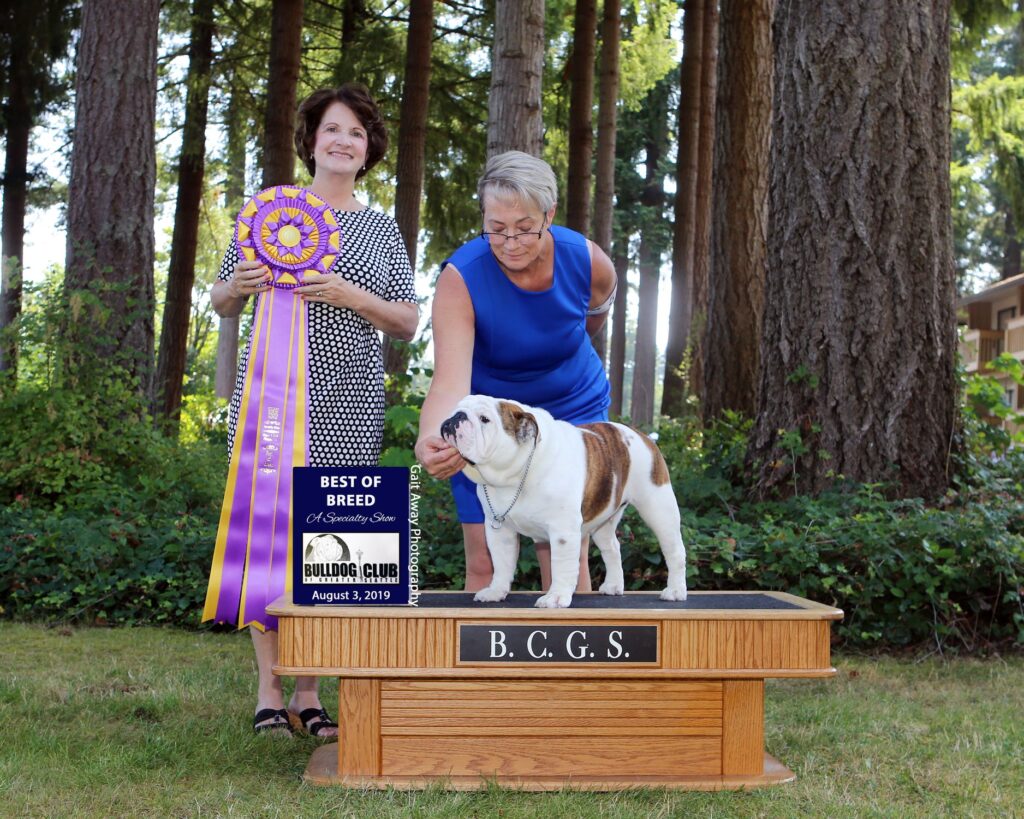
If you’re like a lot of dog lovers we meet, you’ve probably watched the Westminster Kennel Club Dog Show and thought: “Hey, that looks fun.” And maybe you’ve even thought that might look like something you’d want to do one day yourself. Afterall, you have a handsome dog. And he’s pretty well trained. He’d do great in a dog show, right?
Maybe.
While most dogs can become well-behaved pets with the right love, training, and attention, it takes a specifically bred dog to excel in dog shows. For show dogs, breeding is everything. Your dog may have the most adorable personality and the friendliest smile, but if he doesn’t closely match the breed standard (i.e., if his ears are slightly too long or his head is too narrow, etc.), he won’t place well in any show, let alone a prestigious one like Westminster.
But if you’re confident your pooch has the precise look judges want, go for it! Dog shows are a lot of fun. And participating in one can feel like belonging to a secret club. You may be competing against one another, but there’s a real feeling of camaraderie in dog shows that you won’t find anywhere else.
Before we delve into the types of dog shows and the details on how to get started in dog shows, let’s first review how they got started in the first place.
The History of Dog Shows in the US
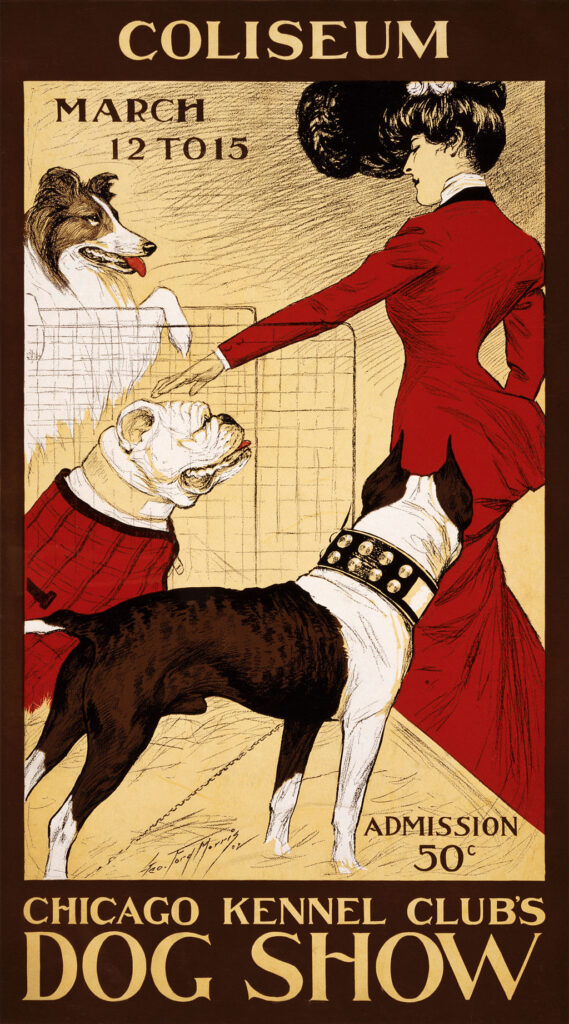
An advertising poster for the Chicago Kennel Club’s Dog Show, circa 1902.
The first dog shows were held in England in the 1850s, when they were included as side attractions in cattle shows. While the first official dog show was launched in Newcastle, England, in 1859, the first dog show in the US occurred only a few years later, in New York in 1863. In 1877, the first formal dog show was held in the US by the Westminster Kennel Club.
In 1878, the American Kennel Club (AKC) was formed, and nine breeds of dogs were recognized, which included the Chesapeake Bay Retriever, English Setter, Gordon Setter, and several breeds of spaniel. Most of these first charter breeds were hunting dogs because they were the most sought after breed of the time.
Bulldogs first became eligible for registration by the AKC in 1886 and French bulldogs in 1898.
Today, the American Kennel Club recognizes 200 breeds and represents the largest registry of purebred dogs on the planet.
The 3 Types of Dog Shows
Most official dog shows in the US are organized around a set of rules maintained by the American Kennel Club (AKC), which is the largest not-for-profit purebred dog registry in America.
Over 22,000 AKC-licensed dog shows are hosted in the US every year. To compete in an AKC-sanctioned show, you must register your dog with the American Kennel Club to ensure your dog is purebred and can demonstrate a healthy genetic line.
Below is an overview of the most common types of dogs shows:
1. All-breed shows
If you’ve seen a dog show on television before, it was likely an all-breed show. Like the name suggests, an all-breed show is open to all AKC-recognized breeds that meet show qualifications (the dog must be six months or older, must be registered with the AKC, etc.).
2. Specialty shows
Specialty shows only feature one breed of dog (or, in some cases, a few varieties of a specific breed). For example, the Poodle Club of America specialty show includes three breeds of Poodle (Standard, Miniature, and Toy). In the Bulldog Club of America speciality show, on the other hand, only Bulldogs (or “English bulldogs,” as the general public sometimes calls them) can compete—French bulldogs must compete in their own show.
3. Performance shows
All-breed and specialty shows are conformation shows, and therefore focus solely on how well a particular dog conforms to their breed in structure or movement. A performance show, on the other hand, judges dogs based on how well they perform certain abilities, such as agility and obedience.
Some performance shows are open to all breeds, while others focus on a single breed and that breed’s innate talents. For example, basset hound performance shows test basset hounds on their scenting skills, a dachshund performance show might test a dachshund’s ability to locate prey underground, and a performance event for a herding class of dog, like a border collie, would test the herding dog’s ability to move sheep around a field or enclosure.
How to Get Started in Dog Shows
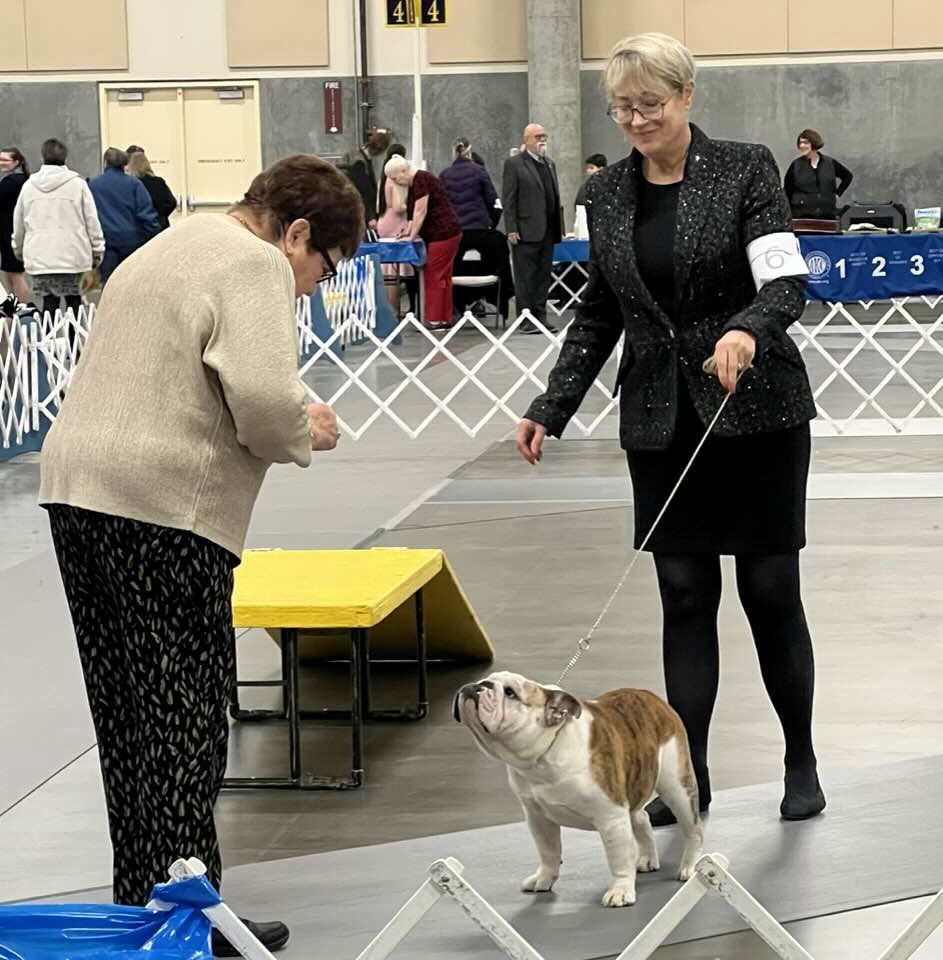
So now that you’re familiar with the types of dog shows, you may be wondering how to enter your dog into a dog show or how to get started in dog shows. Read on to discover all the details.
- Learn the Lingo
Before getting started in dog shows, you’ll want to learn the correct terminology. For example, for most dog shows, a dog show isn’t actually called a dog show! The official term is “conformation.” And the word “dog” actually only refers to male canines. For female canines, the correct term to use is “bitch.”
When you’re first starting out, learning what may seem like a foreign language can feel overwhelming, but don’t worry. Once you read through the materials provided by the AKC (American Kennel Club, another important term!), you’ll slowly get the hang of it.
We’ve compiled all the most common dog show lingo into a detailed guide: Dog Show Terminology: 20 Terms You Should Know Before Entering a Dog Show.
It’s important to learn the proper terminology because knowing the vocabulary will not only help you understand the showing process, but it’ll also ensure you don’t stand out as a complete novice at your first show.
- Double Check Your Dog is Eligible
The last thing you want to do is become an expert at dog shows, only to discover late in the process that your dog does not meet the criteria to compete.
Only purebred dogs are eligible to compete in conformation shows. Mixed breeds, as well as spayed or neutered dogs, are ineligible.
Your dog will also be disqualified if it’s discovered that he or she has undergone a surgical procedure to enhance their appearance in order to better conform to the breed standard.
In order to compete, your dog must also:
- Be six months or older
- Be registered with the AKC
- Have up-to-date vaccinations
- Be in good health
Read the AKC Dog Show Rules for a full list of requirements and regulations.
- Study the Process
Before you enter your dog into a dog show, you’ll want to understand what a dog show is and what it isn’t.
A dog show may look similar to a beauty pageant, but unlike the Miss America pageant, judges aren’t comparing the contestants in a dog show with one another, but rather against each dog’s specific breed standard.
For a crash course on everything you need to know about dog showing, we recommend reading the AKC’s free ebook: A Beginner’s Guide to Dog Shows.
But here is a general overview.
Dog Show Classes
American Kennel Club conformation shows offer seven classes for dogs to compete in. Each class is divided by gender, so males (dogs) in the novice class, for example, will compete against other males in the novice class while the females (bitches) in a novice class compete against one another in a separate competition.
After each of the class winners have been declared, all the dogs that won first place in their class will compete again for the title “Winners Dog” (for males) or “Winners Bitch” (for females).
If your dog is a puppy (i.e., under 12 months old), you’ll have the option of entering them into the “Puppy Class.”
If your dog is older than a puppy, or if you’re looking to compete in other classes, you could consider one of these classes:
- 12-18 Month
- Novice
- Amateur-Owner-Handled
- Bred-By-Exhibitor
- American-bred
- Open
For a full explanation of what each of these classes entaisl, read the AKC guide to Conformation Dog Show Classes.
- Learn How Judging Works
Judges evaluate each dog by the criteria detailed in the official written standard for each dog’s specific breed, which is managed and updated by the breed’s national club.
A standard includes guidelines breed:
- Structure
- Temperament
- Movement
As previously mentioned, judges don’t care how adorable your dog is—they only care how well your dog conforms to the standard for their breed.
This can be somewhat of a subjective process. While all judges are experts in the breeds they judge, they are also each judging based on their own “mental image” of what the ideal version of the breed should look or act like. This can differ slightly person to person.
A bulldog dog show (called a specialty show, because it features just one breed), for example, will often have several bulldogs that conform closely to the breed standard—and the differences can be so subtle, they’re nearly indistinguishable to the untrained eye. Dog shows can be quite competitive, but that is also what can make them exciting to watch and participate in.
During the judging process, judges inspect each dog, using their hands to go over the dog to examine the muscles, bones, and coat texture. They even inspect the dog’s teeth. They’ll also look at each dog from multiple angles and observe each dog’s gait (the way they move) before deciding on a winner.
- Join a Local Kennel Club or Specialty Club
While you can find a lot of information online (including in our blog and on the AKC website), sometimes the easiest way to learn how to get started in dog shows is to talk with the experts in your area. You’ll meet dog show champions when you join an all-breed kennel club or a breed-specific specialty club.
Local clubs can also point you toward quality training classes that can help prepare you and your dog for the show ring.
Visit the AKC website to find a local chapter in your area.
- Enroll your Dog in Training Classes
Of course, you can learn to train a dog yourself, but it might be easier to take a class if you’re just starting out. When you’re new to dog showing, dog training classes can be just as much about training you how to behave in a ring as it is about training your dog.
Some of the skills your dog will learn in a show training class are:
- Gaiting—Your dog will need to know how to move properly around the ring so that the judge can readily observe the dog’s gait and structure. Gaiting usually involves trotting with the head held up.
- Stacking—Your dog must be able to stand squarely while keeping still. Called “stacking”, this is the position your dog will assume during the judge’s examination.
- Backing up—Your dog should be able to back up on command.
- Tolerating being touched—Your dog will need to be comfortable being handled by strangers during the judging process. This is critical, because if your dog behaves aggressively during a dog show, he or she will be disqualified immediately.
- Attend a Dog Show in Person
Perhaps the best thing you can do to prepare for entering your dog into a dog show is to attend one as a spectator! You’ll get to watch the entire process from start to finish and can see first hand everything you’ll need to do when it comes time for you and your pooch to step into the ring. This will give you a crash course into the world of dog shows and can prove to be the most effective way to familiarize yourself with everything you’ll need to know.
The best part? You can attend most dog shows for free.
Search the AKC website’s database to find a dog show near you.
If you’ve found this blog helpful, we invite you to please follow Cascade Bulldogs on social media. You can follow us on Facebook, Instagram, and Pinterest for more dog show tips and for updates from our bulldogs. Our brood of bulldogs regularly compete in top shows across the country.
See you in the ring!
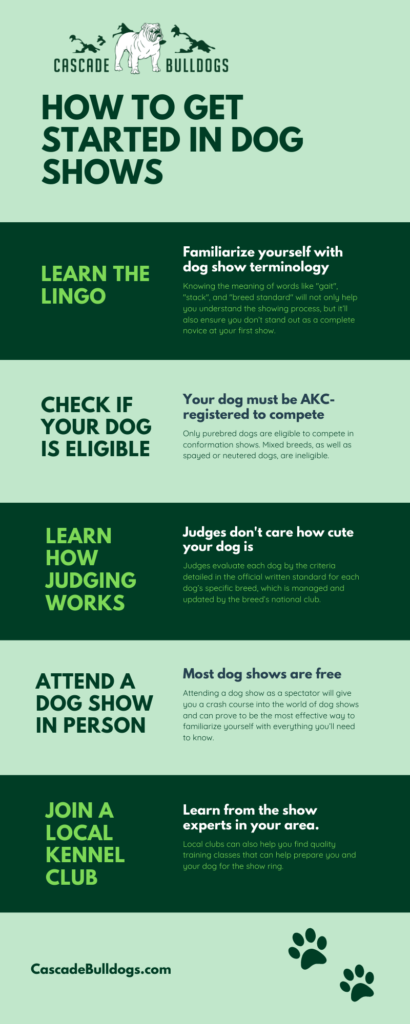
Why Choosing a Bulldog Breeder Who Shows Dogs is Important
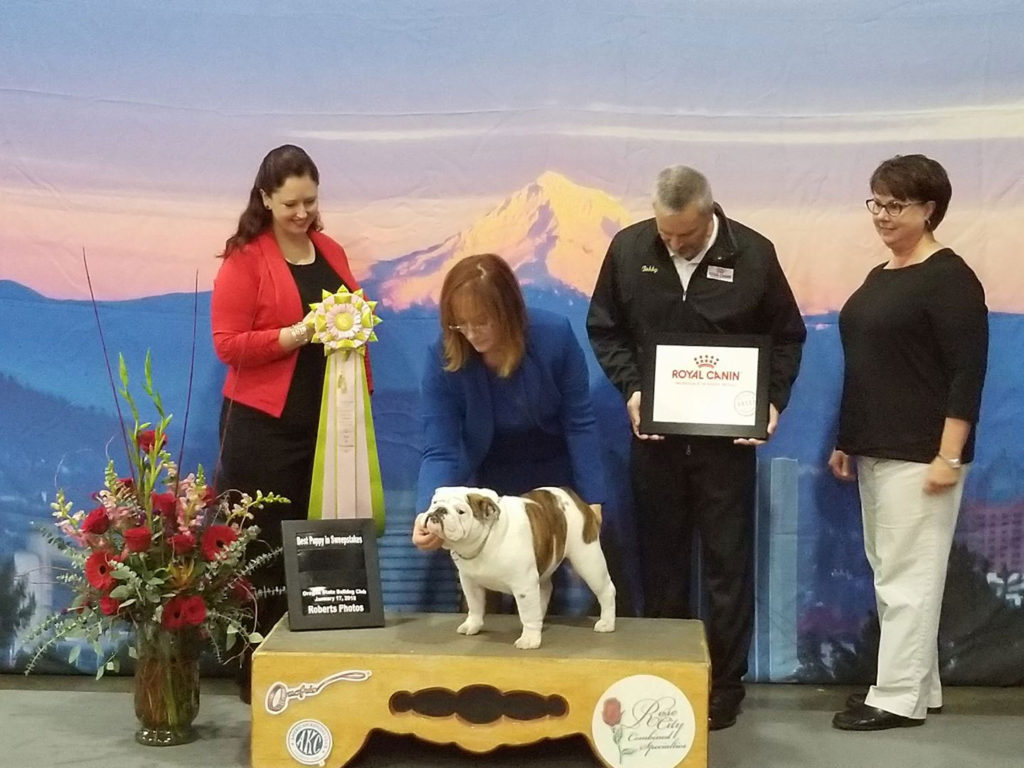
Here is a question we’ve heard before and as bulldog breeders who also show bulldogs, we thought we’d take a moment to chime in with our two cents.
Question: If you aren’t planning on entering your bulldog into a dog show, why should it matter whether or not you adopt a bulldog puppy from a breeder who shows dogs? After all, you’re only looking to adopt a lovable family pet—not a ribbon-holding champion. It shouldn’t matter who the puppy’s parents were— because caring about your puppy’s lineage will just make you seem snobby, right?
Answer: Actually, the opposite is true.
Here’s why:
At dog shows, bulldogs are evaluated against their breed standard. This includes an examination of each competitor’s soundness, type, gait, and temperament. Let’s look at what these terms mean.
Soundness—Soundness refers to the mental state and physical health of the bulldog—scoring high in soundness ensures all of the bulldog’s faculties are operating as they should.
Type—Type is comprised of movement, character, bone structure, condition, temperament, and appearance.
Gait—Gait refers to the bulldog’s quality and ease of movement. A bulldog with good bone structure will move with a graceful flow.
Temperament—Temperament is the overall attitude that a bulldog has toward people and other animals. According to The American Kennel Club (AKC), the bulldog’s temperament should be “kind and courageous.” Similarly, a bulldog’s demeanor should be “dignified.” This easy-going and relaxed temperament is part of what makes bulldogs such excellent family dogs.
Bulldogs that have been bread and raised to compete as show dogs innately possess these good qualities because they’ve been bread to “standard.”
Bulldogs that have been bread by inexperienced or unknowledgeable breeders, on the other hand, may not possess these same positive characteristics. They may be aloof or aggressive, for example—two characteristics that go against any breed standard.
The same is true of gait and type. Bulldogs have gained an unfair reputation as being “unhealthy,” and this largely due to poor breeding practices by breeders who don’t breed to standard. Bulldogs that come from a quality gene line (aka, “show dogs’), however, live full and active lives and lack many of the health issues the public has come to associate with the breed (such as hip dysplasia).
It is nearly impossible to have a winning show dog who has a litany of health problems—as the type standard dictates that the dog be in good, structural shape in order to compete. Choosing dogs from a breeder that participates in shows can actually increase the chances that your dog is healthy.
Of course, breeders aren’t able to magically make every bulldog show-worthy. There will always be some puppies in a litter that are otherwise healthy, but because of their larger ears or mismatched eye color, for example, they simply lack the characteristics needed to title. These bulldogs may not be competition worthy, but they’ll make ideal pets because you’ll know they come from good genes and have been raised by knowledgeable professionals who are experts at breeding healthy—and happy—bulldogs.
About Cascade Bulldogs: Cascade Bulldogs is a website dedicated to informing bulldog owners on how to raise, train and show bulldogs (also commonly referred to as “English bulldogs”). Follow Cascade Bulldogs on Facebook and Instagram for weekly updates, cute photos and inspirational bulldog quotes.
7 Ways to Show Your Bulldog You Love Him
If you are lucky enough to be a parent to a bulldog then you know just how adorably sweet bullys can be! Here are eight ways that you can tell your bulldog “I love you” by using a language he’ll understand.
1. Train for 15 minutes per day

One way to show your bully you love him is by taking the time to review basic commands and teach him new tricks. Mental stimulation is as important for bulldogs as it is for humans, and dogs, like children, appreciate having rules and boundaries. It helps them feel safe and secure.
Daily training sessions also help strengthen the bond between you and your pup. Just one hour a week is all that’s needed, which works out to about 15 minutes a day. Review the commands your bulldog has already mastered and then take a few minutes each training session to work on a new skill or trick.
2. Look deeply into her eyes.
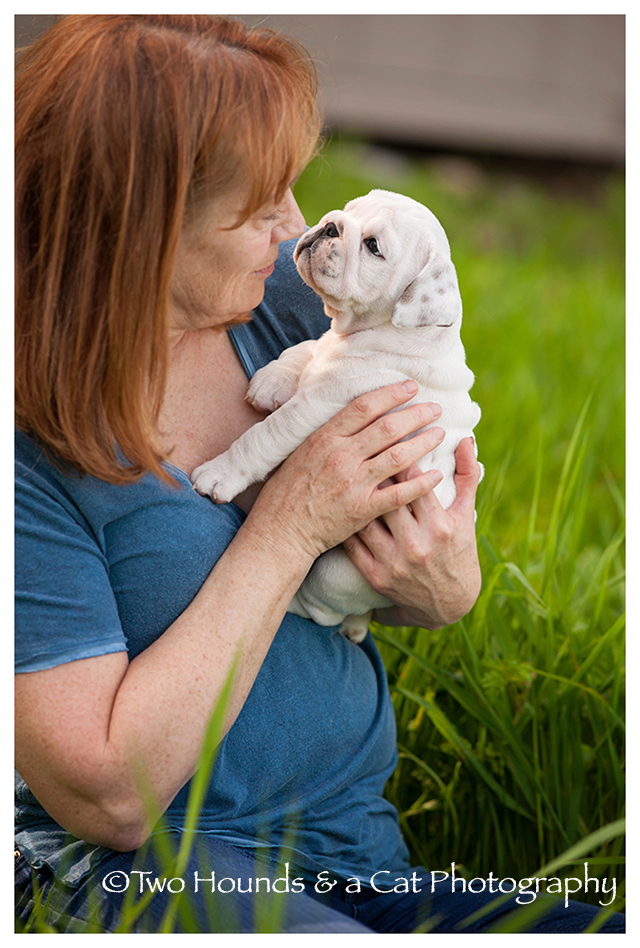
When your bulldog locks gazes with you, she is giving you a “visual hug.” By staring into your eyes, she is showing trust, submission and affection.
If you want to return the love, simply speak softly to your bulldog as you pet her gently and maintain eye contact. This action will flood her brain with oxytocin—the “happy hormone.”
Of course, direct eye contact can also be considered a challenge or threat if done with unfamiliar dogs—You never want to have a staring contest with the aggressive guard dog down the street. But staring into the eyes of your own pooch can help her feel relaxed and calm.
3. Lean on Your Bulldog—Literally.

Have you ever noticed your bulldog leaning up against you? That is actually his adorable way of giving you a hug! You can reciprocate by gently pressing your own weight against him. Obviously, you don’t want your bulldog to feel crushed or threatened. Just lean against him enough that he feels loved and trusted.
4. Nap with your bulldog

When your bulldog sleeps in your presence, it is is the ultimate show of love and trust. That is because dogs are at their most vulnerable when they are asleep. You can show your bulldog you love and trust him back by sleeping next to him. This will also show him you consider him part of your pack.
It’s okay if you have a “no dogs in the bed” policy. Snuggling up with your bulldog on the couch or on the floor for a couple of minutes every day can help, too.
5. Talk to your bulldog.
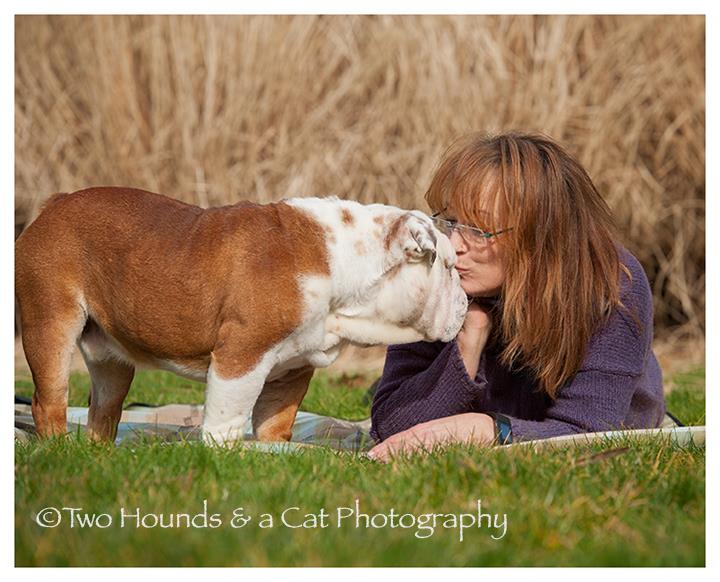
Studies involving MRI scans have shown that dogs understand and respond to our language better than we previously believed. Talking to your bulldog shows him that you love and care for him.
6. Create a morning cuddle routine.
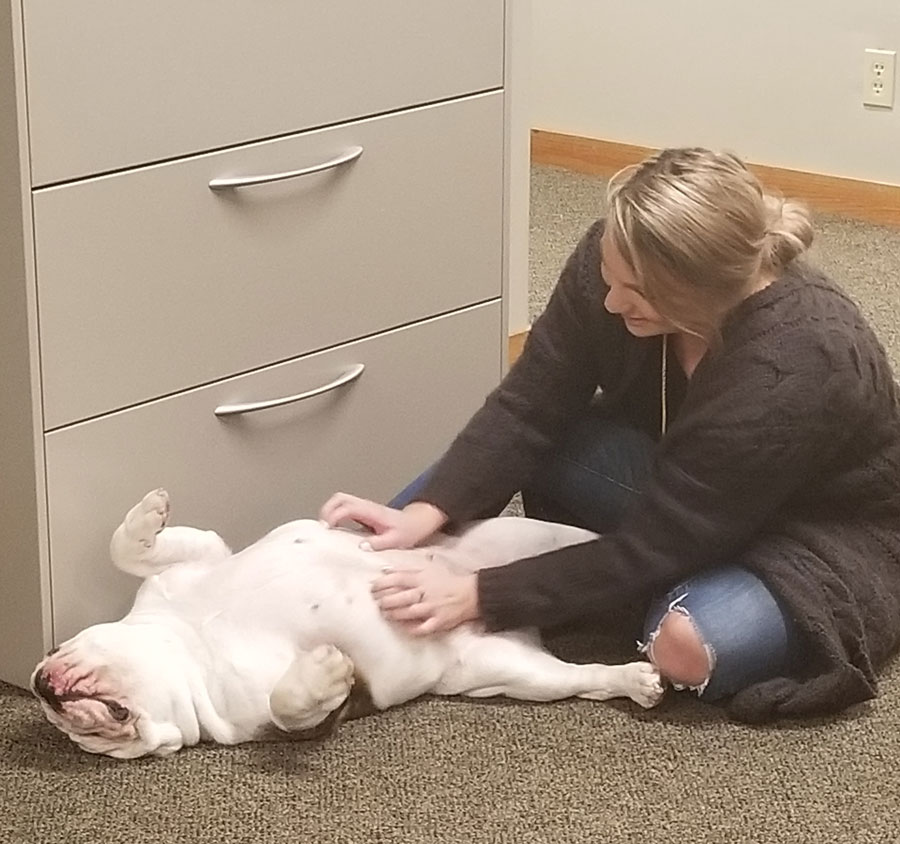
Is your morning routine stressing you out? Instead of hitting snooze for the tenth time, get up about ten minutes earlier to create a morning routine with your bulldog. Start off with a quick trip outside with your bully to let them empty their bladder. Then, come back inside and spend five minutes cuddling with your bulldog. This will help set a great tone for the rest of the day—for both human and canine alike.
7. Reassure with touch.
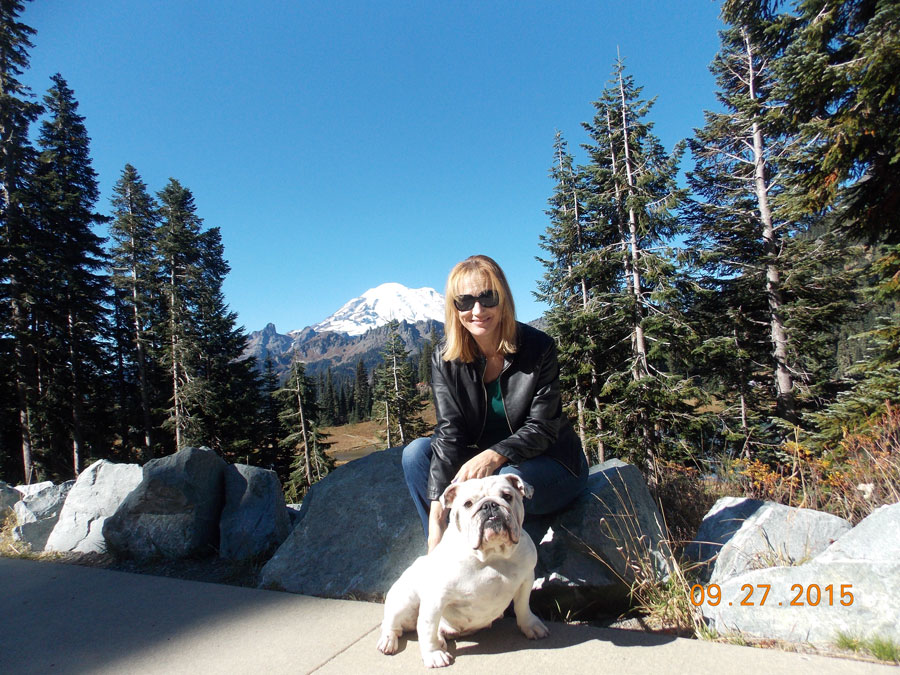
We often instinctively pat our bulldogs on the head or hug them to show affection. While you may think you’re showing affection, your bulldog may see it as you demonstrating your dominance. Instead of patting her on the head or hugging her, massage her belly or behind her ears. Brushing her gently with a soft-bristled brush can also help, too.
8. Praise her.
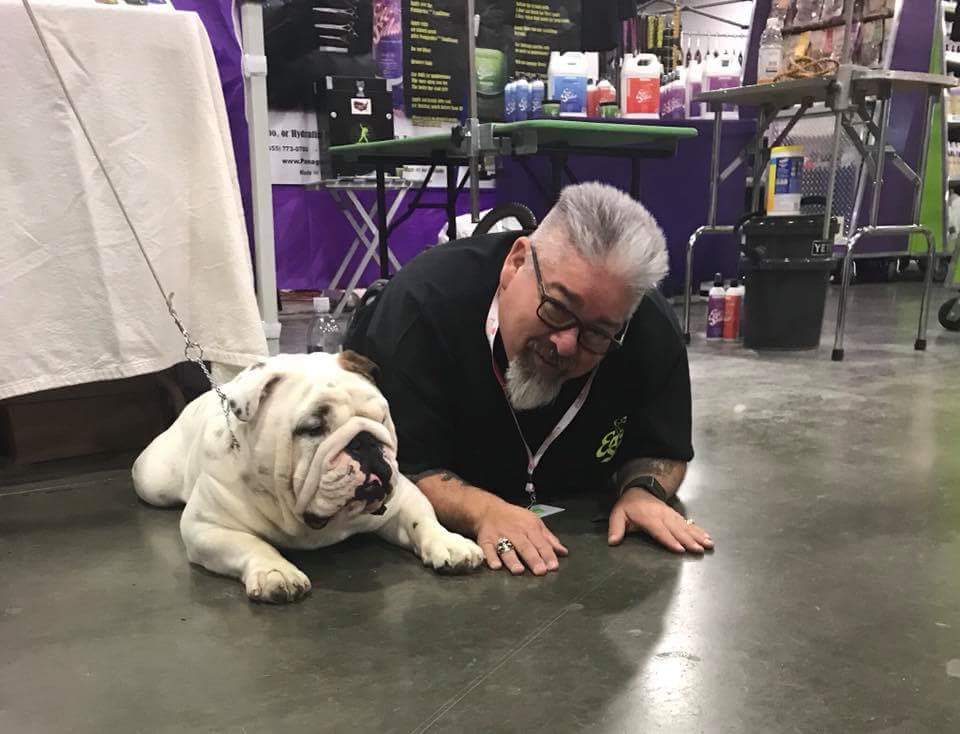
Dog owners are often good about reprimanding when their pooch misbehaves, however, they tend to neglect to consistently offer praise when their dog is well behaved.
When your bully is being calm and quiet, praise him with a “good boy.” This not only helps to reinforce good behavior, but it also shows your bulldog you appreciate his efforts to behave. Bulldogs are like children—they want to please you and crave your attention and praise.
What not to do:
There are some signs of affection that we instinctively do as humans that won’t translate the same way to dogs. In fact, these affectionate gestures could wind up confusing your bulldog, or worse, make them feel threatened.
Try to avoid the following:
Kissing—Your bulldog may interpret a kiss on the head as a signal you’re trying to show dominance. This is because in a pack, an alpha dog will often playfully nip at another dog’s neck to say “I’m the boss” or “Fall in line.”
Treats—Treats should only be used for training or to reward good behavior. Giving your bulldog a treat just because he’s looking particularly adorable or because you just “love him sooooo much” may just confuse your bulldog.
Hugging—Hugging your bulldog may elicit the opposite reaction to the one you’re hoping for, so watch your bulldog for signs of discomfort or fear. Hugging can cause your bulldog to feel trapped.
About Cascade Bulldogs: Cascade Bulldogs is a website dedicated to informing bulldog owners on how to raise, train and show bulldogs (also commonly referred to as “English bulldogs”). Follow Cascade Bulldogs on Facebook and Instagram for weekly updates, cute photos and inspirational bulldog quotes.
The Average Life Expectancy of a Bulldog in 2019

If you’ve been a life-long bulldog parent, you may have noticed that the bulldogs you’ve owned in the last several years have lived longer than the bulldogs you raised in previous decades. This is no coincidence.
A healthier diet, better breeding practices, and advances in veterinary medicine have all contributed to the bulldogs of today living longer, healthier and more active lives.
Take what bulldog owner Bonnie Roberts mentioned in an interview with The Bulldogger, for example:
“We have owned bulldogs since 1970. At that time, a seven or eight year life span was normal. Today, I would say 10 is common and 12+ is not too unusual.”
How long do bulldogs live in 2019?
Short answer: 10 to 12 years, according to the American Kennel Club (AKC).
Long answer:
Critics of the bulldog breed often point to the bulldog’s relatively low life expectancy rate as proof that bulldogs are unhealthy or even “unnatural.” While it’s true that the average bulldog does not live as long as a number of other breeds, like the chihuahua, for example, to say that a bulldog “doesn’t live long” is inaccurate.
Consider this:
According to the American Kennel Club (AKC), the average dog lives between 10 to 15 years.
By contrast, the average bulldog lives an average of 10 to 12 years. This puts the bulldog breed right in the range of normal.
This is the same average lifespan as the Boxer, another medium-sized dog, and is actually longer than the average life expectancy of a number of large breeds.
In fact, on average, the bulldog lives longer than the:
- Bernese Mountain Dog (7 to 10 years)
- Great Dane (8 to 10 years)
- Irish Wolfhound (8 to 10 years)
- Dogue de Bordeaux (9-11 years)
Is the Bernese mountain dog inherently unhealthy because it doesn’t have the same life expectancy as the Maltese? Of course not. The same is true of the bulldog.
Of course, bulldogs don’t live anywhere near as long their owners would like. If all of us had our way, our bully babies would live as long as the chihuahua (15 to 17 years) or the Pomeranian (14 to 16 years).
But as bulldog owners continue to educate themselves on proper breeding best practices and preventative health measures, who’s to say that a longer life expectancy won’t be possible in the future?
Females v. males: Who lives longer?
When it comes to average lifespan, is there a difference between male dogs and female dogs? While there’s no hard evidence, anecdotal research suggests that females may live longer. For instance, the results of a survey conducted by The Bulldogger in 2015 found that female bulldogs tend to live slightly long than male bulldogs.
What affects life expectancy?

In the same 2015 study by The Bulldogger, bulldog breeders were asked to list the factors they felt contributed to the better-than-expected life expectancy of today’s bulldogs.
The factors were as follows:
- Diet—One of people The Bulldogger interviewed was Neil Koeniger. He has been raising, showing and breeding bulldogs for more than 20 years and suggests that feeding bulldogs a grain-free diet improved life expectancy. He also suggests avoiding “over-vaccinating.”
- Weight maintenance— Just like with humans, bulldogs tend to gain more weight as they get older. And also like with humans, carrying more weight can be unhealthy.
- Exercise—Bulldogs may have a reputation for being “lazy,” but they are far from couch potatoes. They need regular exercise as much as any other breed, and that should include daily walks.
- Good breeding—Many of the health problems bulldogs experience are directly related to inbreeding. It’s vitally important to research a bulldog’s genealogy prior to adoption.
Bonnie Roberts told The Bulldogger, “I believe the longer lifespan can be attributed to the improved quality of dog food and veterinary medicine, combined with better breeding practices. Cancer seems to be the X-factor in shortening their lives.”
The leading causes of early death:
According to research cited in an article in the Journal of the American Veterinary Medical Association (JAVMA), the following are the top three causes of early death for bulldogs:
Cancer—Though cancer tends to affect large dogs more frequently than medium or small dogs, it remains one of the leading causes of deaths among older dogs of all breeds.
Some of the warning signs of cancer include lumps, wounds that refuse to heal and weight loss.
Trauma—Trauma is one of the leading causes of death among bulldog puppies and young dogs of all breeds. Trauma can include anything from car accidents and dog fights to drowning and poisonous snake or insect bites. Fortunately, unlike cancer, trauma is preventable. Keep your bulldog on a leash whenever you are outside and maintain a careful watch on him when he’s in the presence of other pets or young children.
Read: Summer Safety Tips for Bulldogs
Respiratory Disease—According to research cited by the American Veterinary Medical Association (AVMA), respiratory disease is the leading cause of death among bulldogs. Due to the bulldog’s elongated soft palate, it’s not uncommon for a bulldog to struggle to breathe during physical exertion. Monitor your bulldog’s breathing during walks or when he’s playing outside, especially during the warmer months. If he’s developed a cough, is wheezing or choking, or has difficulty eating, you should take your bulldog to the veterinarian as soon as possible.
Read: How to Tell Your Bulldog is Overheating
Obesity—On average, obese dogs don’t live as long as dogs with a healthy weight. In fact, obesity shortens a dog’s life an average of two years. This is due to the fact that the extra pounds can lead to diabetes, pancreatitis and respiratory conditions, among other problems.
Ways You Can Help Your Bulldog Live a Long and Healthy Life

Unfortunately, there is no way to guarantee with full certainty that your bulldog will live past his twelfth birthday. Accidents happen and cancer and other unpredictable illnesses can strike at any time. There are, however, a few things you can do to increase the odds. Below are a few of the most important.
-
Choose your breeder carefully
Choosing a healthy bulldog starts with choosing a reputable breeder. It can’t be emphasized enough the importance of picking a bulldog who comes from a healthy bloodline. Not only do genetics play a huge role in a dog’s life expectancy rate, but it also influences how well your bulldog will be able to breathe, see and move throughout his or her life.
Read:
How to Pick a Show-Quality Puppy
9 Important Questions to Ask Your Bulldog Breeder
-
Take your bulldog in for regular vet visits
Even if your bulldog has superb genes and appears to be in top physical shape, it’s important to bring your bulldog for regular check ups. Veterinarians recommend scheduling two check ups per year—and this should include a dental exam.
-
Give your bulldog a lot of love and attention
Just like with humans, a bulldog that feels loved and “a part of the family” will be happier—and healthier—than a bulldog that is ignored, neglected or abused. Show your bulldog you love her by playing with her and giving her daily ear, neck and belly scratches.
Resources:
The Bulldogger—The official publication The Bulldog Club of America, Inc. (March, 2015). Issue Number 151
Larkin, Malinda. (2011). Study examines causes of death in dogs. Journal of the American Veterinary Medical Association.
About Cascade Bulldogs: Cascade Bulldogs is a bulldog blog that provides information on how to raise, train and show bulldogs. It is managed by bulldog owners Gail and Eddie Harris.
100+ Unique Bulldog Names (Plus,Tips for Naming Your Bulldog)

With thousands of names to choose from, finding the perfect monicker for your bulldog can sometimes feel overwhelming. Luckily, naming a bulldog isn’t like naming a child.There’s no need to worry about social acceptance (the other dogs won’t tease your bulldog on the playground if he has a weird name), and this can free you to be more creative and make a unique or even wacky name choice. So long as you’re comfortable with the name and your bulldog responds well to it, then you’re set.
But for those who’d like to go the extra mile and find a truly unique name that no other bulldog baby at the dog park will have, here is a list of 120 cool and unusual bulldog names as well as tips on how to pick the perfect name for your pet.
How to Pick a Name for Your Bulldog
-
Pick a name your bulldog will easily recognize
Dogs respond best to names that are one-to-two syllables, so select a name that’s short. Even if you choose a longer name to start, you’ll likely end up shortening it over time—Yelling “Come here, Snuggles von LovesALot” across a dog park can get old, fast.
Also, dogs respond to names with common, familiar sounds. Names with “ch,” “sh,” “k” or names that end with a long “e” sound or short “a” sound—like “Shelly” or “Kika,” for instance, will likely get your dog’s attention quicker than “Zufu” or “Xander.”
-
Choose a name you’re comfortable shouting in a dog park
This perhaps goes without saying, but yelling a name like “Darth Vadar!” in a crowded dog park might earn you some odd looks from your fellow pet owners. Consider your own comfort level with zany names and choose carefully.
-
Avoid names that sound like commands
Avoid naming your bulldog anything that rhymes with or sounds similar to a common command, such as “No,” “Sit,” “Stay,” “Down,” or “Come.” That may seem like obvious advice, but it’s worth thinking twice about, as dogs aren’t always able to differentiate between similar sounds. Names like “Joe” or “Mo” can sound too much like “no,” for example, and might confuse your bulldog.
-
Consider your bulldog’s heritage
Oftentimes it’s fun to name a bulldog a traditional English or French name. For an “English Bulldog,” you can call him Henry, Arthur, Harry Potter or Merlin, for example. For a French bulldog, names like “Delphine” or “Louis” might be a fitting choice.
-
Wait a few days before choosing a name
If you’ve just brought your new bulldog home, you may want to wait a couple of days before selecting a name. This will give you a chance to get to know your pup and become familiar with his personality, which you can use for inspiration in the naming process.
-
Consider your pup’s personality and appearance
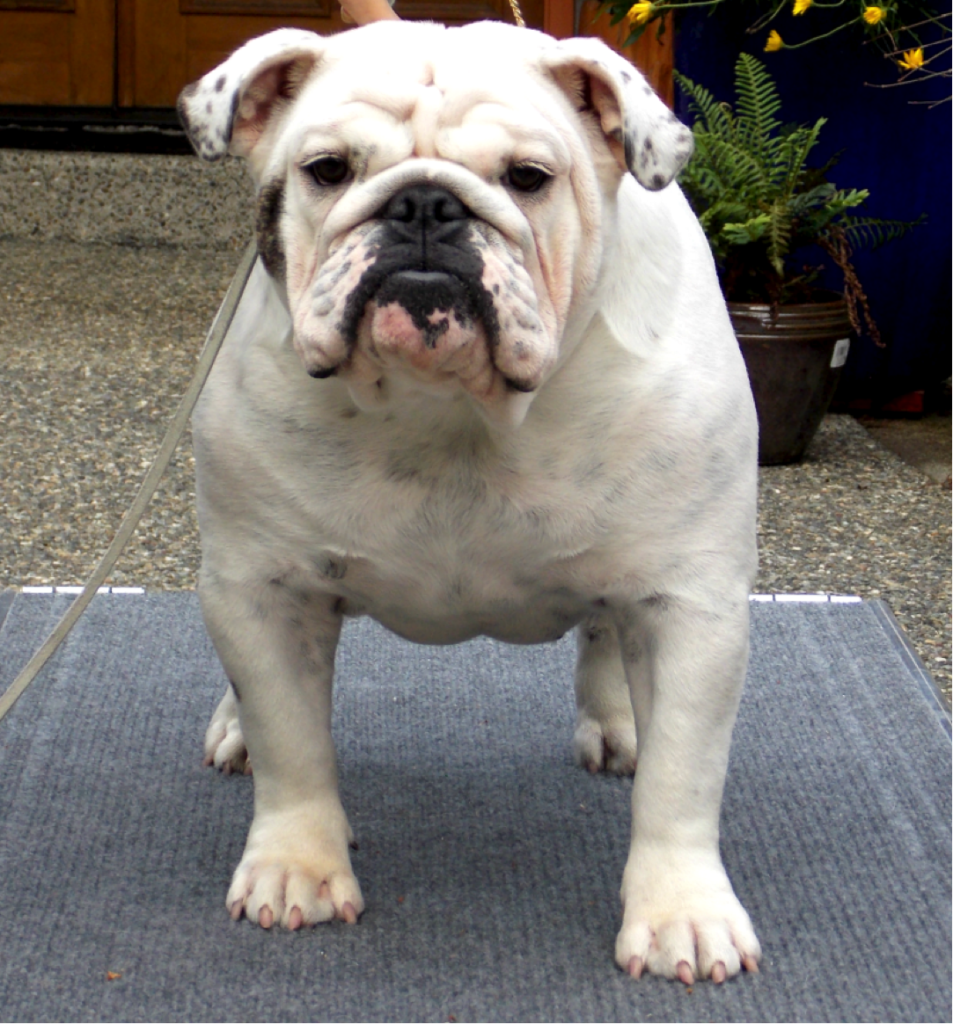
Our bulldog, Snow White.
You may want to call your all-white bulldog Snowball (or Snow White, as we did) or if you have a hyper and rambunctious bulldog, then names like “Fizz” or “Chipper” might be a fun option.
Unique female bulldog names
Picking a uniquely female name can help prevent the “Is it a boy or a girl?” question that often comes when you name your bulldog a gender-neutral name. The list below include several more interesting picks.
1. Beena
2. Chatty
3. Lolly
4. Loula
5. Mooka
6. Nyla
7. Polly
8. Reena
9. Sally
10. Thera
11. Vivi
12. Zee
Unique male bulldog names
Some of the most popular male bulldog names include “Tank,” “Max,” “Winston” and “Rocky;” all great names, for sure, but they’re not the most original. Below is a list of fun and quirky bulldog names that will stand out from the crowd (just like your special bully).
13. Dart
14. Gazer
15. Gordy
16. Horace
17. Lemmy
18. Levar
19. Titan
20. Trusty
Cute bulldog names
Just because the names are unusual doesn’t mean they can’t be cute, too. The following one and two-syllable names are goofy and cheerful and ideal for a bulldog with a sweet or spunky personality.
21. Bear
22. Biggie
23. Boo
24. Chips
25. Chow
26. Cuddles
27. Dixon
28. Dorian
29. Fluff
30. Gemmy
31. Goober
32. Jade
33. Kola
34. Kringle
35. Mellie
36. Moo
37. Mouse
38. Numa
39. Opal
40. Pooka
41. Prentiss
42. Puddles
45. Shaggy
46. Shasta
47. Shayne
48. Shotzie
49. Tater
Cool bulldog names
If your bulldog has a mellow and calm personality, then a classically cool moniker may be a good choice. Place a stylish pair of sunglasses on your bully and call him “Blaze” or “Lottie” and you have yourself one cool bulldog-y.
50. Amadio
51. Apollo
52. Barker
53. Barkley
54. Billy
55. Blaze
56. Boomer
57. Braden
58. Chavez
59. Cruz
60. Davey
61. Dustin
62. Eduardo
63. Francis
64. Harris
65. Hayden
66. Jake
67. James
68. Johnny
69. Lindy
70. Lottie
71. Nyx
72. Oakley
73. Pablo
74. Pixel
75. Roller
76. Saroshi
78. Vixen
Fun bulldog names
Does your bulldog love to play? Is he rambunctious and silly? Maybe even a little mischievous? Then one of these fun bulldog names below might be perfect.
79. Bestie
80. Budda
89. Forrest
90. Girlie
91. Gnome
92. Jobie
93. Lion
94. Melon
95. Pony
96. Pride
97. Puma
98. Starr
99. Tank
100. Taz
101. Wags
Unusual bulldog names
There are unique bulldog names and then there are unusual bulldog names. If the names above weren’t interesting enough, the 18 names below might work.
102. Baby
103. Bonita
104. Bronco
105. Bustle
106. Cheech
107. Cherry
108. Cozy
109. Duster
110. Fisher
111. Gus
112. Hobo
113. Keyster
114. Lotus
115. Maizie
116. Pierre
117. Ragin
118. Raider
119. Tabby
120. Tails
About Cascade Bulldogs: Cascade Bulldogs is a bulldog blog that provides information on how to raise, train and show bulldogs (also referred to as “English bulldogs”). It is managed by bulldog owners Gail and Eddie Harris.
Related Posts:
Dog Show Terminology: 20 Terms You Should Know Before Entering a Dog Show
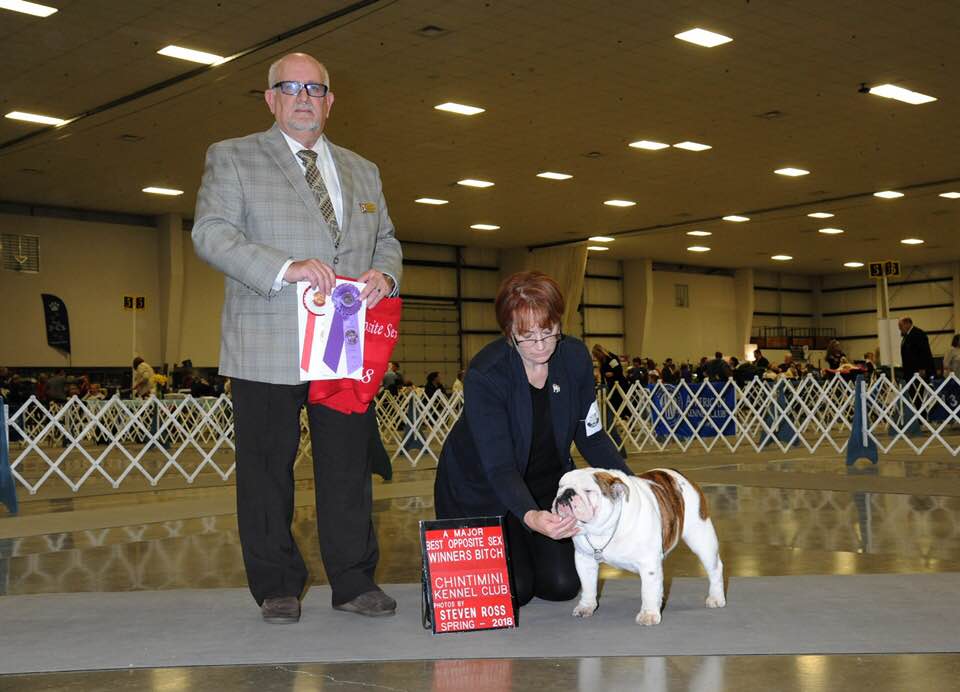
Before you enter your dog into his or her first dog show, it’s important to familiarize yourself with some of the terminology you’ll encounter in the ring. Having a good grasp of common dog show vocabulary will not only help you navigate through each stage of the competition process, but it will also help you determine if you and your dog are ready to enter at all. You may find after reading this article, for example, that your dog doesn’t meet breed standard or he hasn’t yet learned how to stack.
Even if you aren’t planning on entering your dog in a dog show any time soon, mastering the proper terminology can make watching a dog show more enjoyable—whether it’s on TV at the ring.
Below are 20 of the most important and common dog show words and phrases.
Dog Show Terminology Basics:
1. Dam—The mother of a puppy litter.
2. Dog—In dog shows, “dog” refers to an intact male canine.
3. Bitch—This isn’t a dirty word. In dog shows, “bitch” refers to an intact female canine.
4. Breed standard—A written definition of the ideal physical and temperamental features of a breed. The traits outlined in a breed standard are what judges refer to when evaluating dogs in a dog show. Each breed has its own standard that is created by a national organization, like the American Kennel Club (AKC), for example, or the CKC (Canadian Kennel Club).
5. Purebred—A dog whose sire and dam were in the same breed and who have supporting documentation that proves an unmixed lineage.
6. AKC—Established in the late 1800s, the American Kennel Club is an organization that regulates dog shows, provides a registry of purebred dogs and educates the public on the breeding standards of purebred dogs.
7. Groups—Dog breeds are categorized into “groups.” The AKC recognizes seven different groups, which are as follows: Sporting, Hound, Working, Terrier, Toy, Herding and Non-sporting. You can read more about how each group is categorized on the AKC website. Bulldogs, for example, are categorized in the non-sporting group.
The People:
8. Handler—Oftentimes paid professionals, a handler is the person who leads and shows the dog in the ring. A handler plays a pivotal role in a dog show and can often spell the difference between a dog winning or losing at title.
9. Breeder—The dam’s owner at the time she was bred.
10. Breeder-Owner-Handler—Like the name suggests, this is the name for a dog handler who is also the dog’s owner and breeder.
11. Exhibitor—A person whose dog is competing in a dog show.
12. Judge—Someone officially approved by the AKC to judge dog shows.
The Details:
13. Conformation—A dog’s bone structure and physical characteristics.
14. Gait—A dog’s movement. Judges look at a dog’s gait (the way they run and move around the ring) to determine if the dog’s conformation meets the breed’s standard.
15. Stack—The dog’s standing position. One of the ways judges evaluate a dog’s conformation is to examine the dog while he is “stacking.” With a few breed exceptions, stacking requires a dog to situate his paws so that his forelegs and withers (shoulders) are aligned and his hind legs stand at a 90-degree angle with the floor.
16. Pedigree—The written documentation of a dog’s lineage, dating back three or more generations.
17. Catalogue—The document provided by show organizers that details the name and number of each competing dog as well as information regarding the dog’s breeder, handler and bloodline.
Placements:
The following are several titles your dog will be competing for when you enter him or her into a dog show. This is not an exhaustive list, however. For the full list, visit the AKC website.
18. Best of Breed—This title is given to the dog who wins first place for his breed.
19. Best In Group—After a dog wins Best of Breed, he continues on to compete with the other breeds in his group (i.e, “Hunting,” “Sporting,” “Toy,” etc.). If he wins Best In Group, he is considered the best representative of his breed compared with the other dogs in the same group.
20. Best In Show—A dog can compete for Best in Show after he has won Best in Group. Best in Show is the most prestigious title a dog can win in a single dog show.
About Cascade Bulldogs: Cascade Bulldogs is a website dedicated to informing bulldog owners on how to raise, train and show bulldogs (also commonly referred to as “English bulldogs”). Follow Cascade Bulldogs on Facebook and Instagram for weekly updates, cute photos and inspirational bulldog quotes.
Related Posts:
16 Things Only a Bulldog Owner Will Understand
Life is better with a bulldog.
You know it. Every bulldog owner knows it. Here are 16 things that only a bulldog mom or dad will appreciate.
1. There’s just something SUPER special about bulldogs.

Especially when they wear a cute outfit.
2. Others may think bulldogs are ugly or mean, but you know better.

Nothing but cuteness here.
3. You can’t look at a bulldog’s wrinkly face and not think “Awww. Isn’t he precious?!”
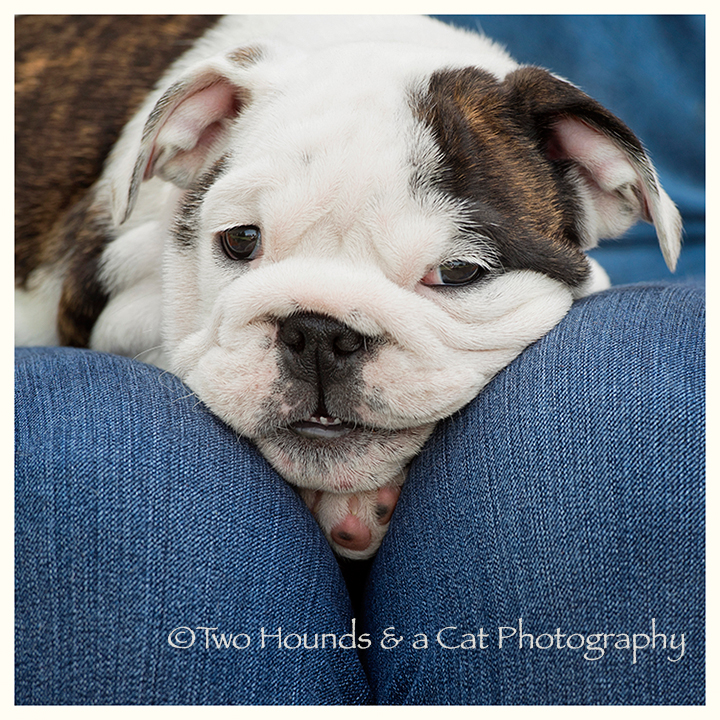
A puppy is just cuter when it’s face is full of wrinkles.
4. You hear a bulldogs adorable snorts and grunts and your heart melts a little.
They speak their own unique language.
5. Nothing cheers you up more than seeing your bulldog’s excited “welcome home!” wobble

Try to watch a bulldog run in excitement and not smile. We bet you won’t last two seconds.
6. Bulldogs make the best couch snuggle buddies.
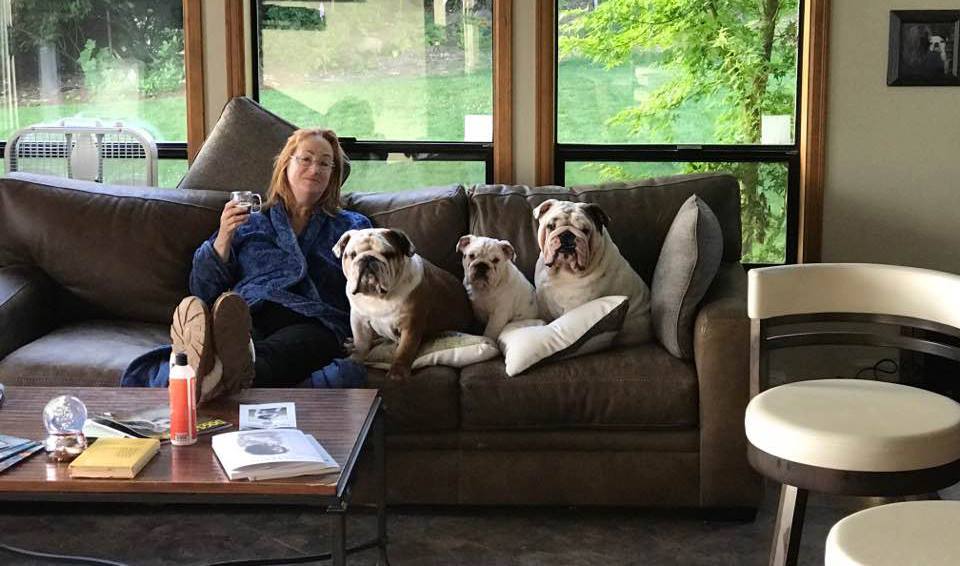
They will never judge you for being a couch potato. And they’ll always be happy to be your date for movie night.
7. And the most love-able travel companions.
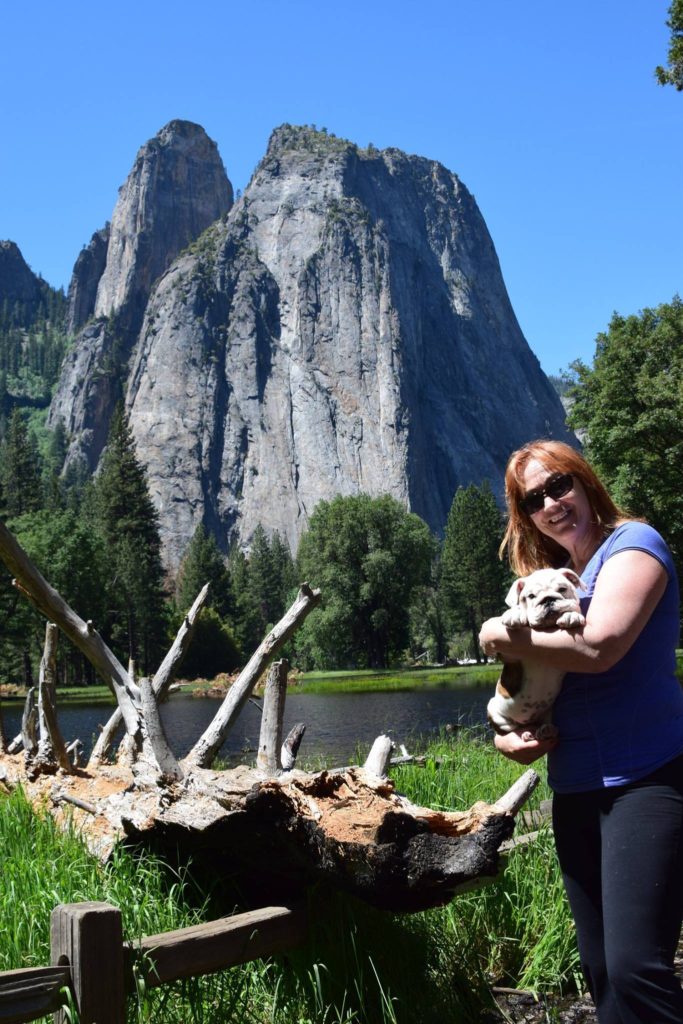
Their easygoing nature and laid-back personality make them the perfect road trip companions.
8. Others may think bulldogs aren’t athletic or graceful, but you know otherwise.
Could you jump that fence? We think not.
9. They’re great with kids.
They’re so gentle. And they have more patience than most humans.
10. And they’re not lazy.
They work hard when they’re motivated.
11. No matter how big they get, they’ll always want to be your “baby.”

And you won’t mind a bit.
12. Whenever you come across another bulldog, you have to stop and say hello. Every. Single. Time.

Who’s a good boy?
13. Bulldogs are the best sleepers (and the funniest).
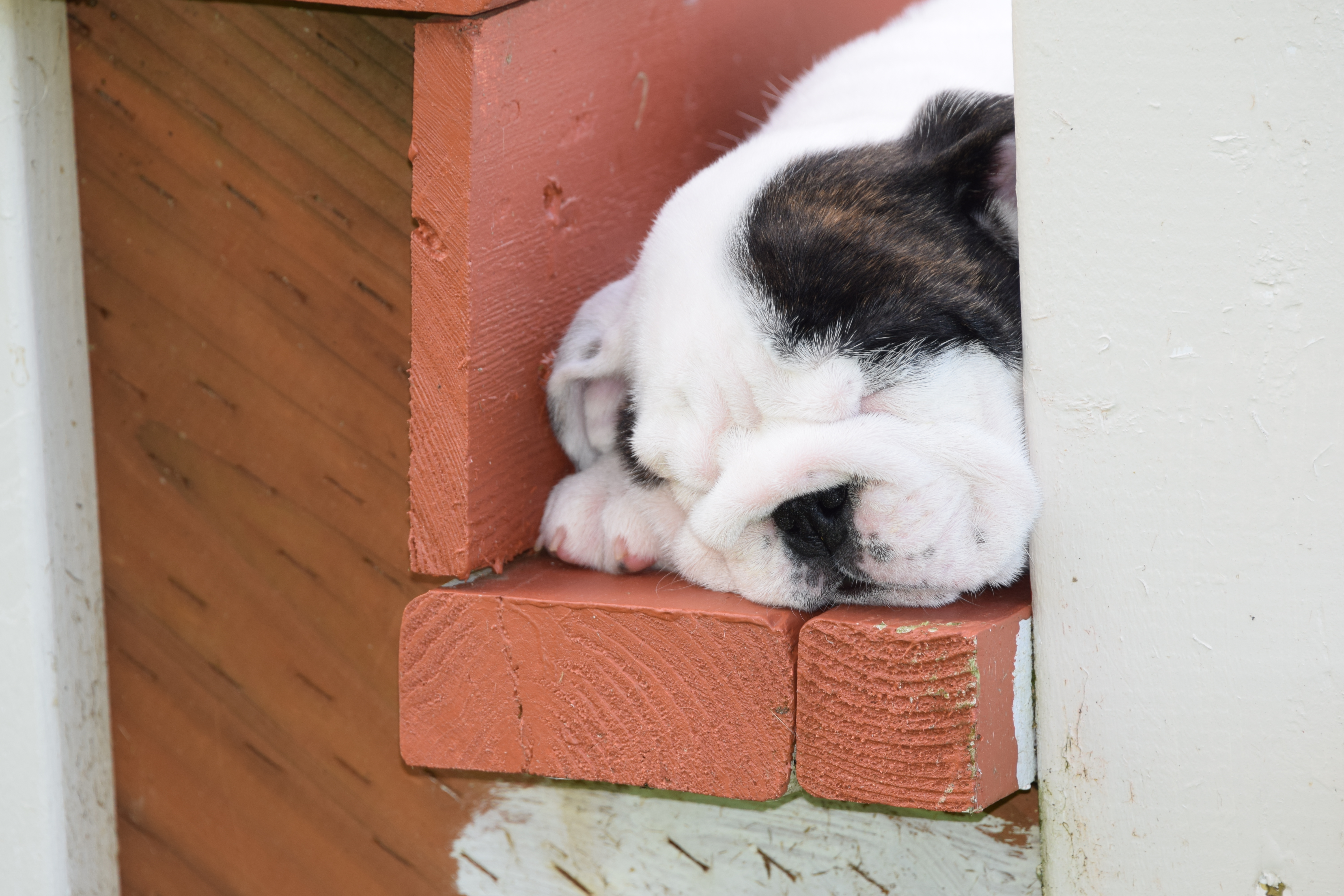
They sleep in the funniest places and positions! Like on the front porch steps.
14. Bulldogs may be stubborn. And they may try your patience from time to time…
It’s hard to stay mad though. Even when bulldogs are misbehaving, they can be hysterical. Bulldogs are such comedians!
15. But at the end of the day, the slobber and the stinky farts (and oh my God are they stinky) are all worth it.
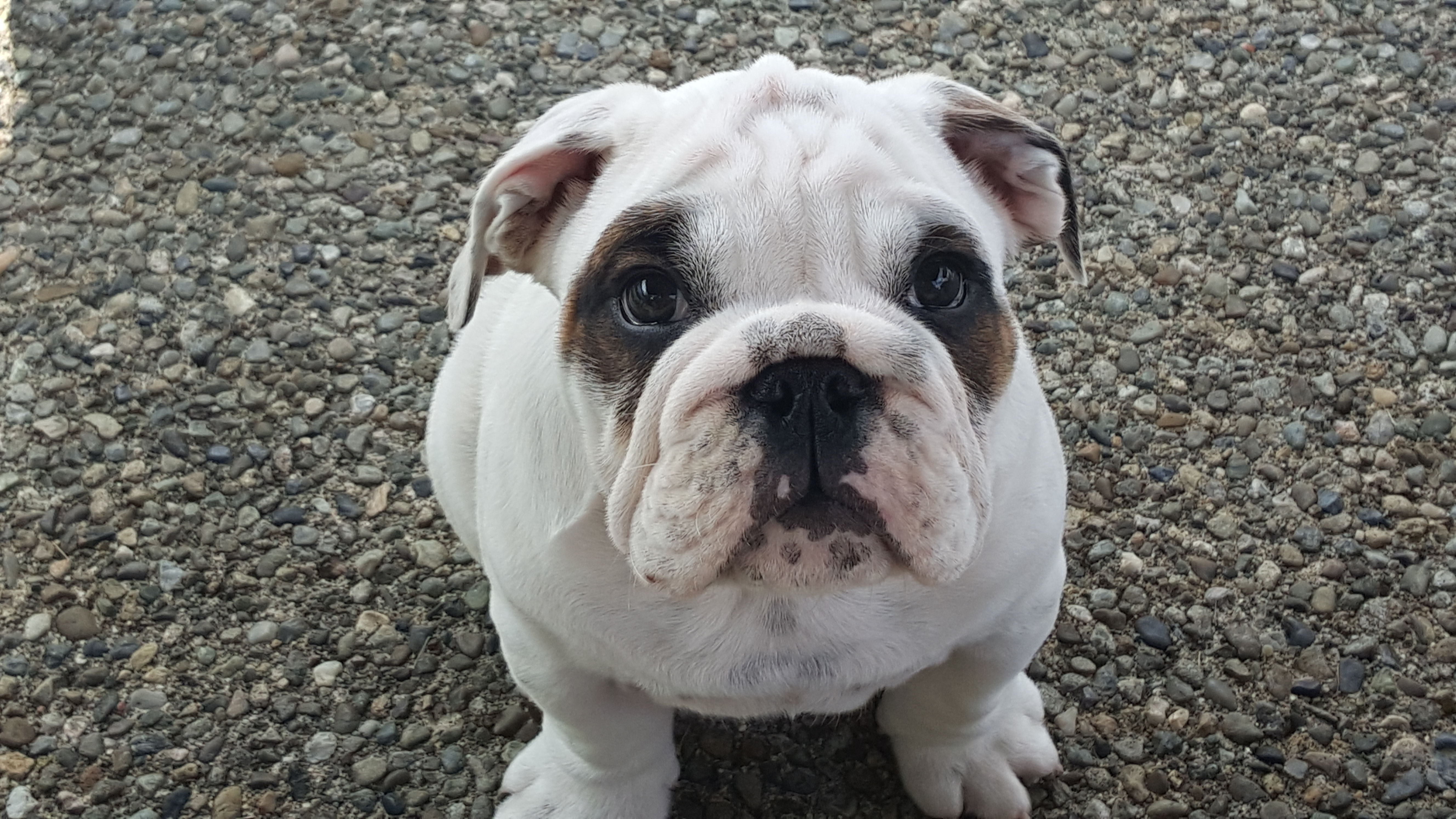
How could you not love this face?!
16. Because your bulldog is your best friend.
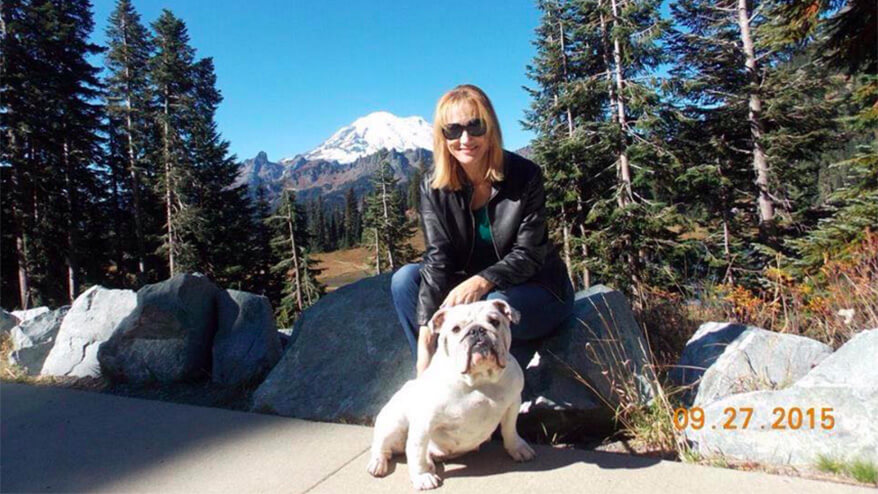
Always and forever.
17. And you can never have too many.
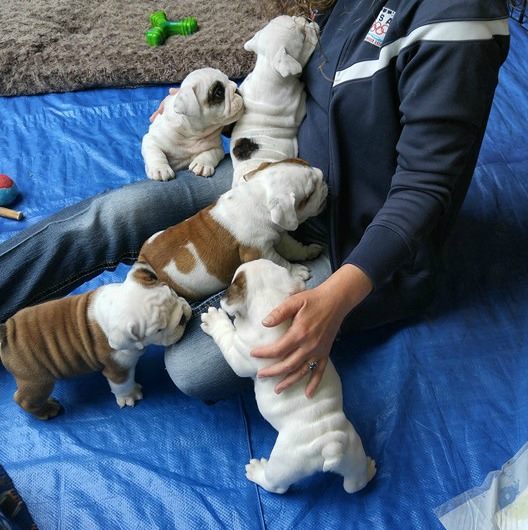
One is never enough!
About Cascade Bulldogs: Cascade Bulldogs is a blog dedicated to providing fun and educational information about bulldogs (or “English bulldogs,” as they are often referred). The blog is managed by Gail and Eddie, bulldog owners and breeders who live in the Seattle, Washington, area.
Related Posts:
Bringing Your Bulldog Home: How to Acclimate A New Bulldog Puppy

Adjusting to an unfamiliar situation can feel overwhelming or frightening for anyone. Your bulldog baby is no different. Whether the newest member of your bulldog brood is a two-month old puppy or an eight-year-old senior, if he’s moving into your home and meeting his new family for the first time, he’ll likely be going through an adjustment period and will need extra reassurance and comfort.
6 Tips for Acclimating Your Bulldog
When bringing home a new bulldog for the first time, the first 24 hours are some of the most important for helping to ensure your bulldog feels comfortable and secure in his new environment. The following six tips can go a long way in making your bulldog become acclimated to an unfamiliar living space and curious new housemates.
1. Bring him home in the morning
It is best to acquire your new puppy at a time when you can offer him your company and undivided attention for a few days. This is especially important as he is settling in. If you bring him home in the morning, he will have had time to feed, play and tire himself out before bedtime.
2. Let him get familiar with his new home
When your puppy first arrives, let him sniff around and familiarize himself with his surroundings; then introduce him to his bed.
Take care when introducing him into the household, as this can be a difficult and confusing time for your puppy. Your home is full of strange sights, sounds and smells that he may find exciting or overwhelming. He will be missing his mother, brothers and sisters and will look to you and your family to replace the company, comfort and security that he has left behind.
3. Name him right away
Choose a name for him as soon as possible. Be consistent and use it repeatedly as you talk to him; he will soon learn to respond.
4. Let him sleep
You will find that your puppy plays vigorously for short spells and then may retire to his bed for an hour or so. Sleep is as important for your puppy as it is for a baby, so don’t disturb him when he is resting. Young children in the family should also be taught that puppies are not toys.
5. Introduce him to the other pets
Introductions should be made gradually, on neutral territory and under constant supervision. Never leave a new puppy alone with an older cat or dog. Feed them separately until they have become friends.
6. Comfort him at night
For the first few nights your puppy will probably be restless and whimper when he is left alone. Wrapping a water bottle and a ticking clock in a blanket and placing it in his bed can be very reassuring for a new bulldog pup. But these items shouldn’t be made of rubber or plastic, or the puppy may chew them.
Above all, be kind, gentle and patient with your puppy during his introduction to your home. Don’t scold or speak harshly to him in the first few days, even if he is destructive or makes a mess—in his confused state, this can backfire and he may learn to fear you. This initiation period should be an enjoyable time in which you and your puppy can get to know each other and he can learn to trust you, thus forming the basis for a happy life together.
About Cascade Bulldogs: Cascade Bulldogs is a bulldog blog managed by Gail and Eddie Harris. It features famous bulldog show dogs Wildflower and Snow White as well as several of Snow White’s adorable bulldog puppies. Follow Cascade Bulldogs on Facebook and Instagram for weekly updates, cute photos and inspirational bulldog quotes.
Related Posts:
Dog Show Tricks to Teach Your Bulldog
Teaching your bulldog how to perform tricks on command is important even if you aren’t planning on entering your bulldog into a dog show. Bulldogs, like any dog breed, need mental stimulation in order remain healthy. Learning a new skill or command exercises your pup’s brain while strengthening the emotional bond between dog and owner at the same time. Your bulldog naturally wants to please you and will feed off your energy. If you’re happy he barked or sat on command, he will be, too. Training can also boost fitness, agility and confidence levels.
Whether you’re planning on having your bulldog compete in a dog show or you’re simply wishing to teach your dog a few new tricks, the dog show tricks listed below provide a solid foundation of tricks for beginner, intermediate or advanced skill levels.

How Dog Show Tricks are Categorized:
First, some details on how the American Kennel Club (AKC) evaluates trick dog titles and their corresponding tricks.
Dog show tricks are categorized by levels set forth by the AKC. Those wishing to earn official dog show titles must compete in the AKC titling event known as “Trick Dog.” There are currently five titles offered—Novice Trick Dog, Intermediate Trick Dog, Advanced Trick Dog, Trick Dog Performer and Trick Dog Elite Performer. In order for your bulldog to earn an AKC trick dog title, he or she must demonstrate mastery of a total of 10 tricks. The tricks must be performed in front of an AKC CGC Evaluator, with the exception of dogs competing for the Elite Performer title. Those entries are filmed and then evaluated via video submission.
You can learn more on the AKC Trick Dog FAQ page.
Below are further details on the titles and their required tricks.
AKC “Trick Dog” Titles:
1. Novice Trick Dog
To earn a Novice Trick Dog title, your bulldog must perform 10 skills from AKC’s Novice List. You must choose ten skills from the following list of 21 tricks:
- High five
- Bark on command
- Walk on a beam (board is a few inches off the floor)
- Crawl (must crawl on belly for five feet or more)
- Fetch it (ball or similar item must be at least 10 feet away. Bulldog must bring it within two feet of the handler)
- Hold (for at least three seconds)
- Jump through a hoop or over a bar
- Kennel up (go into crave)
- Kiss
- Paws up (place two front paws on a low stool or step)
- Push-ups (sit, down, sit, down, sit, down)
- Shake hands
- Spin in circle
- Touch it (hand or target stick)
- Tunnel (must go through agility tunnel or child’s tunnel)
- Find it (find item hidden under a cup)
- Get your—(toy, leash, brush)
- Get in (gets in box)
- Sit in box on command
- Get on low platform or step (all four paws must be on the platform or step)
- Hand signals “Sit,” “Stay” or “Come” (Choose one hand signal)
2. Intermediate Trick Dog
In order to be eligible for the Intermediate Trick Dog title, your bulldog must already possess the Novice title. Additionally, your bulldog must also perform 10 intermediate tricks, which include the following:
- Balance treat on nose or head
- Carry a basket (or other object)
- Catch (toy, ball, treat, etc)
- Crawl (must crawl on belly for at least five feet. You may use food or a toy to lure dog)
- Jump through handler’s circled arms or over handler’s leg
- Weave around handler’s legs
- Paws up (on handler’s arm)
- Pull a toy on a string or rope
- Push button/key to make a sound on a toy piano or other sound toy
- Roll over
- Find it game (must find treat or scented item under one of three cups)
- Sit pretty (sit up or sit with head tilted)
- Wave goodbye/hello
- Weave through six poles (may use food or toy to lure)
- Fetch it (20 feet away and your bulldog must deliver the item to the handler’s hand)
- Game (Your bulldog successfully uses treat dispensing item—puzzle, Kong, etc.)
- Go find (Your bulldog must find an item that handler has hidden)
- Go to your place (bed, mat or crate must be 10 feet away or further)
- Hand signals for sit, down, come, stand (Bulldog must be able to recognize three of the four hand signals).
- Wobble board
3. Advanced Trick Dog
For the title of Advanced Trick Dog, your wrinkle-faced pooch must have the Intermediate title, plus demonstrate mastery of 10 of the following tricks:
- Back up (walk backwards)
- Balance treat on nose, flip to eat when handler says “OK”
- Barrel (Bulldog rolls a barrel with two paws or stands on the barrel with all four paws).
- “Take a bow” (or curtsey)
- Circle right, circle left
- Cover eyes (Bulldog covers eyes with paws)
- Cover-up with a blanket
- Go hide (under a table, for example)
- Head down
- Hide your head (under a blanket or pillow)
- Jump into handler’s arms
- Jump over handler’s back
- Turn on light (use a pressure sensitive battery operated light)
- Open the door of a toy mailbox or refrigerator and get an object
- Play dead
- Follow commands of “sit” or “down” from a distance of 15 feet
- Find scented objects underneath cups (choose from five)
- Take a tissue out of a box and bring it to the handler
- Take a toy to a box and drop it inside
- Weave through poles without a food or toy lure
4. Trick Dog Performer
To earn this title, your bulldog must perform a routine that includes 10 tricks. At least three of the tricks must include props. The choice of which tricks to use is left up to the owner/handler, but they must be intermediate, advanced or performer-level tricks. The goal is to use the tricks to tell a “story.”
Here are several examples:
- Pretend to dig
- Lift leg and pretend to urinate on a fire hydrant
- Limp
- Nod or shake head yes or no
- Push a baby stroller
- Paint
- Pretend to dial phone
- Walk with stuffed animal on back
- Climb into suitcase and close the lid
You can find more examples and further details on the AKC Trick Dog Performer PDF.
5. Trick Dog Elite Performer
This is the highest level of the Trick Dog event. Your bulldog must perform a scripted routine that includes a “story,” 10 tricks, and at least five props. Evaluations are done via video submission.
You can find further details on the AKC Trick Dog Elite Performer PDF.
How to Teach Your Bulldog Show Tricks:
Bulldogs can be stubborn at times, so they may need extra encouragement and praise to perform tricks on command. Luckily, bulldogs amicable nature and quick wit make them good sports and fast learners.
If you’re new to dog training or a first-time bulldog parent, here are a few helpful tips to get you started.
-
Train with a clicker
Train your bulldog dog to associate the sound of a clicker with a treat. Clickers work better as a reward system than treats alone because your pup will know immediately if he’s done a good job, even if it takes a moment for you to get him a treat.
Keep in mind that it may take up to a week for your dog to start associating the sound of the clicker with the treat, so it’s recommended that you practice two to three times per day.
-
Be diligent about using commands
One way get your bulldog to start associating a command with a specific action is to say the command after your dog spontaneously does the action. For example, if your bulldog dog sits, say “sit” immediately after he does it.
Be patient and remain diligent. Your bulldog may need to hear a word anywhere between 10 to 100 times before he begins to understand it.
-
Arrange a practice schedule
It’s important to start off slow, especially if your end goal is to have your bulldog compete in a dog show. Have your dog practice her tricks in a low-stress environment free of distractions. Say a command and wait for her to do it. When she does, click the clicker and give her a treat.
After your bulldog has mastered performing the trick in a calm and familiar environment, start practicing in higher stress environments, like parks or in the presence of strangers. Show rings can be loud, crowded and overstimulating, so it’s important that your bulldog learn to obey your commands in a wide variety of settings.
Add more distractions every week until your dog is able to focus even in the most noisy or chaotic environments. Reward your bulldog with praise and treats each time she is successful.
-
Slowly wean your dog off treats
Start periodically eliciting a command without a treat. It’s vital that dogs do not get too accustomed to being treated because then they’ll only obey commands when a treat is involved.
About Cascade Bulldogs:
Cascade Bulldogs is a bulldog blog managed by Gail and Eddie Harris, a couple who breeds and raises bulldog puppies in Seattle, Washington. They are the proud parents of several celebrity bulldog show dogs, including Wildflower, Snow White and Declan.
Related Posts:
How to Tell If Your Bulldog Is Overheating
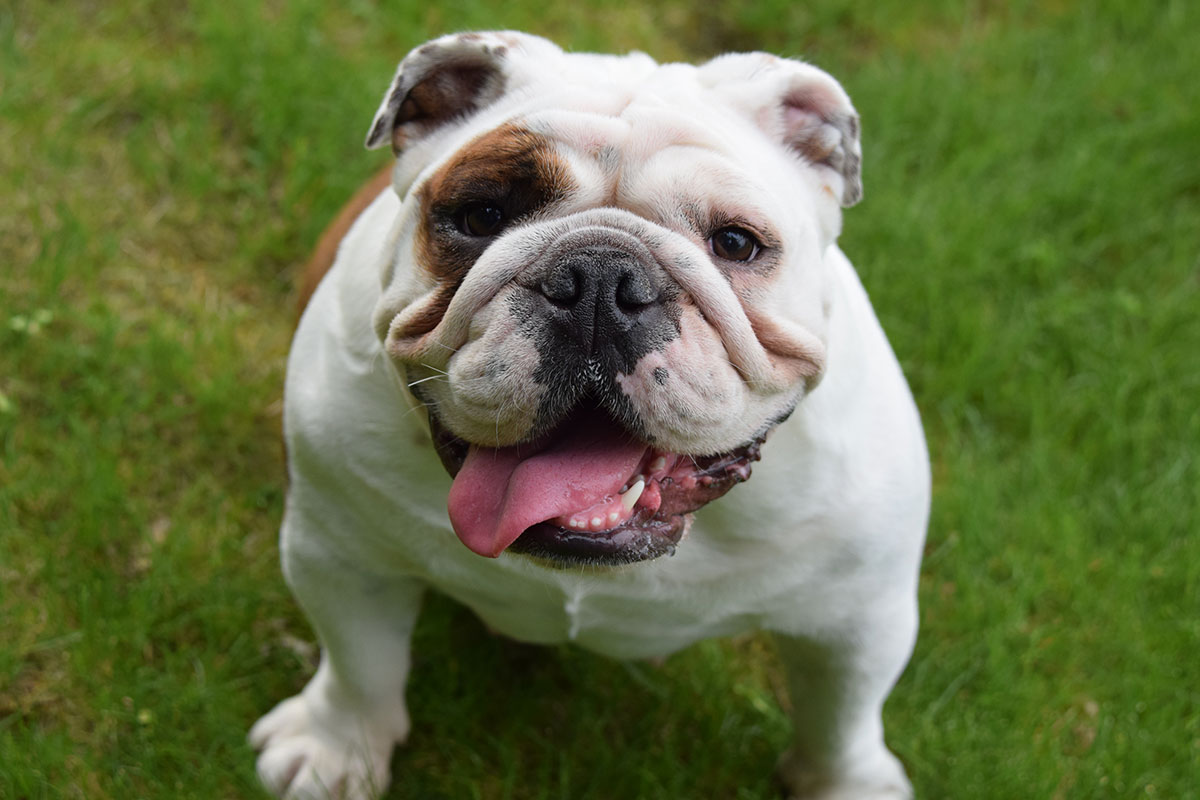
Wildflower the Bulldog loves to run and play outside. But when she starts panting heavily, we know it’s time for her head back inside and cool off.
When bulldogs get hot, they cool off the same way all dogs do: They pant. But because a bulldog’s breathing system is shorter than the average dog’s, panting isn’t always easy and they may struggle to cool down quickly enough. It’s important that when your bulldog is walking or playing outside in hot weather that you monitor him or her closely to avoid missing the early signs of heat stroke.
How to tell if your bulldog is overheating:
Red ears—When a bulldog is beginning to overheat, the inside of his ears may flush red. If you notice this, there’s no need to panic. But know that it may be time to get your bulldog out of the sun and inside somewhere where it’s cooler.
Red, floppy tongue—If your bulldog’s tongue looks redder than usual and if it’s flopping out of his mouth while he’s panting, this may be a sign that your bulldog is in the beginning stages of heat stroke.
Heavy panting—One of the biggest signs your bulldog may be overheating is if he or she is panting heavily. Dogs do not sweat, so the only way they can regulate their body temperature is through panting. While panting during exertion is normal, heavy, labored panting is not.
Foaming—If your bulldog begins to pant so quickly that he or she starts to foam at the mouth, this is a sign that your bulldog’s temperature is dangerously high. If he shows signs of labored breathing followed by a “roaring” sound, this means the foam has now blocked his airway and your bulldog is struggling to breathe. If this happens, clear the bulldog’s throat by scooping out the foam with your fingers.
What to do if your bulldog has heatstroke:
Place your bulldog in a cool bath—Stand your dog up in the tub and wet him with water, paying extra attention to the head and tail. Rub her body with an ice pack or ice cubes.
If you don’t have a bathtub, pour water on him—Wet along his head, neck, underbelly and the inside of his legs.
Unblock the airway—Squirt lemon juice into her mouth, aiming for the back of the throat. This will help to clear away any foam that has formed. If lemon juice isn’t available, clear the foam away with your fingers. It’s important the bulldog’s airway remains unblocked.
Don’t let your bulldog gulp water—If he drinks too much water at once, he might vomit. This may cause even further blockage.
Take her to the vet—If your bulldog still looks distressed after you’ve unblocked the airway and cooled her off with ice and a water bath, take her to the vet. Lay her on a cool, wet towel in the car and continue to speak to her in quiet, calming tones throughout the drive over.
Preventative measures:
Preventing heat stroke is easy if you remain vigilant and follow a few simple tips.
- Take precautions when playing outside
If your bully loves to run and play in the park or backyard, make sure you periodically sponge him off with a wet sponge or towel to ensure he’s keeping cool. It can also help to wet his feet (particularly under his toes) and put ice cubes in his bowel. If your bulldog enjoys cool water baths, let him soak in a kiddie pool.
- Limit exercise on hot days
When it’s extremely hot out, it’s best to exercise your bulldog in the early morning or evening. If you take your bully for a walk, be sure to carry water with you. If your bulldog has white-colored ears, know that he or she may be extra vulnerable to skin cancer.
- Watch out for humidity
Extreme temperatures aren’t the only thing tough on bulldogs; humidity is, too. When bulldogs pant, they are working to remove moisture from their lungs so that they can keep cool. When the humidity is high, bulldogs have to work that much harder to eliminate the extra moisture, and that can also cause them to overheat.
- Take their temperature
If you’re unsure if your bulldog is overheating, take his or her temperature. If the thermometer shows a temperature of 104 degrees or higher, your furry guy or gal may have heat stroke. You’ll then need to take immediate action to cool your bully down.
- Don’t rely on a fan
Many dog owners assume if they turn on the fan before they leave the house, that will be sufficient for keeping their bulldogs cool. Dogs do not respond to heat the same way humans do, however. Since dogs often sweat through their feet, for example, an overhead fan won’t be of much help.
- Provide a lot of shade and water
Keep your bulldog protected from the sun by providing ample amounts of shade. Trees, umbrellas, tarps or anything else that doesn’t block air flow is best.
Whatever you do, do not keep your bulldog outside in a dog house. While the dog house may provide shade, it restricts air flow. In fact, sitting in a shaded dog house is actually worse then sitting in the direct sun!
A final note:
Don’t assume your bulldog will know when he’s about to overheat. If you’re outside in the sun, your bulldog may continue running and playing until he collapses, and by then, heatstroke might have already set in. Take preventative measures by periodically hosing your bulldog down or wiping him with a cool wet cloth or icepack.
Remember: The best way to treat heatstroke is to prevent it from every happening.
About Cascade Bulldogs: Cascade Bulldogs is a bulldog blog dedicated to providing bulldog care and tips. The blog features two famous bulldog show dogs, Snow White and Wildflower.
Related Posts:
Photos from Cascade Bulldogs Annual Bulldog Family Reunion!
Each year at Cascade Bulldogs we hold a Family Reunion for all of Snow White’s adorable puppy offspring. Here are some of the photos from 2017’s big bulldoggy event.

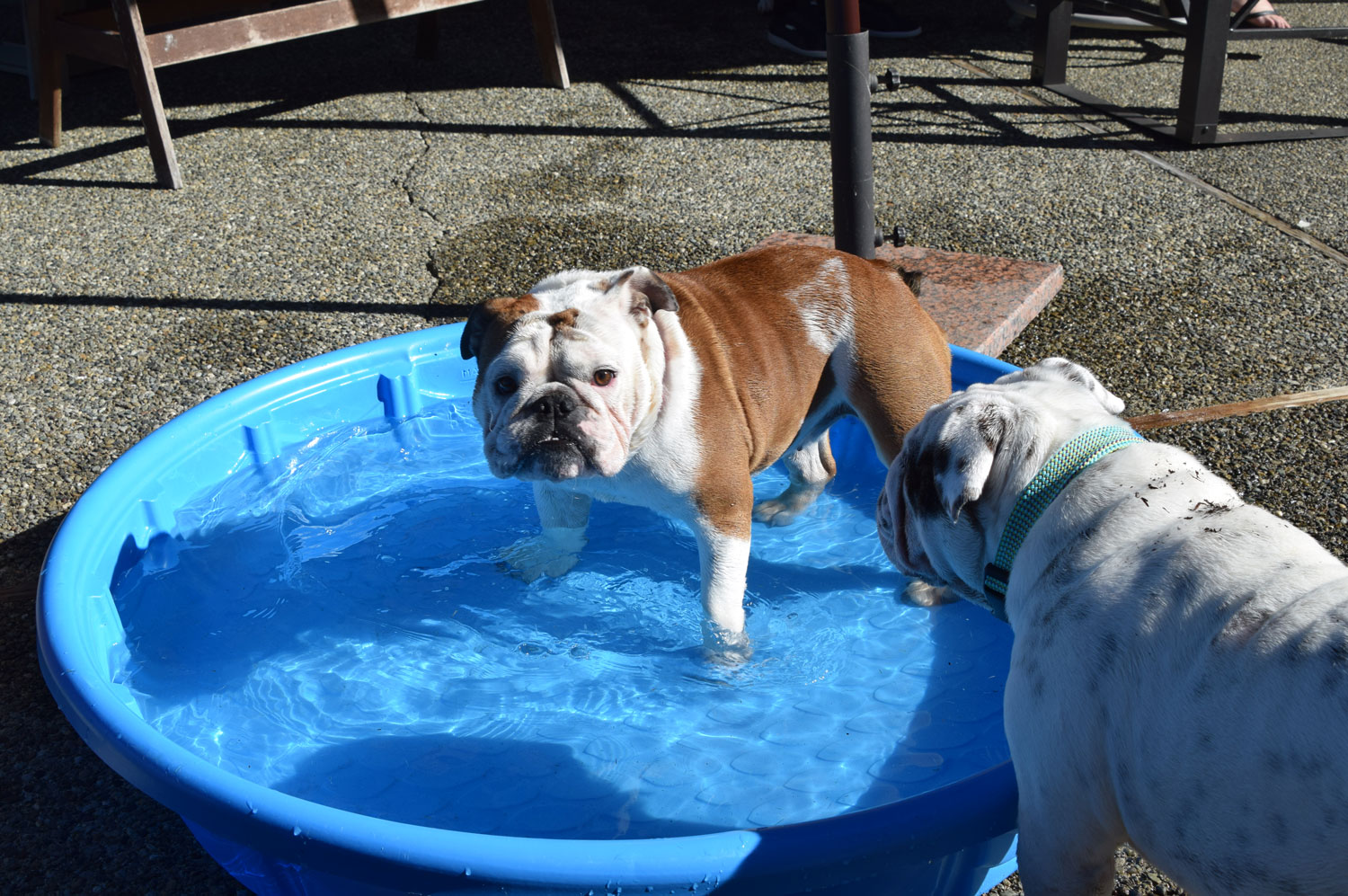
Lounging in the pool.
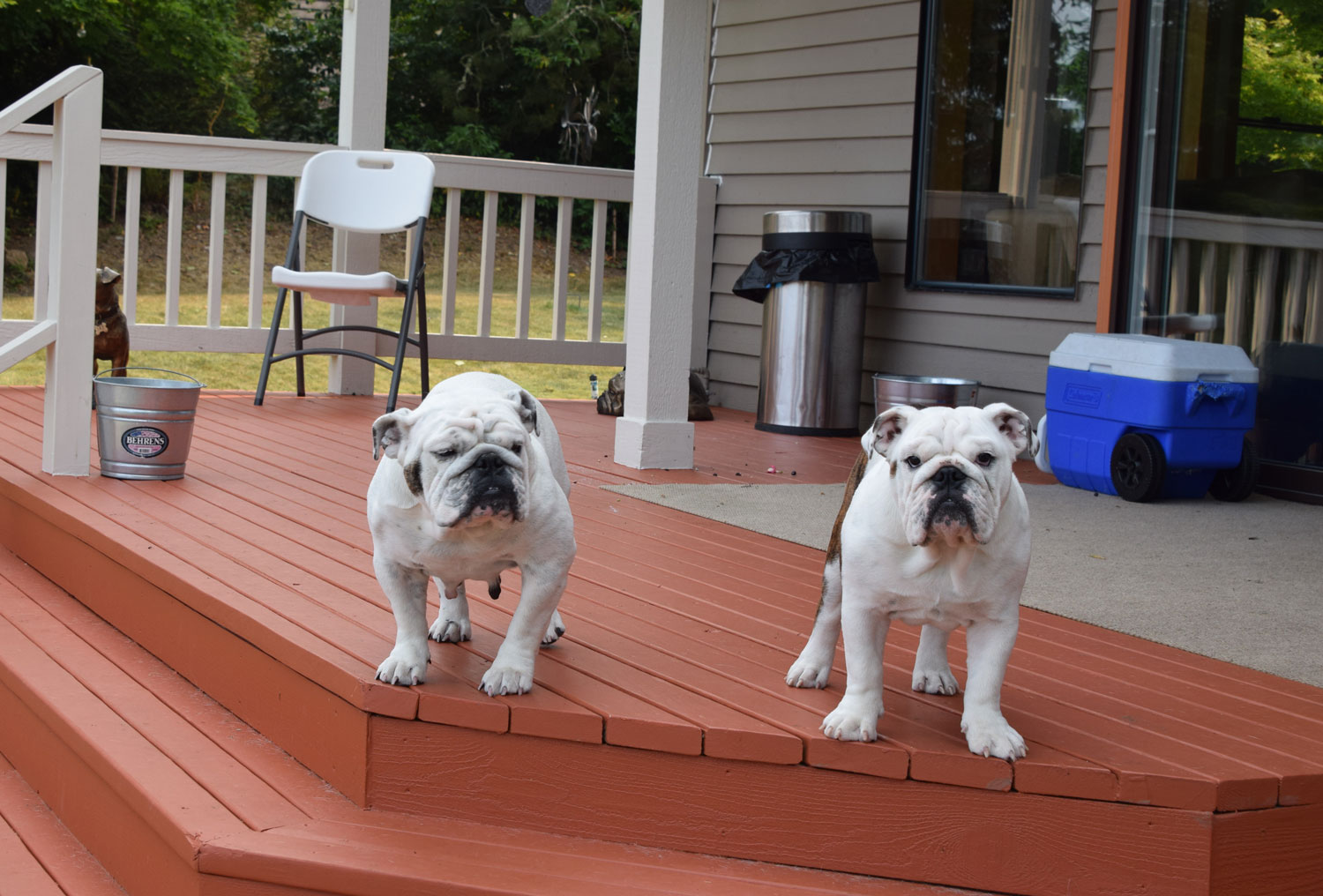
Yes? May we help you?
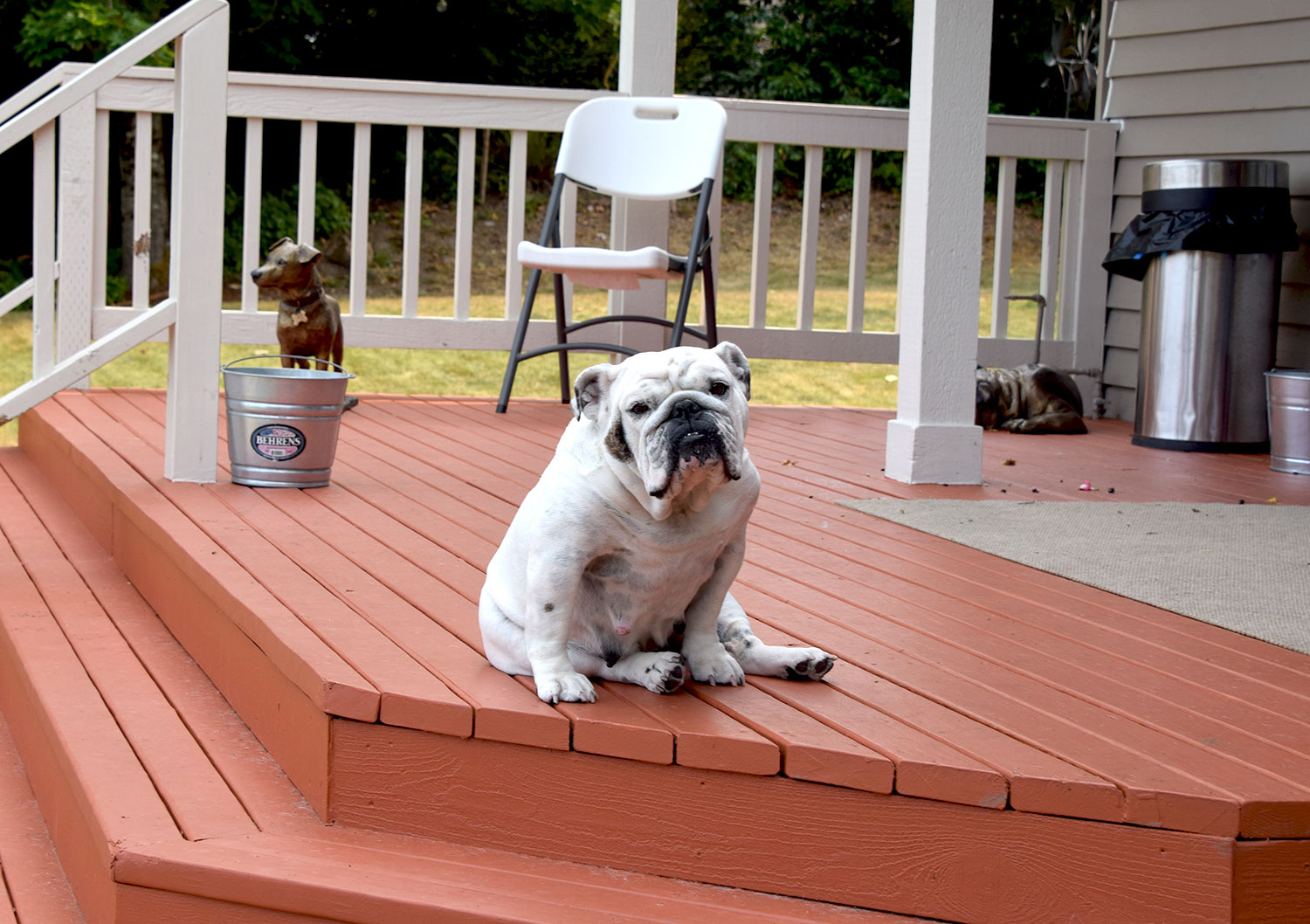
Just taking a break.
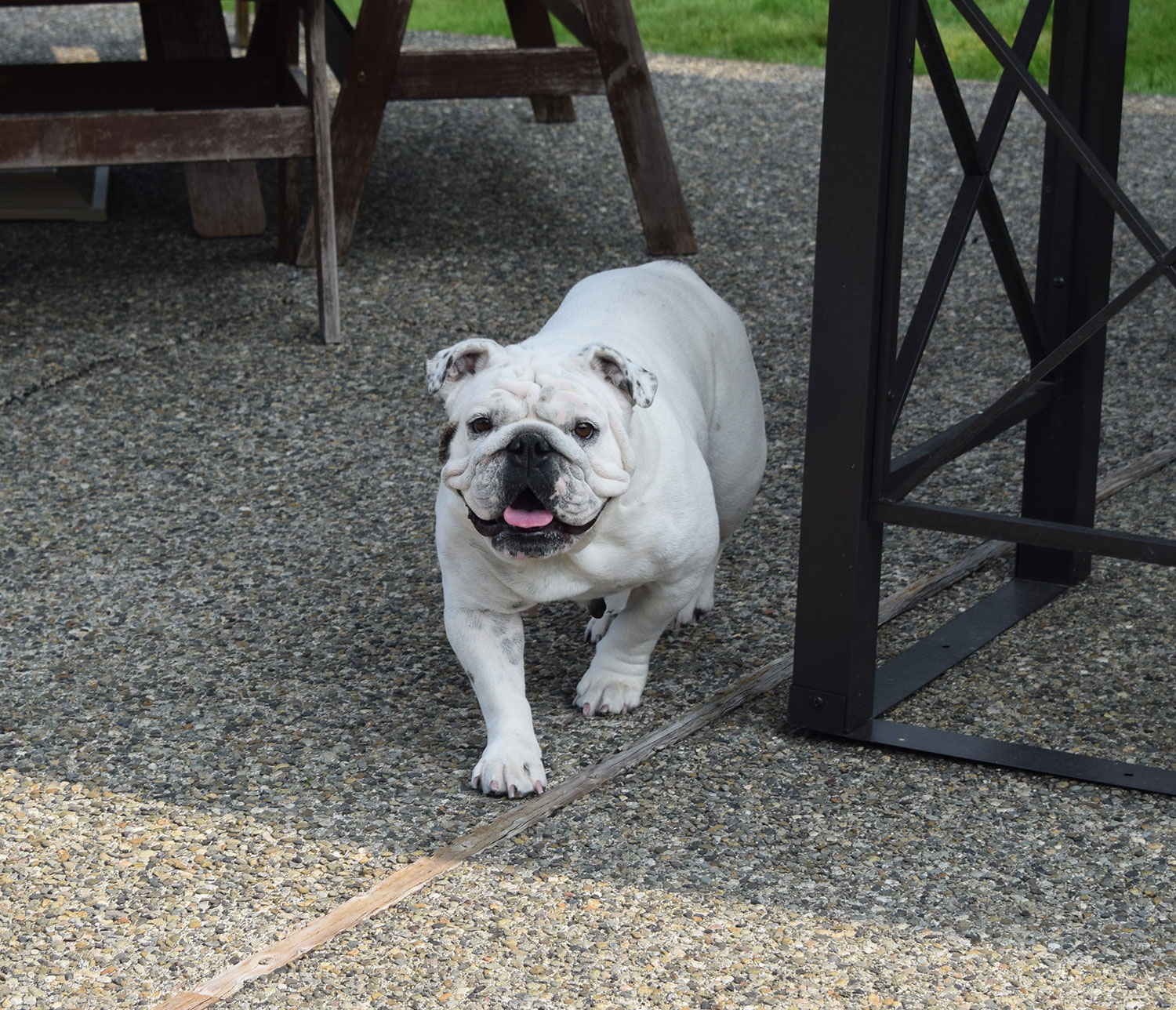
What a happy pup!
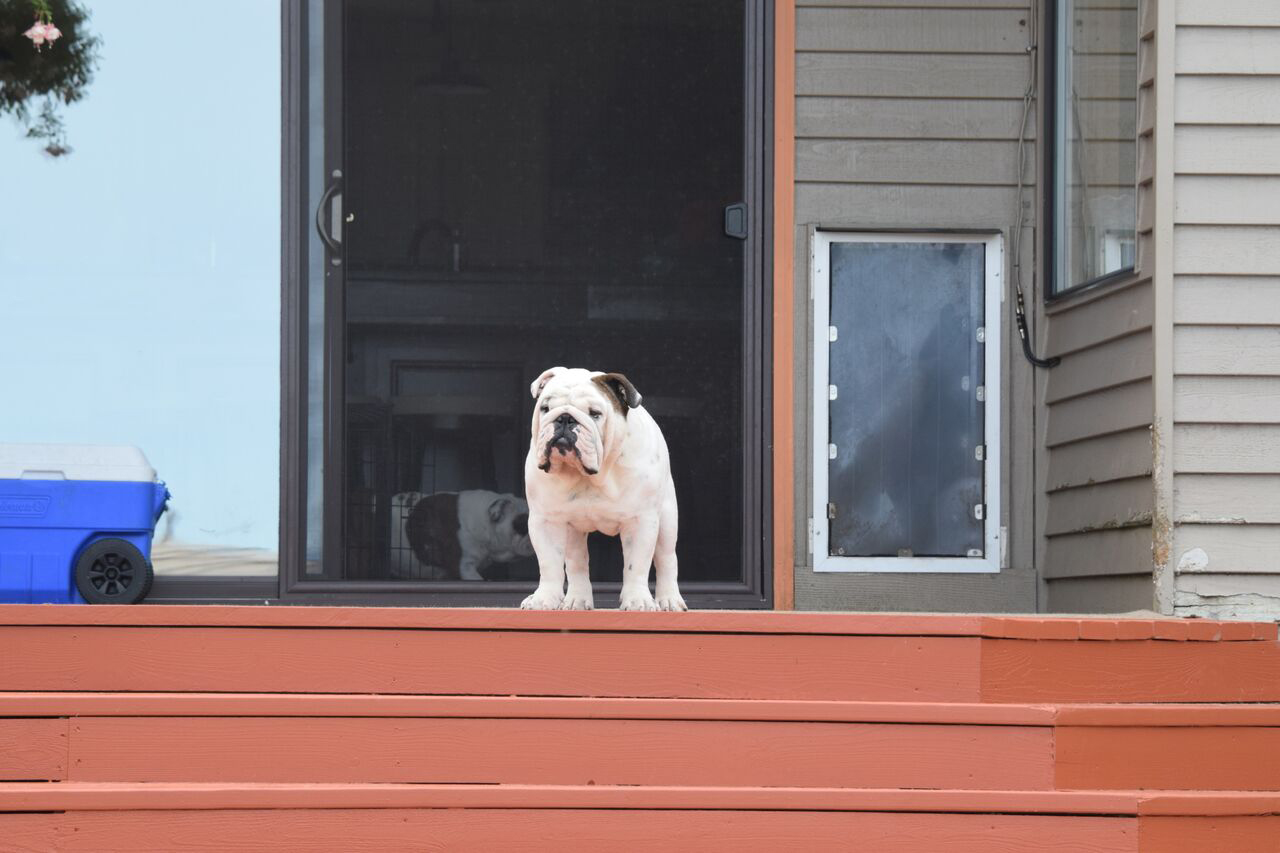
Hey guys! Wait for me! I want to play, too.

We’re following the leader.
We’ll be having another family reunion next year so be sure to follow us on Facebook and Instagram for updates!
About Cascade Bulldogs: Cascade Bulldogs is a bulldog blog that stars two champion show dog bulldogs, Snow White and Wildflower as well as Snow White’s puppy, Declan. The site is managed by Eddie and Gail, who breed, raise and show bulldogs in Seattle.
Related Posts:
- Common Bulldog Health Problems
- Bulldog C-Section Planning Tips
- Is a bulldog right for me?
When You Lose a Dog Show: How to Start Winning
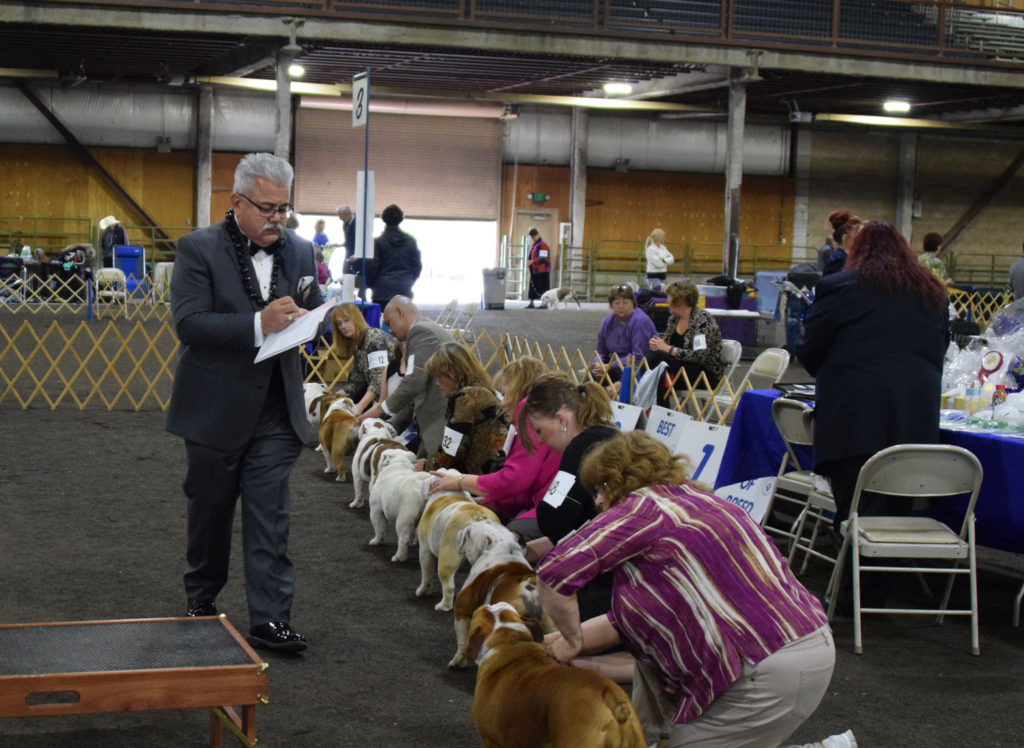
Wildflower the Bulldog competing at a dog show in Washington.
Training a dog for competition takes dedication and patience, which is why it can be frustrating when you lose a dog show, especially if the losses begin to stack up. Sometimes, no matter how much training time you put in beforehand and how well you prepare, you’ll arrive at the day of the show and your dog simply won’t be in the mood to compete. Unfortunately, when that happens, there’s not a lot you can do—Just know that everyone has an off day; it’s normal. Other times, however, there may be a few bad habits you or your dog have picked up along the way that may be hindering your chances of winning.
If you find yourself continually returning home with less-than-stellar performance marks, it may be time to reexamine your strategy. The following are a few tips to put into practice to help your dog turn his losing streak around and start bringing home some “Best in Show” wins.
-
Train without your dog
One key component to winning a dog show is confidence. While the dog must appear confident, so too must his handler! This is why it can help to first practice patterns such as heeling without your dog. You’ll likely feel a little silly at first, but running through the course on your own—paying particular attention to your speed, posture and facial expressions—will make you feel more confident, which can boost your dog’s confidence level as well. This will make him more apt to trust and obey your commands. Dogs are skilled at reading body language and will respond well if their handler appears calm and self-assured.
-
Walk with enthusiasm
Your dog not only feeds off of your confidence, but your enthusiasm as well. Be mindful not to walk at a slow, dawdling pace. Put some pep in your step and exert excitement instead. Your dog will follow suit, and will have fun while doing so—and if you’re dog appears to be enjoying himself, the judges will take note.
-
Train in several different settings
If your dog perfects his commands at home but struggles to stay focused in the ring, it may be because he hasn’t gotten enough practice obeying commands in unfamiliar settings. Getting him accustomed to performing in new surroundings can help him feel more comfortable when it comes time to enter the ring.
-
Use your dog’s name sparingly
If your dog is struggling to follow a command, refrain from repeating his name over and over in hopes that he will catch on. This will likely only frustrate both you and your dog and it won’t win you any points with the judges. Instead, try to make the command simpler for the dog to understand, then say his name, but only to get his attention. Once you have his attention, make sure to follow it immediately with a command, so as not to create confusion.
-
Try switching up your commands
Pay close attention to your dog and become aware of works for him and what doesn’t. If he is having trouble with a command, this may mean that you need to switch your phrasing. For example, if your dog isn’t responding to the typical “Heel” command, you might want to change it to “Let’s go.” Some dogs also have trouble differentiating “Sit” and “Stay” (they both have ‘s’ and ‘t’ sounds), which is why some trainers prefer to use “Wait” instead to help eliminate confusion. No matter which phrase you choose, make sure to keep your tone warm and encouraging.
-
Walk through the course on your own first
Be sure to walk through the course on your own beforehand—and do so several times. The first time you do a walk-through, just focus on the general feel and flow of the course. On the second walk-through, focus on the stations and obstacles and plot how you’ll handle each move. Then, on the third walk-through, make note of any areas you believe may prove difficult, then practice the commands you would like to use in these areas.
After you’ve gotten a sufficient sense of the course and have developed a strategy, you can begin practicing with your dog by your side.
-
Re-read the event rules
If you’ve followed all these tips and find your losing streak still hasn’t improved, it could be time to reexamine the event rules. Every event is different and what may be considered acceptable in one event may not hold true for another. Study the rules thoroughly, paying close attention to which commands you’re allowed to use and how often you’re allowed to use them.
Cascade Bulldogs is a bulldog blog featuring Snow White, Wildflower and Declan, three show dog bulldogs who live in the Seattle, Washington area. Our blog features useful tips on how to care for, train and show bulldogs (also commonly referred to as “English” or “British” bulldogs) as well as cute photos of Snow White’s adorable litter of puppies.
For more information on showing bulldogs, read our posts:
How to Care for a Pregnant Bulldog

Here is Snow White, pregnant with her first litter of puppies in 2016.
There’s a lot that goes into breeding a dog of any breed, but because bulldogs must be bred through artificial insemination, breeding a bulldog can be particularly complicated. Careful planning and education, as well as the time available to devote to caring for your bulldog before and during the pregnancy is vital.
While the best person to go for advice is always your veterinarian, here are a few tips to get you started:
Caring for a Pregnant Bulldog: 4 Tips for First-Time Bulldog Breeders
1. Take her to the vet before you begin the breeding process
You can mix up her diet a bit and feed her hamburger, eggs, or skinless white chicken meat. Just be sure that they are cooked thoroughly. Adding garlic to her food may be a good idea as well, as garlic is high in amnio acids, zinc and potassium. It also assists the liver and is a good detoxifier.
2. Thoroughly research the stud beforehand
Before breeding your bulldog, you want to research what kind of male dog to match her with. Take the time to get pedigree information on the dog and review his health records as well as the health records of his parents. Ideally, it’s best to find one that has sired healthy pups in the past.
You can find bulldog owners online or at dog shows. Once you have found a good match, you can start planning the breeding process with the dog’s owner. There are several breeding options to consider: trans-cervical implants, artificial insemination, or surgical implants.
3. Think strategically about what to feed her during pregnancy
When you’re preparing your dog for pregnancy, it’s important to keep her diet consistent so she remains at a healthy weight. Feed her only high quality premium dog food with an added daily supplement that includes folic acid. If you already use a high quality brand, stick to feeding her what she is used to.
After you confirm her pregnancy, begin to steadily increase her food portions. It may be necessary to split her meals up into 3 or 4 small meals per day so that she doesn’t get too full after one big meal. If she ends up carrying a huge litter, this will become important as she will need extra nourishment throughout the day.
You can mix up her diet a bit and feed her hamburger, eggs, or skinless white chicken meat. Just be sure that they are cooked thoroughly. Meat-flavored baby foods also make a good substitute. Mixing garlic in her food may be a good idea as well, as garlic is a detoxifier and assists the liver with waste processing. Garlic is also high in amino acids, potassium and zinc. You can read more about the health benefits of garlic here, though as always, make sure to consult with your veterinarian before devising a diet plan.
If at any point she stops eating, take her to the vet right away.
4. Keep her healthy
Be sure to stay on top of her vaccinations and preventative heart worm medication throughout her pregnancy. If she lives in an area where ticks or fleas may be present, administer the proper medication monthly. There are specific medications that are best for pregnant dogs. You should talk about these with your DVM before you begin the breeding process.
When she first begins to bleed, schedule an appointment with your veterinarian as soon as possible. They will examine her and give her a progesterone test to make sure that the pregnancy is going smoothly. The DVM will also likely measure her hormones during this visit. You should request a luteinizing hormone test to make sure she is ovulating normally. Most clinics will be able to do these tests the day of your visit.
About Cascade Bulldogs: Cascade Bulldogs is a website that provides info on caring for, training, breeding and showing bulldogs. It stars three celebrity bulldogs: Wildflower, Snow White and Declan.
How To Train a Bulldog Puppy: Tips for New Bulldog Parents

Introducing a new puppy to your family, especially a bulldog, can be a fun and exciting experience. If you are not prepared and knowledgeable on how to train a bulldog puppy, however, that rewarding experience can quickly turn frustrating. A lack of proper training can cement bad habits and encourage stubborn behavior in your bulldog that will later need to be unlearned. After all, puppies are like children—They’re easier to teach and train when they’re young. Thus, if you want to save yourself time (and a few chewed shoes), it’s best to reenforce good behavior early on.
How to Train a Bulldog Puppy: The Basics
Your ultimate goal in puppy training should be to do what you can to make your puppy’s day-to-day life predictable and regimented. This will make her life (and yours) a lot less stressful. The best way to do this is to develop a daily routine.
Daily routines should include the following:
- Designate a food and water location – Keep your puppy’s food and water bowls in the same designated area. This will teach your puppy where he can (and can’t) eat, which will help establish healthy boundaries.
- Feed only during specific meal times – Decide on the specific times of day when your puppy will eat and only feed him at those designated times. Avoid “free feeding” because this may lead to your puppy overeating, which can cause weight problems later on. During theirfirst six months, puppies should be fed no more than 3-4 times per day. At six months of age, that number should decrease to twice a day. If you want to learn more, The American Kennel Club (AKC) provides details on how often you should feed your puppy as well as which types of foods are best for their growing bodies.
- Stick to a regular sleeping schedule – Specify an area where your puppy will sleep and place his bed there. Also, be sure to establish a somewhat regular sleep schedule so your pup understands when it is time to go to sleep and wake up.
- Begin house training at 12-16 weeks of age– Teaching your dog where it is acceptable to potty is vital so you can avoid accidents in the house and messes in your yard. Be patient. It typically takes puppies four to six months to become fully house trained, and sometimes it can take as long as a year.
- Provide toys–Make sure you keep plenty of toys on hand for your pup and teach her where the toys are and what is acceptable to play with. This will help to ensure she doesn’t decide your shoes or throw pillows make for an interesting treat.
- Start using basic command words at 7 weeks of age —Many assume puppies won’t be able to master commands until they’re older but that’s simply untrue! Puppies can understand basic commands as young as 7 to 8 weeks of age, so it’s smart to start training your pup to “sit” and “stay” as soon as you take him home from the breeder. What’s more, a good breeder will have likely already have started teaching your puppy basic socialization skills, so it’s possible your puppy will have already been introduced to those commands and others. Keep in mind, however, that puppies have short attention spans. Your puppy will likely only be able to focus on the commands for five minutes at a time, so make sure to keep your training sessions brief, but interspersed throughout the day. A good goal is to have three, 5-minute training sessions each day, for a total of 15 minutes per day.
4 Puppy Training Tips:
1. Avoid treat training if you can
Treat training can make teaching a bulldog puppy difficult because it may cause your puppy to only listen to commands when she is hungry or expects a treat. If you can, try to persuade your puppy to follow your commands using praise. Instead of feeding your puppy a biscuit each time she obeys a command, for example, tell her “good dog” and pet her head or scratch behind her ears.
2. Be firm and consistent with your commands
It’s also important to establish early on your role as an authority figure. Since dogs have a pack mentality, one of the first steps in bulldog puppy training is to clearly demonstrate that you are the pack leader.
You can do this by being firm with you commands and making sure to show your displeasure when your puppy misbehaves. Be careful to be consistent, however, as to not confuse your dog by accidentally rewarding the wrong behavior. For instance, if you are firm with your scolding but then, out of guilt, give your dog a pet, he may take this as a sign of reward. You should show your dog that the only way to gain your affection is to listen and obey your commands.
3. Use lots of praise
If you have a puppy that constantly jumps on people and you want to stop this activity, simply guide the puppy back to the floor and firmly say “no.” When the puppy listens and stays seated, you can then reward him with praise. Praising with words such as “good”, “good boy” or “good dog” in a friendly tone will show your puppy that you are proud of him and approve of his behavior.
4. Only teach one command at a time
In order to avoid overwhelming your bulldog, stick with teaching one command at a time. Do not move on to a new word until he has mastered the previous one.
About Cascade Bulldogs:
Cascade Bulldogs is a bulldog blog managed by Gail and Eddie Harris, two bulldog enthusiasts who live in the Seattle, Washington area. Their bulldogs, Wildflower, Snow White and Declan, are celebrity show dogs who compete in dog shows across the country. You can follow all of their adventures on the Cascade Bulldogs Facebook page.
Snow White’s First Litter Turns 1! Happy Birthday, Cute Puppies!
One year ago this month, in March 2016, Snow White the Bulldog delivered a litter of adorable bulldog puppies.
Here are the puppies in March 2016:
And here they are in March 2017, all grown up!
They’ve all gone to live in their forever homes, where they are well loved and cared for by their families. We recently asked several of those families to send us pictures of their pups and they happily obliged. As you can see from the photos, all the puppies appear to be healthy and happy! Although we miss them dearly, we’re grateful to know that they’re doing so well and have found a cherished spot in each of their new family’s hearts and homes.
Without further ado, meet Snow White’s first litter.
Rubble The Bulldog
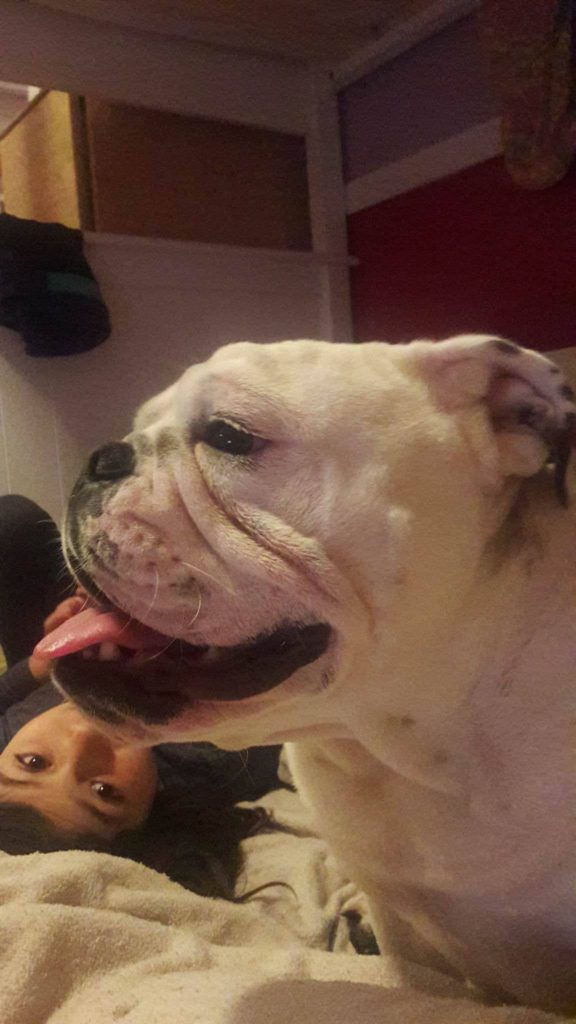
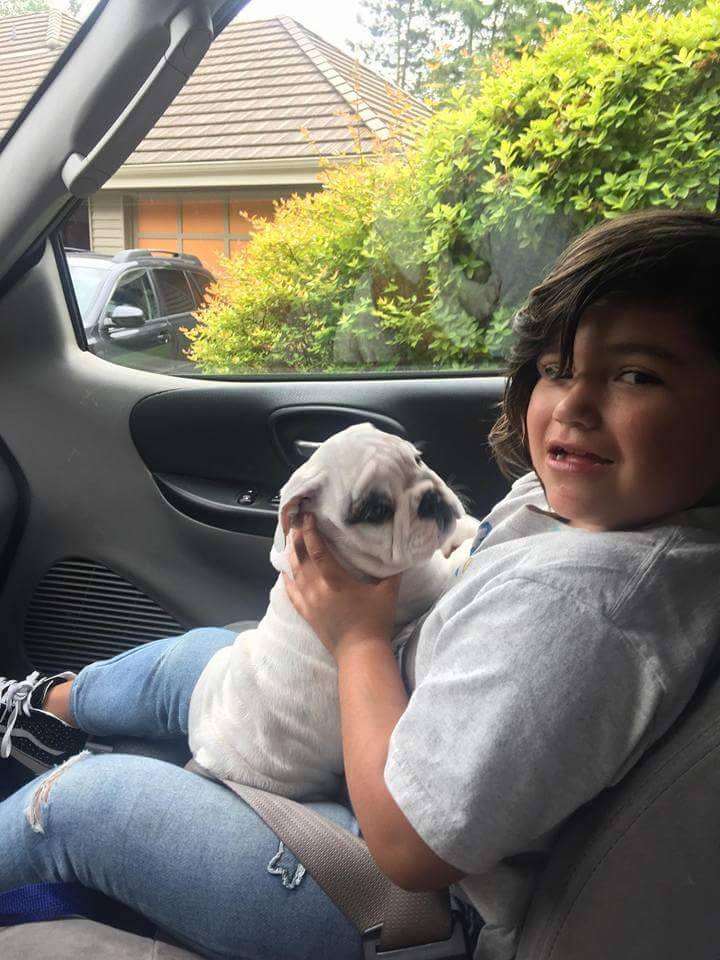

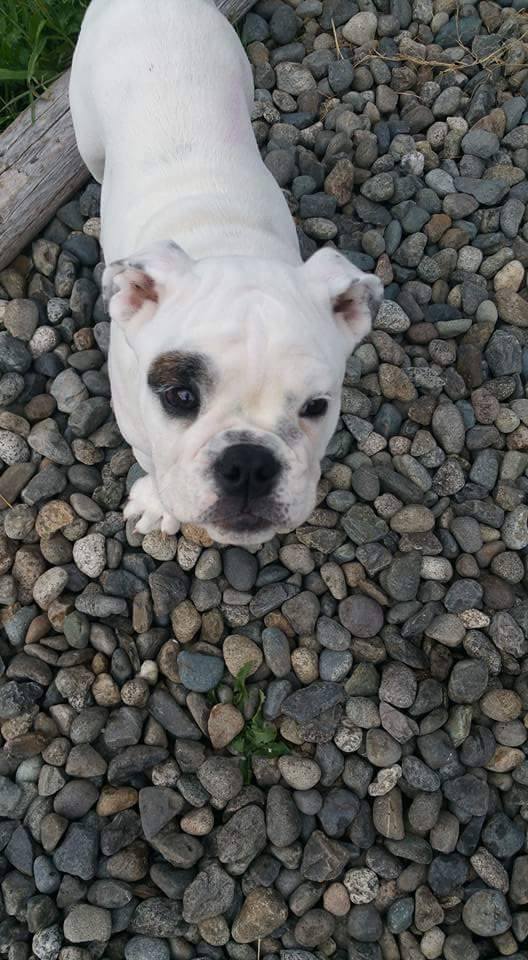
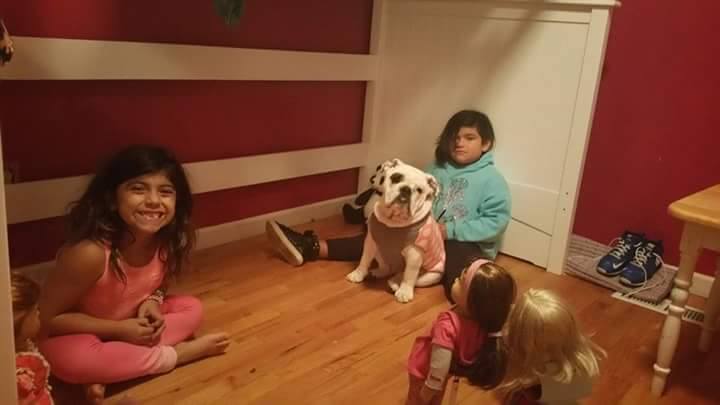
Rubble’s Birthday Party
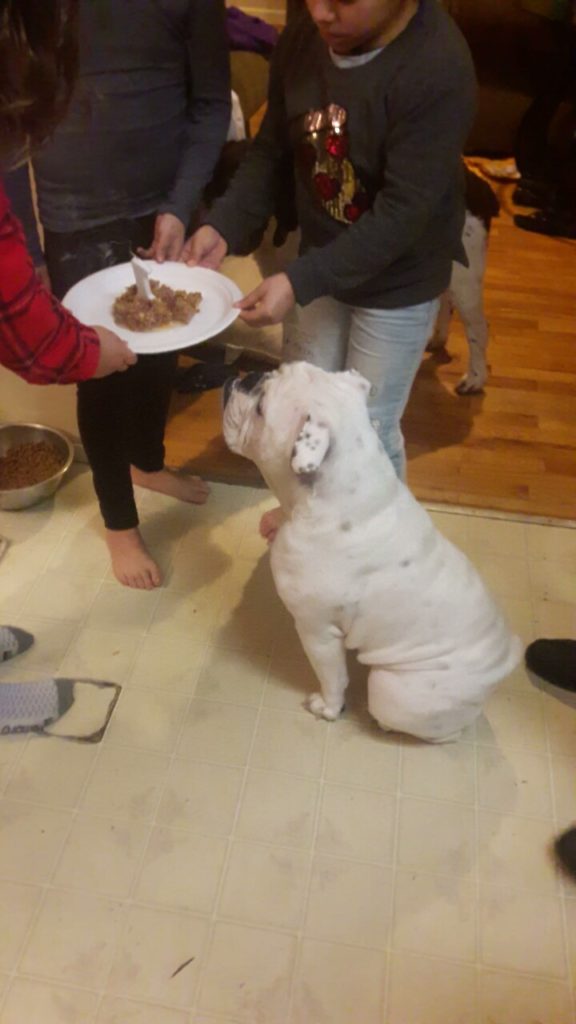
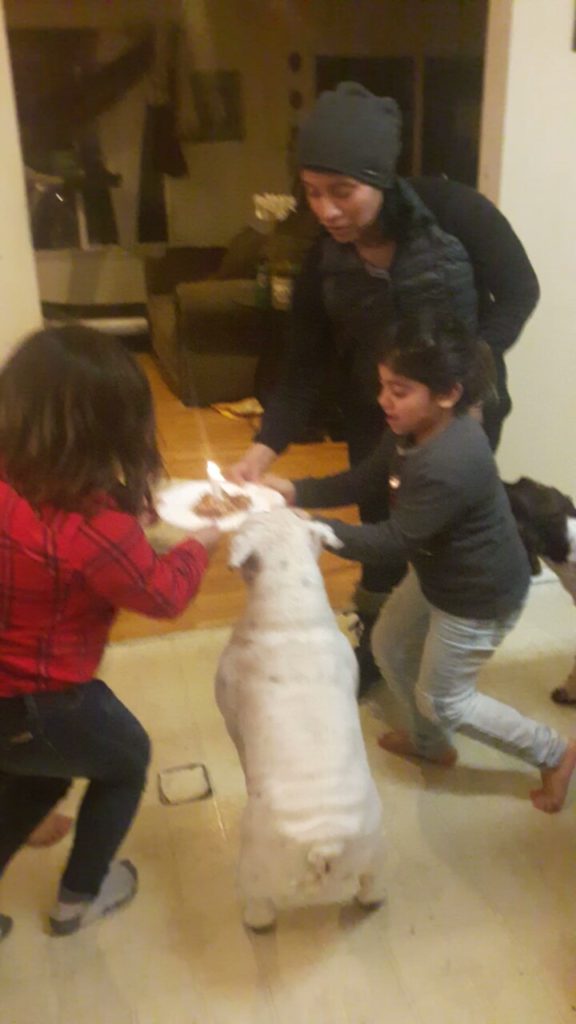
Vince The Bulldog
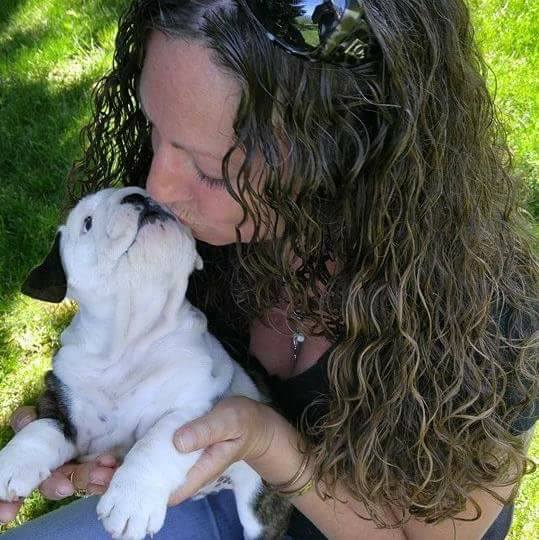
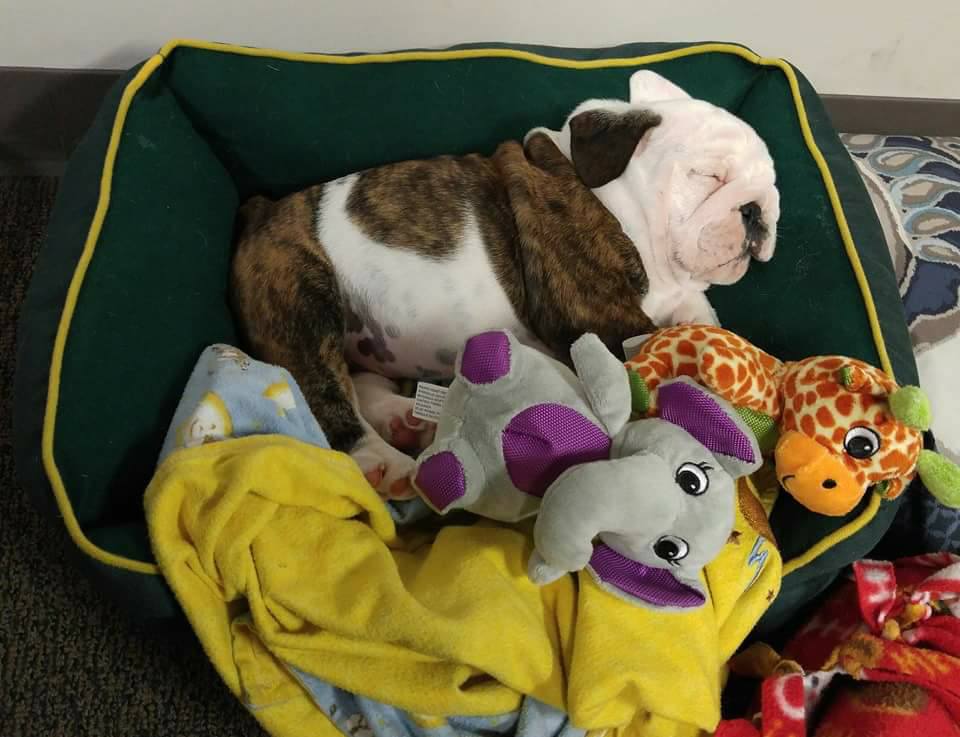

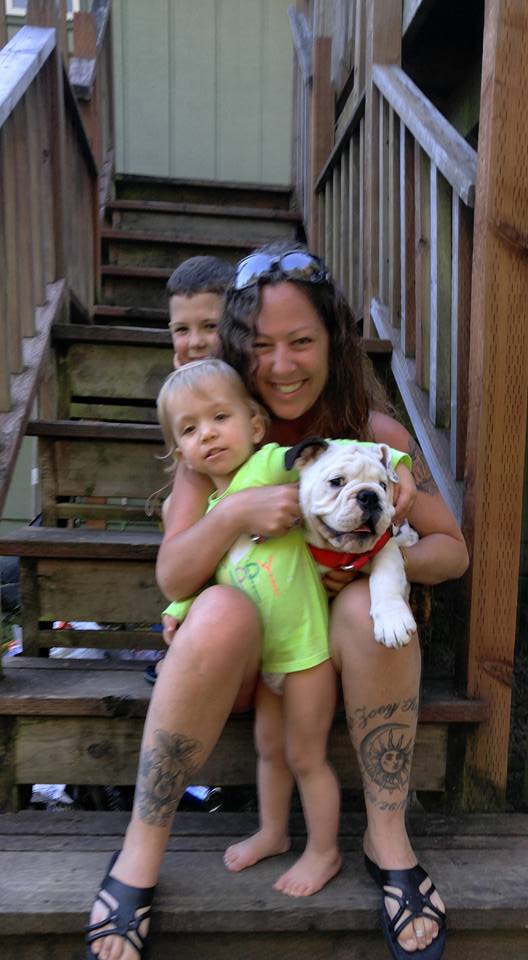
Vince’s Birthday Party
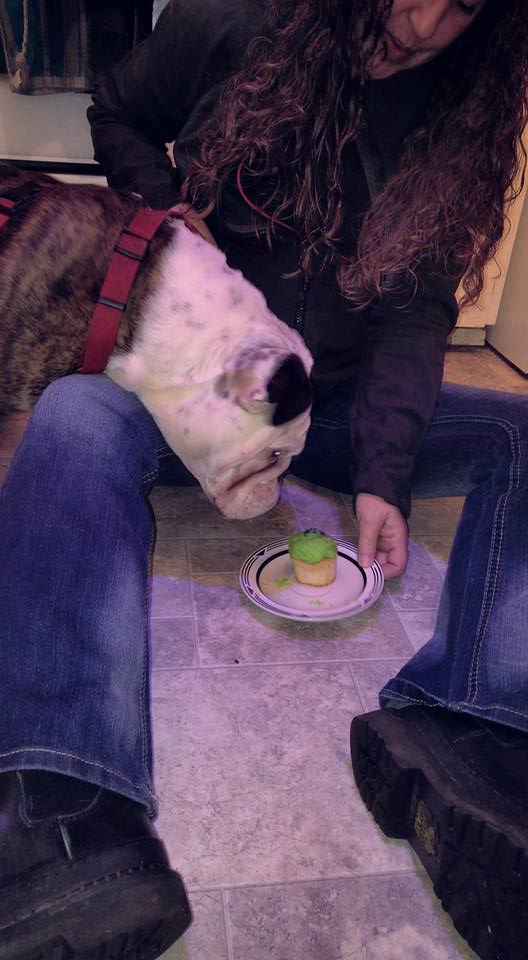
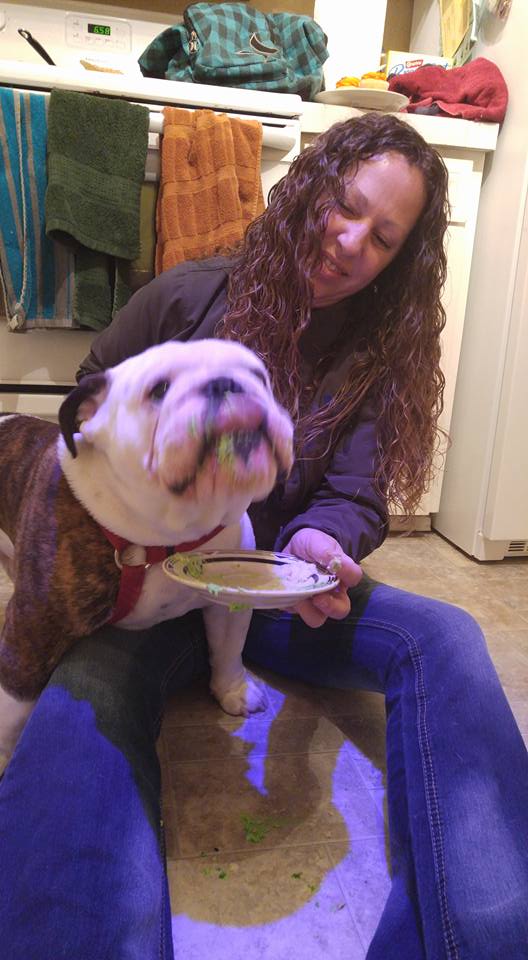
Emma The Bulldog
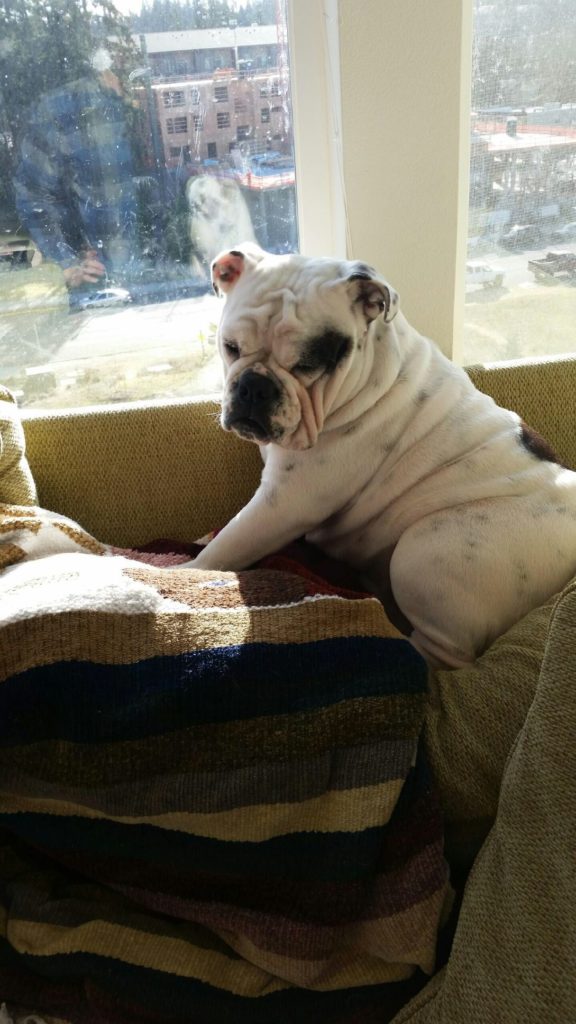
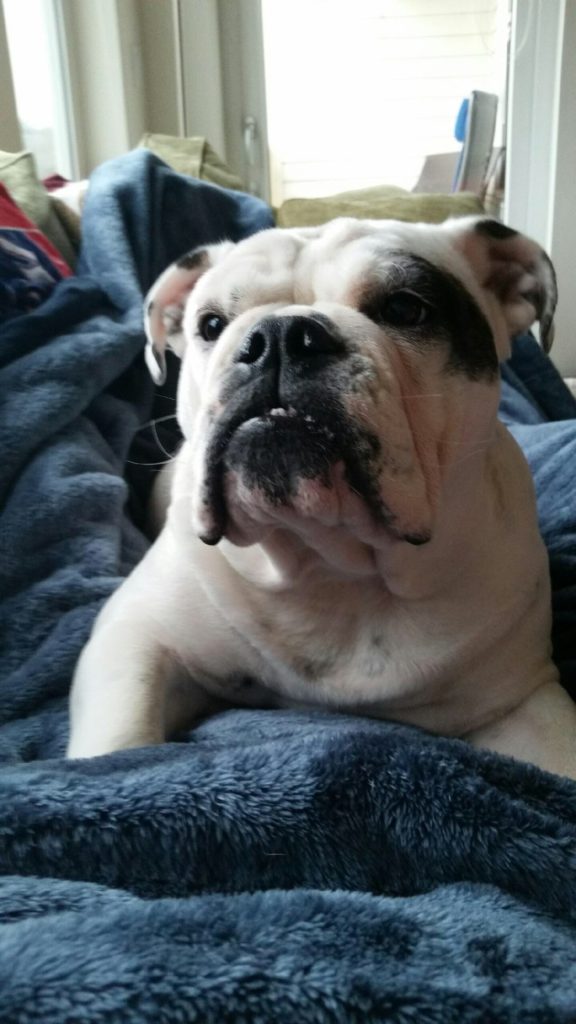
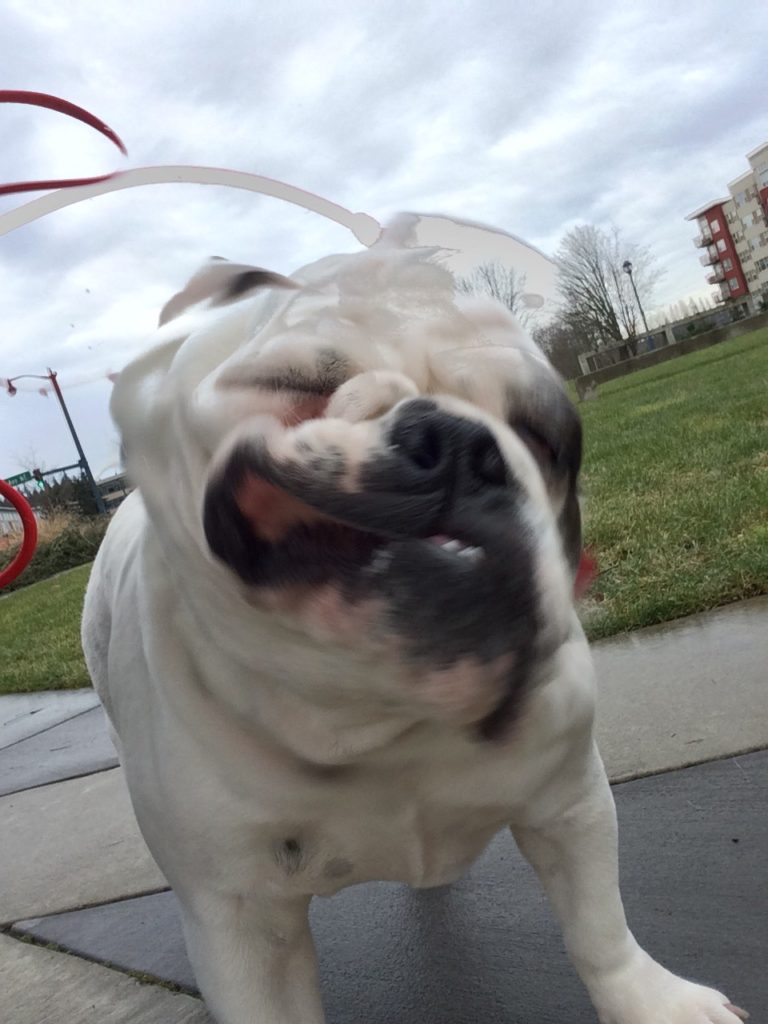

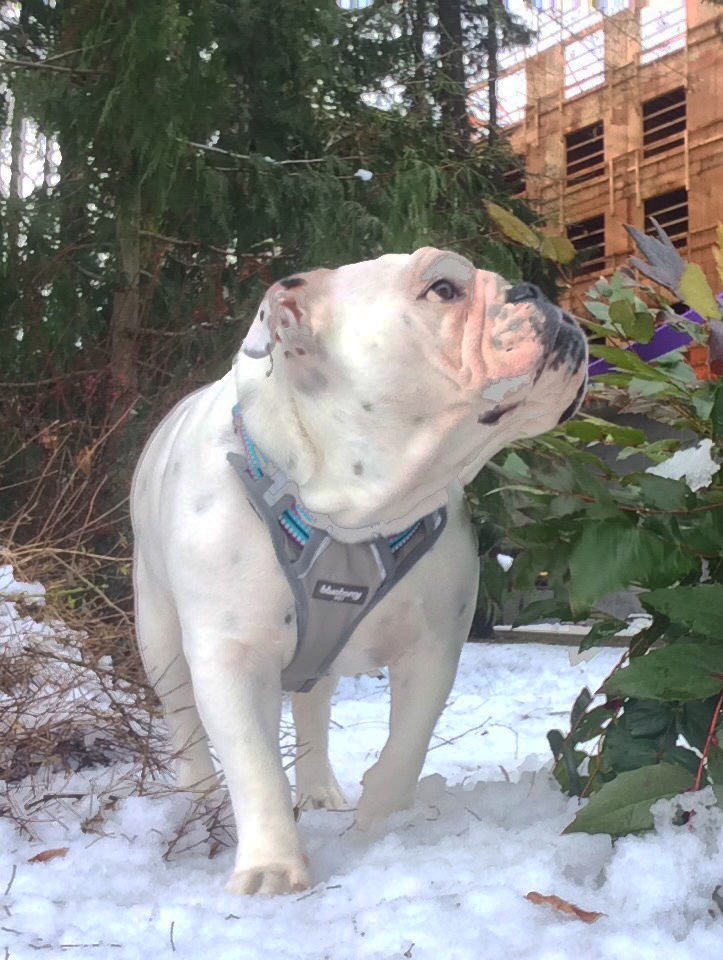
Bernice The Bulldog
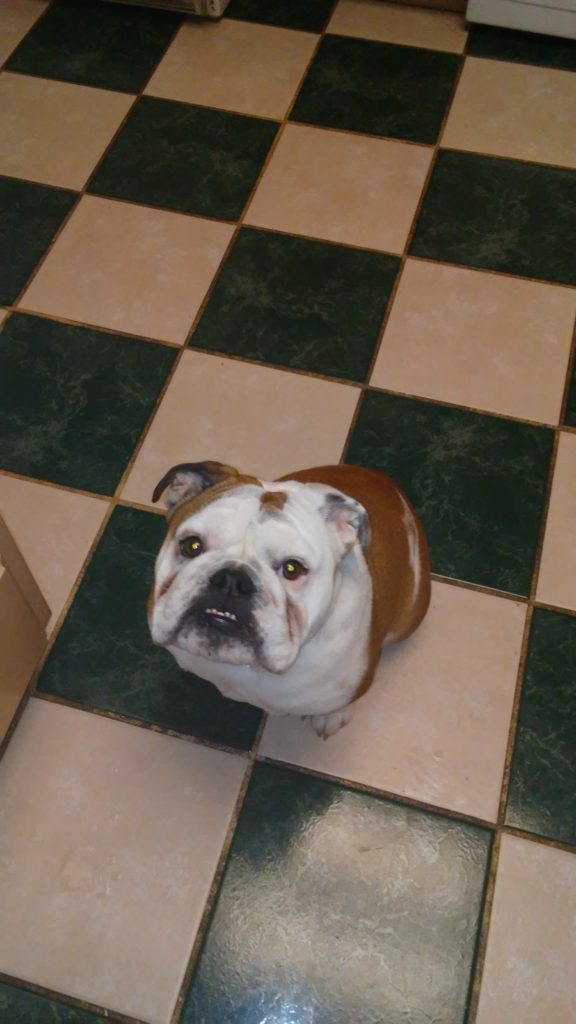

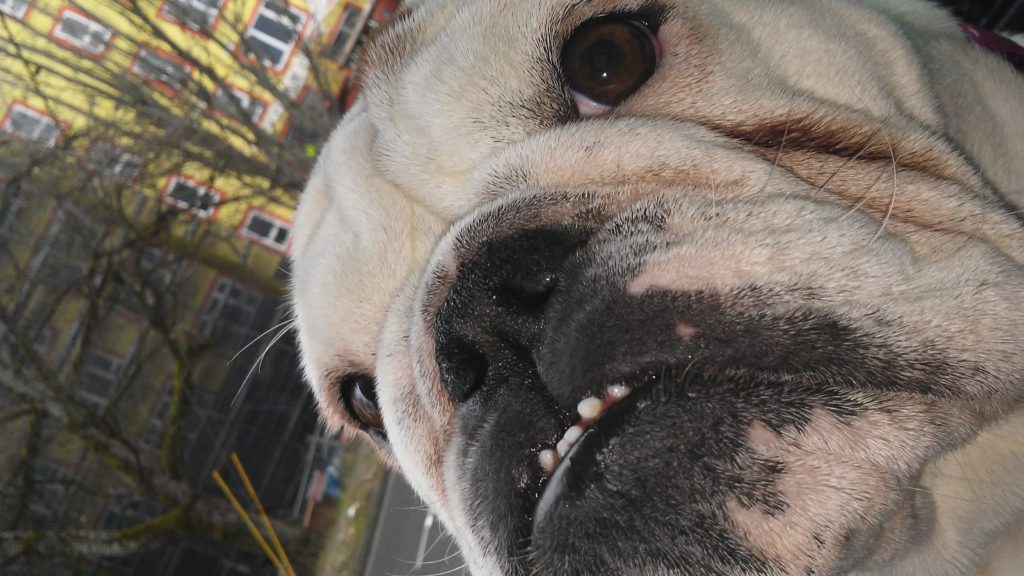
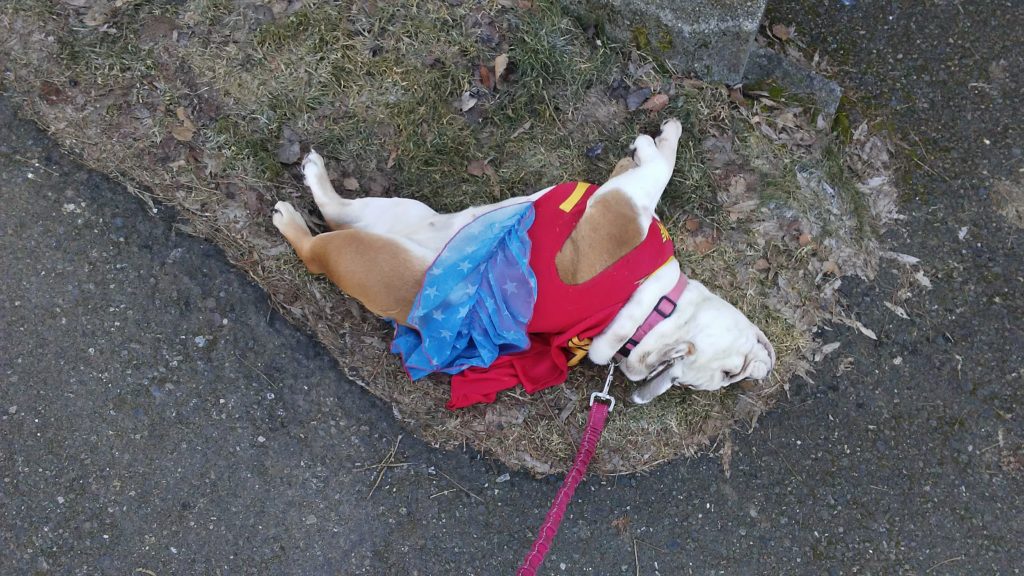
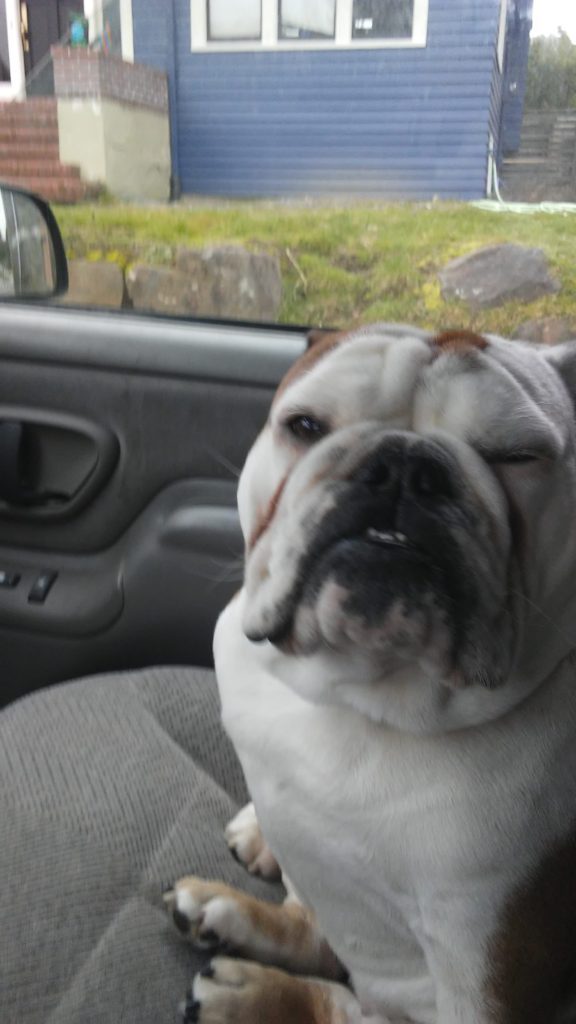

Rory the Bulldog
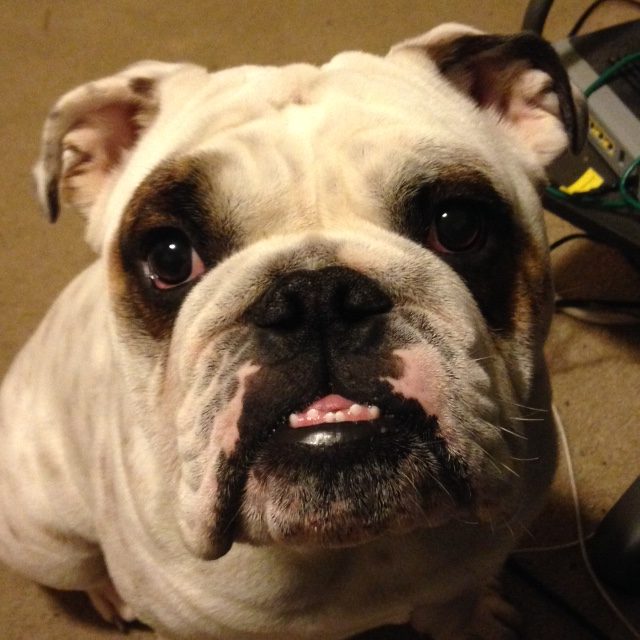
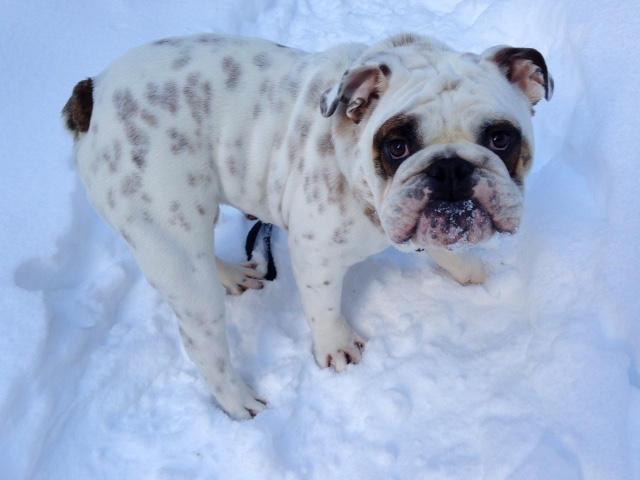
Seamus the Bulldog

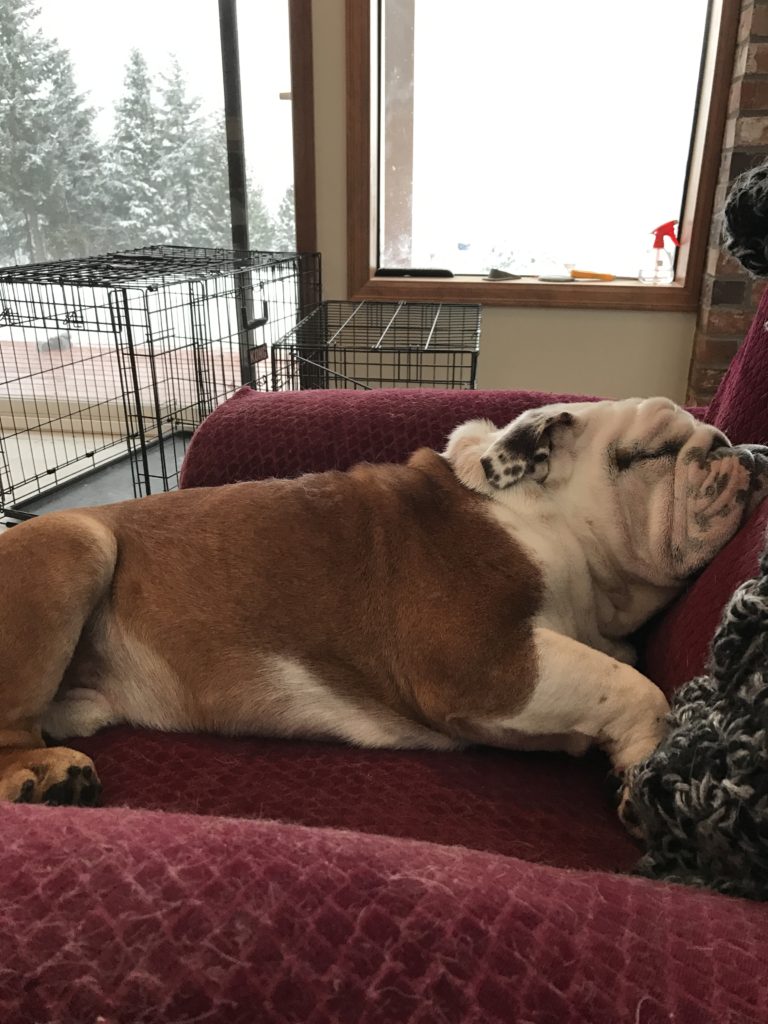
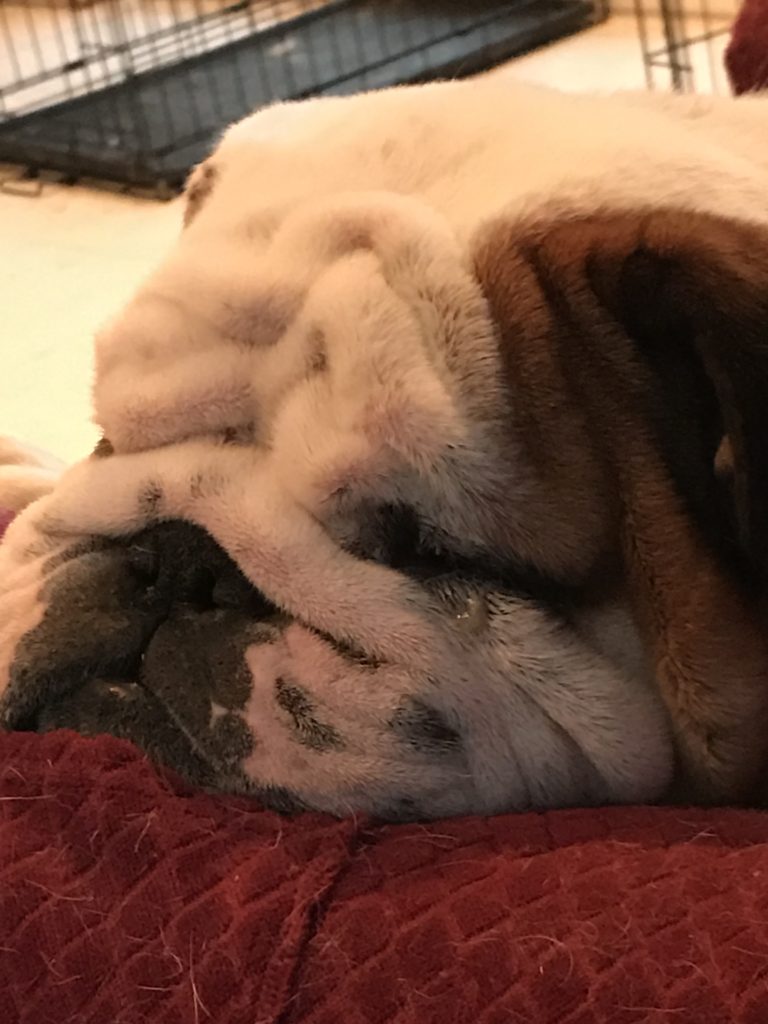
And, of course, Declan The Bulldog!
Declan is one of Snow White’s puppies that we couldn’t bare to part with, so we decided to keep him. He’s grown up to be quite the champion show dog! We’re very proud.
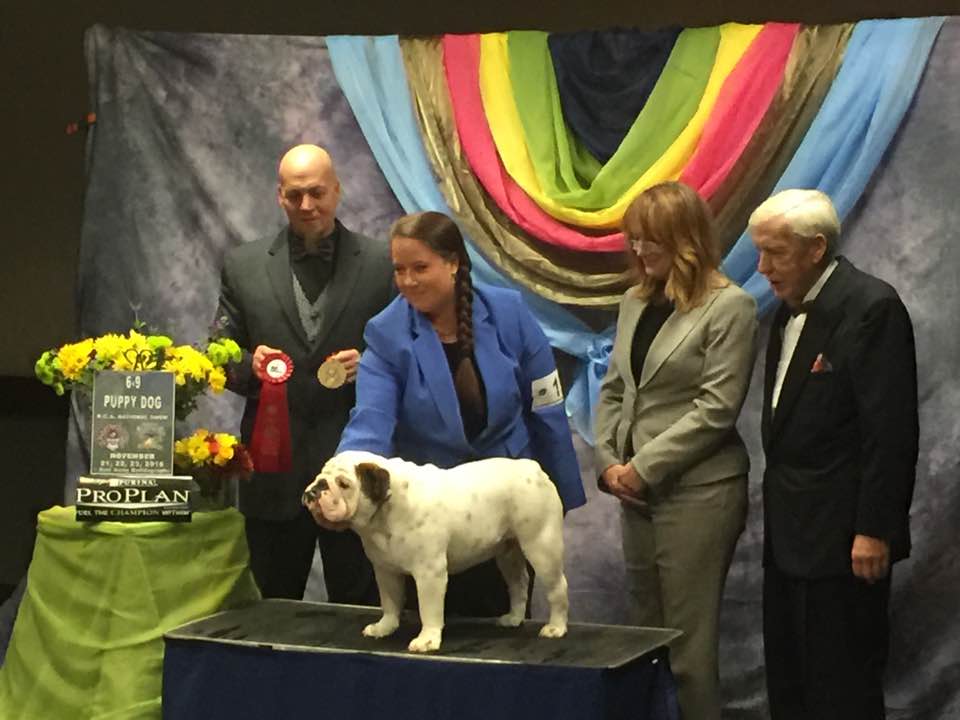
About Cascade Bulldogs: Cascade Bulldogs is a bulldog blog starring Wildflower, Snow White and her litter of bulldog puppies, which includes Declan (Search #DeclanTheBulldog on Facebook and Instagram to see more photos).
How to Pick a Show Quality Bulldog Puppy
Looking to bring home the next champion bulldog? Read this first
Although Snow White and Wildflower grew to become Grand Champion-show dogs and Snow White’s puppy, Declan, is proving to be a top-notch show dog, we haven’t always been so fortunate. When we were first starting out in the world of competitive dog shows, we weren’t familiar with the qualities that show judges look for and it was only after competing in several dog shows that we developed a critical eye for spotting a show quality bulldog puppy. Here are a few things we wish we’d known when we’d first gotten started.
1. Thoroughly familiarize yourself with the Bulldog Breed Standard
The official Bulldog Breed Standard is a set of guidelines published by the American Kennel Club that detail the appearance, movement and temperament qualities that make the “ideal bulldog”. These guidelines are what dog show judges use when they evaluate bulldogs in the show ring. Thus, before you begin looking to purchase a new bulldog puppy, you must study the skeletal and facial feature photos provided in the Standard first. This will help you develop a strong base line to use when evaluating a litter.
2. Know that there’s no such thing as a “perfect bulldog”
The Standard only provides the minimum requirements; beyond that, a breeder’s personal look preferences can play a big part. Every breeder has a slightly different interpretation of how the “perfect bulldog” looks and acts. Some breeders may prefer all-white bulldogs while others prefer brindle, for example. Some breeders may think breeding for the perfect head shape is most important while others may choose to emphasize angulation. Before choosing a breeder, make sure you have a thorough understanding of not only your breeder’s preferences but your own preferences as well.
Also, read: 9 Important Questions to Ask Your Bulldog Breeder
3. Finding an experienced breeder is vital
A show-quality pup rarely happens by accident. Experienced breeders who are trying to breed the next Grand Champion will place a lot of thought and careful-planning into the bulldog breeding process. They’ll research the pedigrees of the sire (or dam) and a lot of attention will be paid towards making sure the dam receives proper nutrition and care. Once the puppies are born, a reputable breeder will take care to ensure the puppies remain well-fed and are weaned at the appropriate times.
In addition to guaranteeing the health and genealogy of a puppy, a knowledgeable breeder will be able to recognize which puppies are most likely to grow into show-quality dogs. Though they’ll never be able to predict with full certainty, they’ll be able to pin point which dogs have the most potential based on the shapes of their heads, their bone structure and and how “short-backed” the dogs are.
4. Not all breeders are skilled at determining which puppies are show-quality
Evaluating which dogs fit The Standard and which don’t is a real skill. It takes a lot of experience and a certain amount of innate ability. Some breeders simply have not developed a critical eye for spotting show quality. It’s important to know this so that you don’t blindly trust “the experts”. You can take their opinion into consideration, of course, but when it comes to picking a show quality bulldog puppy, make sure you have the education to be able to make an objective assessment on your own.
5. Don’t let “puppy cuteness” influence your ability to be objective
Every bulldog puppy is adorable, and if you aren’t careful, it can be easy to let a bulldog’s spunky or precocious personality get in the way of you being able to make a rational, objective evaluation of their appearance. A bulldog puppy can have the best, cutest disposition in the world, but none of that will matter if it also has several qualities that don’t meet Breed Standards. If you’re looking for a bulldog puppy that you will one day be able to show in the ring, looks matters—and they matter a lot.
6. Wait until the puppy is at least a month old before making a decision
At a minimum, you want to wait until a puppy has learned how to “stack” so that you can you evaluate their angulation and bone structure. You also want to wait a few weeks to see which puppy has a more assertive personality, as outgoing dogs tend to love showing more than more timid dogs.
7. Conduct a thorough examination of the pup’s shoulders, neck, front legs, head, ears, tail, bite and teeth
Evaluating a puppy for show quality can be difficult because the puppy is still growing and changing; the three-week old standing before you may look perfect now but may morph into a very different-looking dog at the six-month mark. This guide from the American Kennel Club (AKC) goes into much greater detail on what to look for, but in general, try to choose a bulldog puppy that is proportional, short and “heavy boned”. When you stack the puppy, pay attention to the puppy’s skull shape. Look at the head from every angle; it should look broad and square. Also, make sure the pup’s ears aren’t too small.
8. Stay open-minded
One of the easiest mistakes to make when choosing a bulldog puppy is to go into the selection process with your mind already made up. If you’ve already decided that you’re only going to get a red and white bulldog before you’ve even met the litter for instance, then you’re setting yourself up for tunnel vision. This can cause you to overlook what may be the best puppy in the litter. Try to remain impartial.
9. Know that not every litter will have a show dog
In fact, many litters do not produce a single winning show dog, let alone a champion. Even if both bulldog parents were champion show dogs, that doesn’t mean their puppies will be. It’s important to keep this in mind so that your judgement doesn’t become too clouded by the pedigree parents.
10. Temperament is important, too
Although Standard-quality appearance and movement are essential, temperament shouldn’t be overlooked either. If you want your bulldog to stand out from the competition, he or she has to be happy and well-tempered as well.
When attempting to pick a show-quality bulldog, many people are drawn to the puppies that display the most energy and enthusiasm. However, puppies that are running circles around their siblings, jumping on visitors’ legs and wagging their tail and barking frequently tend to grow up to be equally hyperactive adult dogs. Hyper dogs can be harder to train and may be thinner-than-ideal because they burn so much energy throughout the day that they have trouble staying within the Standard-recommended weight.
Instead, look for puppies that seem even-tempered. These might be the puppies who hang back and observe their siblings when a new person walks into the room or who wait patiently by the food bowl when dinner time approaches. A bulldog with the ideal temperament will be, for the most part, “emotionally stable”. You don’t want a moody or restless dog or one that seems overly timid or nervous. A show-quality dog will also appear to be curious in the world around them.
11. A bulldog who doesn’t match the Standard as a puppy likely won’t match the Standard as an adult
Many make the mistake of thinking that the puppy will “grow out of” any discrepancies they notice that deviate from the Standard. Most of the time, however, it doesn’t work that way. Small, barely-noticeable faults in appearance that are apparent in puppies will often grow to become extremely obvious defects as the dog ages.
A few defects to watch for include:
- Heads positioned directly on top of shoulders—This may be a red flag that the dog will grow up to have a short neck
- Slightly-bowed legs—The legs should be straight. If they’re turned in slightly, know that this will only become more extreme in the passing weeks and months.
- A curved top-line—The top-line should be level. This article has several photos that illustrate well the difference between a good and bad top-line.
12. Notice how the puppy moves
When the puppy walks towards you, you should pay close attention to his or her elbows. Do you see them jutting in and out as the puppy moves? If the answer is yes, then this is not a good sign. Also, watching the dog move can help you spot any issues with the dog’s hocks, which you may have missed when examining them while the dog was stacked. If the puppy moves in a stilted manner or if their legs seem to bow close together when they run, then this could be a sign that the puppy has sickle or straight hocks. This article provides several photos to show you what a healthy bulldog’s legs should look like.
13. Don’t forget to evaluate the dog as a whole
Oftentimes people can get so hung up one feature or fault that they lose all perspective. Sure, the puppy you’re looking at might have a perfectly-shaped head, but what will that matter if their gait is off? A show-quality puppy should be well-balanced and should not have any major faults or overly-exaggerated features. Often times what this will translate into is a somewhat boring or “plain-looking” puppy. But some of the most ordinary-looking puppies grow up into show-winning adults. Before you make your decision, step back and take a look at the puppy as whole.
14. If your dog isn’t winning, you may need to re-evaluate your choice
After you’ve chosen your bulldog puppy and begun showing, if he or she consistently doesn’t place, it may be time to re-evaluate whether or not you’ve chosen the right dog. While the temptation may be to place blame elsewhere (like favoritism among judges or unfair competitive advantage), try to step back and take another objective look at your dog. While it could be that the judges are biased, more often than not, it’s because your dog is lacking in an important quality. This may be a point where you’ll need to retire your dog or sell him or her as a pet. Ask a few experienced breeders or dog show participants to give you an honest evaluation of your dog. It can be difficult to objectively evaluate a pup you’ve grown attached to, so you’ll need all the help you can get.
About Cascade Bulldogs: Cascade Bulldogs is a bulldog blog managed by Gail and Eddie Harris, a couple who breeds and raises bulldog puppies in Seattle, Washington. They are the proud parents to Wildflower, Snow White and Declan, three celebrity bulldog show dogs.
5 Dog Show Tips for Beginners (Infographic)
When you’re first starting out in the world of competitive dog shows, the entire process can feel overwhelming and intimidating. Though there are many things to learn—which we’ll be covering in future blog posts—we thought we’d put together a quick list of a few of the most helpful dog show tips we wish we’d had when we were first getting started.

About Cascade Bulldogs
Cascade Bulldogs is a bulldog blog that provides info on training, showing and caring for bulldogs. It stars three “English” bulldogs in Seattle, Snow White, Wildflower and Declan. For weekly updates and photos, be sure to follow Cascade Bulldogs on Facebook. The blog is managed by Eddie and Gail Harris, who first fell in love with the world of competitive dog shows back in 2009.
Related posts:
Entering your bulldog into a dog show? Here is everything you need to know.
5 Myths about Owning a Bulldog
While bulldogs are a beloved and extremely popular breed, they’re also a frequently a misunderstood breed as well! Perhaps due to their complicated history (they were once bred as bull fighters) or the wealth of inaccurate information on the internet (many bloggers are well-intentioned but undereducated about the facts), bulldog myths are common and widespread.
In an effort to help better educate the public and would-be bulldog owners, we’ve compiled a list of common myths about our favorite wrinkly canine.
It’s true: Well-bred bulldogs are healthy!
One of the myths we hear most frequently is “bulldogs are unhealthy”. People think it’s cruel to breed bulldogs because of their shorter-than-average life-spans and because they require c-sections in order to give birth. But the truth is that you can avoid most—if not all—major bulldog health problems by purchasing a bulldog from a reputable breeder and insuring that the bulldog hails from a solid lineage.
In the video below, a veterinarian spokesperson from the American Kennel Club (AKC) disputes the idea that bulldogs are inherently unhealthy, saying: “Not all bulldogs have breathing problems. There are many healthy bulldogs.”
Why the myths?
1. Bad breeders
Because bulldogs are so in demand, some unethical and dishonest breeders have seen this as an opportunity for a “get rich quick” scheme. They’ve resorted to breeding bulldogs that don’t come from quality genetic lines, resulting in an uptick in the number of unhealthy bulldog puppies being born and sold in the US and elsewhere in the world (for more information on how to discern between the honest breeders and the fakes, read: 9 Important Questions to Ask Your Bulldog Breeder). Because bad breeders are frequently uninformed, they’re largely responsible for adding to the misinformation and perpetuating the myths.
2. A skewed version of reality
The people who are quoted as sources in articles that focus on the bulldog health debate are frequently veterinarian surgeons. As the AKC explains in the video above, these veterinarian surgeons opinions are often colored by their experiences and don’t paint an accurate picture of reality. For the most part, surgeons treat bulldogs who are experiencing major health problems because healthy bulldogs generally don’t require surgery. While it’s only natural that these veterinarians would develop a bias, it’s important that the public doesn’t mistake fact for opinion.
3. Bulldogs are popular! Maybe even TOO popular!
Bulldogs are the 4th most popular dog breed in the US. Because they’re in fashion at the moment, numerous bulldog websites, documentaries and magazine articles have surfaced in recent years in order to meet the demand for education by would-be bully owners. Some of the information that is being shared is accurate, but much of it is not. Unfortunately, one of the side effects of fame is the spread of misinformation.
Want to learn more? Read our bulldog care page for more information about how to keep your bulldog healthy.
7 Things You Should Never to Say to a Bulldog Owner
We bulldog owners rarely turn down an excuse to talk about our bullys. And we’re generally happy to answer any questions people may have about bulldogs (because, let’s face it, bulldogs are a misunderstood breed!). But sometimes well-meaning friends and family can say things about our wrinkly pups that border on insensitive, and well, drive us crazy.
Thus, in the name of a little good-natured fun, here are seven things you should never say to a bulldog owner:
1. “Bulldogs have a face only a mother could love.”
First of all, how could anyone say these faces are anything but 100 percent adorable?!
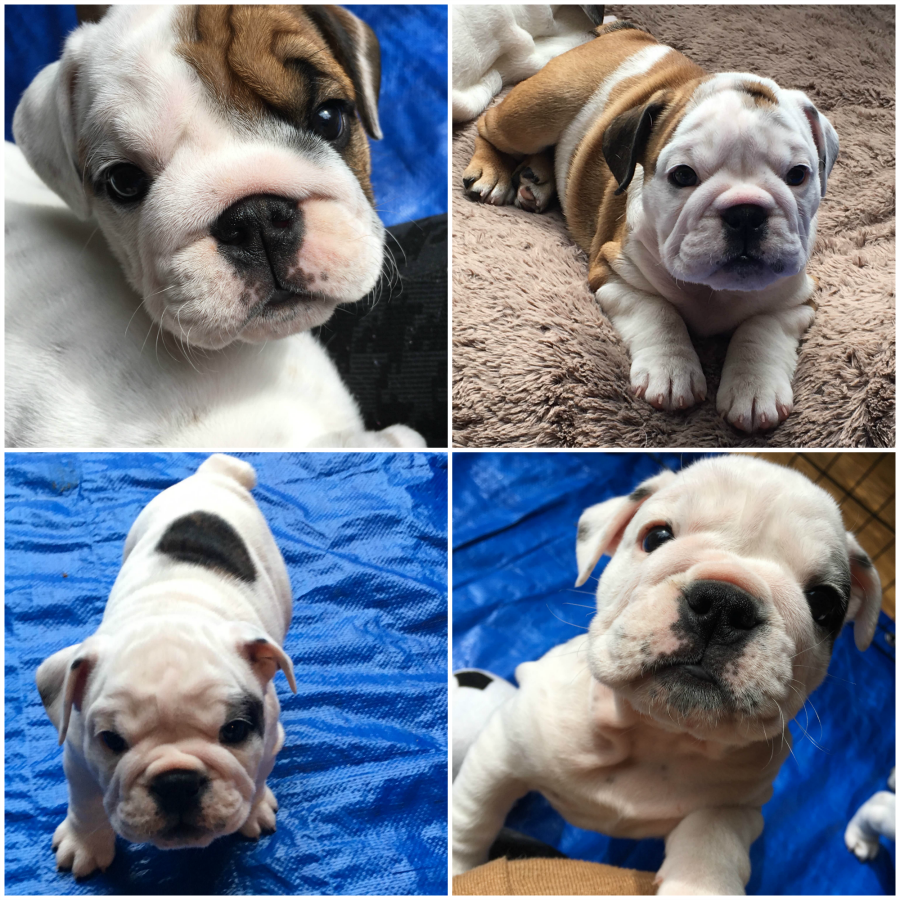
And second of all:
Basically, what you’re telling us (albeit in a somewhat polite way) is that our dog is ugly. Would you tell someone their child has a “face for radio?” No? Then don’t say it about our pups. Our bullys are like our kids. And while it’s true that bulldogs have a unique look, we happen to think their faces are beautiful (wrinkles and smooshed noses and all).
2. “Why did you pay so much for your bulldog when you could have gotten one from the shelter? You could have saved a dog from being put down.”
People who are quick to judge someone for not adopting from a shelter should keep in mind that they may not know the whole story. Because the truth is that the person you’re saying that to may have adopted a purebred bulldog from a bulldog rescue group or perhaps he or she has other dogs at home that were adopted from shelters. However, even if the person did pay top dollar for a bulldog puppy from a breeder, he or she might also regularly contribute to animal-related charities. The point is, people are free to choose how they wish to give back to the world. Just because they didn’t go the shelter route with this particular dog doesn’t mean they haven’t in the past or won’t in the future. And it doesn’t mean they’re bad people.
3. “We decided not to get a bulldog because my veterinarian said they’re super expensive and unhealthy!”
While it’s true that bulldogs can be pricey, they aren’t as unhealthy as the internet may lead you to believe. You can minimize the common bulldog health problems by choosing a bulldog that comes from a good bloodline and purchasing from a reputable breeder. Read: 9 Questions to Ask Your Bulldog Breeder to learn more.
4. “Aren’t bulldogs boring? They don’t do anything but sleep all day.”
Bulldogs sleep an average of 12 to 14 hours in a 24-hour cycle, but they’re far from boring! Bulldogs are kind, loyal and affectionate. They make caring and easy-going companions and their laid-back personality means they are frequently happy to tag along on whatever adventurous activities you have planned.
5. “Your bulldog died? Well, why don’t you get another one?”
Again, some people consider their fur babies to be their children, which means that loosing a bulldog can feel as devastating as losing a child or close friend. Mourning the loss of a pet can take time and some may never be ready to move on and adopt again, and that’s okay. The choice to open your heart to another bully is a personal one.
6. “Wow, your bulldog is big, isn’t she?”
Let’s get real here. 🙂 By commenting on how “big” our dog is, what you’re really saying is that she’s “fat.” While this may or may not be true, no bulldog owner will appreciate the “what are you feeding her” implication of that question. Unless you know us well, refrain from questioning our dog parenting skills.
7. “I’d never get a bulldog because I hear they don’t live long.”
While a bulldog’s lifespan may not be as long as some other breeds (they typically live 8 to 10 years), a decade is still plenty of time to enjoy several photo albums worth of wonderful memories. Plus, no matter which dog breed you chose, there’s no getting around the fact that humans live longer than canines. Even if you select a breed with a 20-year lifespan, you’re still likely to outlive him or her. The heartbreak may not be avoidable, but that doesn’t mean welcoming a bulldog into your family won’t be worth it.
About Cascade Bulldogs
Cascade Bulldogs is a bulldog blog starring bulldog show dogs Snow White and Wildflower (and Snow White’s adorable litter of puppies). Their owners are Eddie and Gail, two breeders and bulldog lovers who live in Seattle, Washington.
Are Bulldogs Good with Kids?
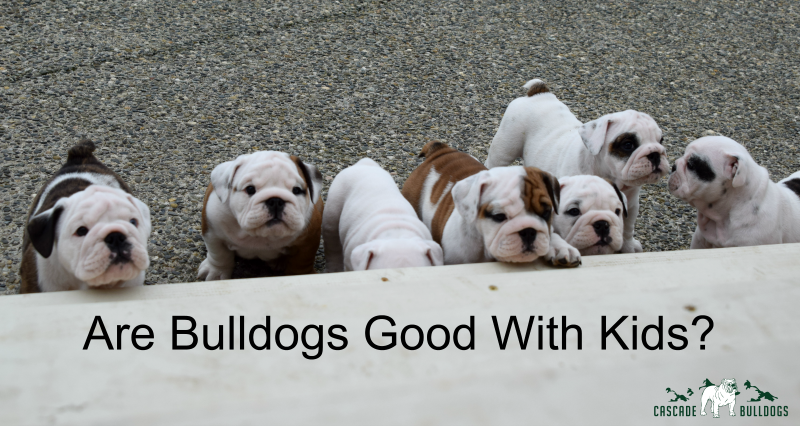
Bulldogs are a frequently misunderstood breed because, just like the pitbull, they have a reputation for being aggressive (a reputation that is entirely false, as any bulldog owner will you). The misconception is due to the fact that several centuries ago, bulldogs were used for bull baiting, and were thus bred to be ornery and abrasive. Although this is no longer the case, the “bulldog is aggressive” myth lives on in sports memorabilia and cartoons. Several companies and sports teams use the bulldog as their mascot, portraying him in their logos and advertisements as being a fierce warrior. Despite the bulldog’s “tough guy” image, however, nothing could be further from the truth. In reality, the bulldog is a very gentle and sweet dog that makes an excellent family pet. Far from aggressive, bulldogs have a mellow demeanor and a deep capacity for love and affection. In fact, bulldogs are one of the best breeds for families with small children, as bulldogs love kids.
3 Reasons Why Bulldogs Make Great Family Pets:
1. Bulldogs Consider Themselves Members of the Family
As a loyal companion dog, the bulldog is extremely affectionate towards and protective of children. Bulldogs’ patient personality make them particularly good playmates for children. But as with any dog, parents should take care that young children and bulldogs are never left alone together unsupervised.
Due to their dutiful nature, bulldogs consider themselves as more than just a child’s companion, but as a protective and valuable asset to the family. Bulldog owners often feel the same way, reporting that their bully is a cherished member of the family.
The bulldog stands out above other dogs for many reasons, but is particularly notable for its immense tolerance and patience, especially when interacting with kids. As a calm and docile animal, bulldogs are seldom known to bark unless they have something important to say and can even serve as a decent watchdog due to their loyal nature and yearning to contribute to the household.
2. Bulldogs are Loyal and Protective
While bulldogs don’t top the”best watchdog breed” list, the bulldog’s stocky appearance means that he or she can act as a solid deterrent for would-be home invaders. While bulldog-lovers find their bully’s faces adorable, to an unsuspecting robber casing a house, the furrowed brow of the bulldog can look mean, and this can come in handy. However, as the bulldog is fundamentally a gentle and laid back animal, they are not able to respond to threats as well as more aggressive breeds. Still, with their renowned ability to create deep bonds of love, loyalty, and kinship with their families, the devotion of the bulldog ensures that he or she would try their best to protect their family if the situation warranted it.
3. Bulldogs are Mellow and Calm
Families with infants or toddlers won’t have to worry about the bulldog being too hyper or energetic. Unlike breeds that are more high strung, bulldogs are mellow and calm enough to be able to tolerate a young child’s inquisitive nature or rough and tumble play. Pulls to the ears and tail aren’t as likely to bother them as it would a more sensitive breed.
As a bulldog is content to lay on the floor and snooze for most of the day, the bulldog is not a particularly active dog, so care should be taken to ensure they receive enough exercise (but not too much), as their “couch potato” stereotype is a fairly accurate one. (Read: Why do bulldogs sleep so much?) Bulldogs are also known to be chronic chewers, so it is equally important that they are provided with abundant chew toys in order to prevent them from chewing on children’s toys.
Why Families are Sometimes Hesitant
Even with all of the benefits of owning a bulldog, families sometimes hesitate to choose a bulldog as their family pet due to the bulldog’s relatively short lifespan. Many would-be owners find it unbearable to think that they might love and care for a pet only to lose them in a few years, and this prevents many otherwise lovable bulldogs from finding homes. While this is an understandable fear, it’s also one of the sad truths about dog ownership; one day you’ll eventually have to say goodbye to your dog no matter how long he or she lives. With good care and proper nutrition, however, bulldogs can live ten or more years.
For a loving family ready to open their hearts to a new pet, the bulldog may just be the perfect choice. Its loyal nature and gentle soul mean that the bulldog can fast become a cherished”doggy sibling” to kids of all ages.
Why Do Bulldogs Sleep So Much?
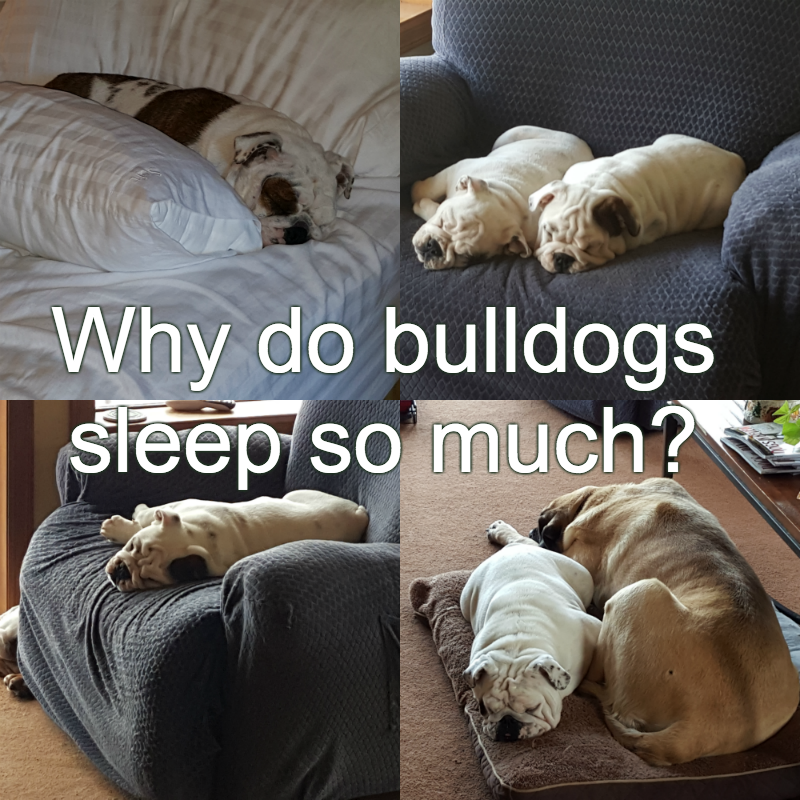
If you have a bulldog, what do you think he’s probably doing right this minute? We’re willing to bet most bully owners answered with “sleeping”! Experts aren’t sure exactly why bulldogs snooze so much, but they average about 12 hours of shuteye a day.
A Lack of REM Sleep
Why do bulldogs sleep so much? Here’s one popular theory: Your average human spends about 25 percent of their sleep in the deep Rapid Eye Movement (REM) stage. This is because, unlike dogs, humans don’t get the luxury of taking naps during the day and have to catch all their Zs in one long stretch at night. Bulldogs, on the other hand, only spend 10 percent of their dozing time in the restorative REM stage due to their shorter sleep stints. In a nutshell, that means our bulldogs have to log in a lot more snooze time to reap the benefits their humans get during one night of sound sleep.
The Genetic Factor
The bulldog’s wild ancestors were nocturnal, hunting under the cover of darkness and resting while the sun was up. After humans decided to domesticate canines, dogs had to adapt by changing their habits to fit their family’s schedule, and that meant sleeping through the night. Their wild wolf cousins still get to howl at the moon while our bulldogs are nice enough to keep it to a low snore when their owners are in bed.
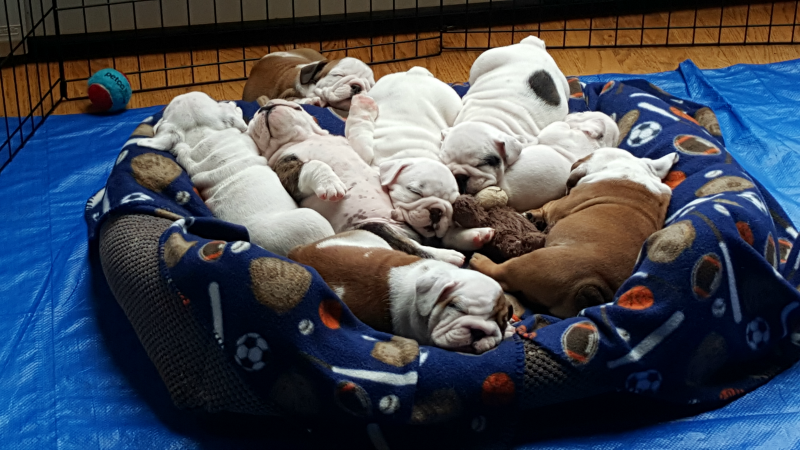
Snow White’s adorable sleeping puppies.
How Much Sleep is Normal?
The average dog sleeps for 12 to 14 hours a day. Puppies need 18 to 20 hours a day since they wear themselves out running and playing. Older dogs and certain breeds on both ends of the size spectrum need more rest. Giant breeds like Newfoundlands, Mastiffs, Saint Bernards, Great Pyrenees, and Great Danes clock in the most nap time.
A Dog’s Day
Bulldogs spend 50 percent of the day asleep, 30 percent hanging around the house, and only around 20 percent being active. Unlike their human buddies, dogs are flexible sleepers who can easily pop up when they need to (like when the mailman is at the door) and snooze when they’re bored. A hard day’s work, like that of a police dog or one who herds sheep, means less sleep since they have more to do than the average Chihuahua who lounges the day away on the couch.
When To Be Concerned
While your bulldog’s sleep schedule can vary from day to day, there’s usually no reason to be worried about all the snooze time he’s getting. A red flag would be if your usually active dog suddenly sleeps all day long, if he becomes difficult to wake up, or if he goes the other extreme and is staying awake and anxious most of the time. Then you would need to take the pooch to your veterinarian to rule out any major health problems and help get him back on track.
For more answers to frequently asked questions, visit our Bulldog FAQ page or follow us on Facebook.
Entering Your Bulldog Into a Dog Show? Here is Everything You Need to Know

Here’s Wildflower at the Nisqually Kennel Club Dog Show. She won Winner’s Bitch, Best of Winners, Best of Opposite Sex and Best of Breed Owner Handled.
Competing in a dog show is a lot of fun but it can require careful preparation and hard work as well. For bulldog owners new to the world of dog shows, we’ve put together a short guide to help get you started.
Preparing Bulldogs for Show
Grooming
A bulldog is comparatively easy to prepare for a show. Brushing his short coat on a regular basis will keep it healthy, clean and shiny. Rubbing it with a soft cloth or chamois just before entering the ring will ensure a freshly groomed look. Your bulldog should be bathed occasionally and his eyes wiped every day to prevent staining. Extra care should be taken with wrinkles and ears. One last preparation for a bulldog dog show is to trim your dog’s nails.
Show Training
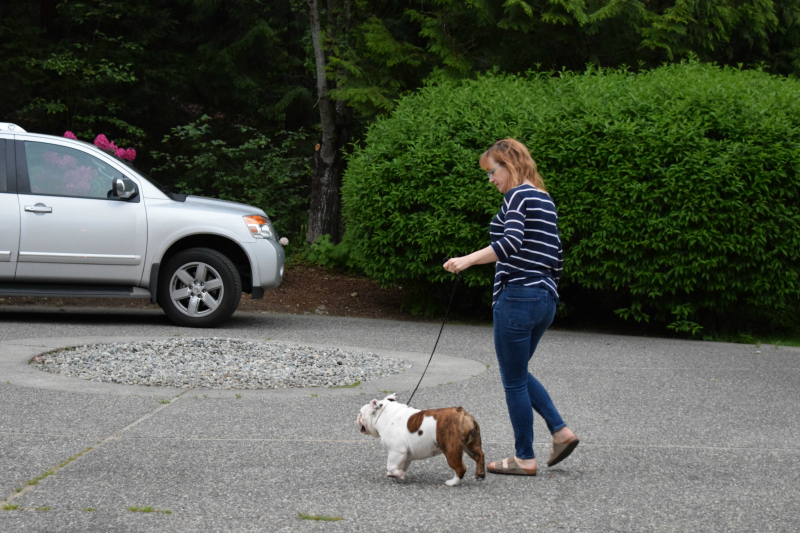
Here’s Wildflower practicing walking, as she would do in the ring

How to show train a bulldog
It is up to you as the handler to accentuate your dog’s good qualities and play down the bad ones. Training begins long before you arrive at the show. Puppies as young as six weeks can be trained to stand quietly on a flat table to prepare them to be judged. Your pup should wear his collar but no leash. Take plenty of time to pet your dog and tell them what a great job they are doing. A show dog who is enjoying what he is doing often places higher than one who is bored or only placating his owner. Training in this manner should be done in short increments every day.
How to Practice “Stacking”:
Step 1: Stand your dog on a flat table
Step 2: You should carefully place one hand flat on your pup’s chest and one on his rear end. Hold him gently cradled this way for only ten or fifteen seconds at a time.
Step 2: Quietly repeat the “stand” command.
Step 3: After a few weeks of training, you will be able to begin placing his legs into the “square” position. Gently move your dogs legs by moving his chin or tugging on his collar. Place his rear legs closer together than his front legs so that when you look at him from the front you can see his rear legs between his front legs. This is referred to as “stacking.” Bulldogs are unique in that they are judged from the front rather than the side as are other breeds.
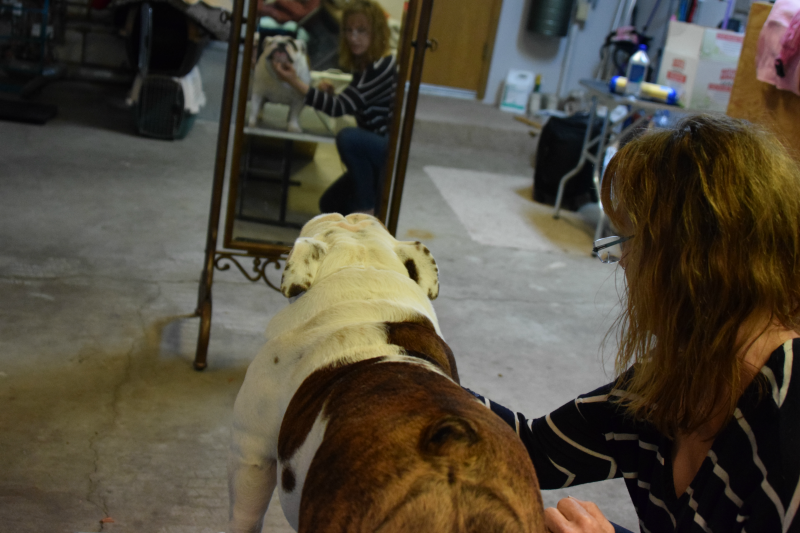
We use a mirror when training with Wildflower. This helps because it allows us to see how she looks from every angle.
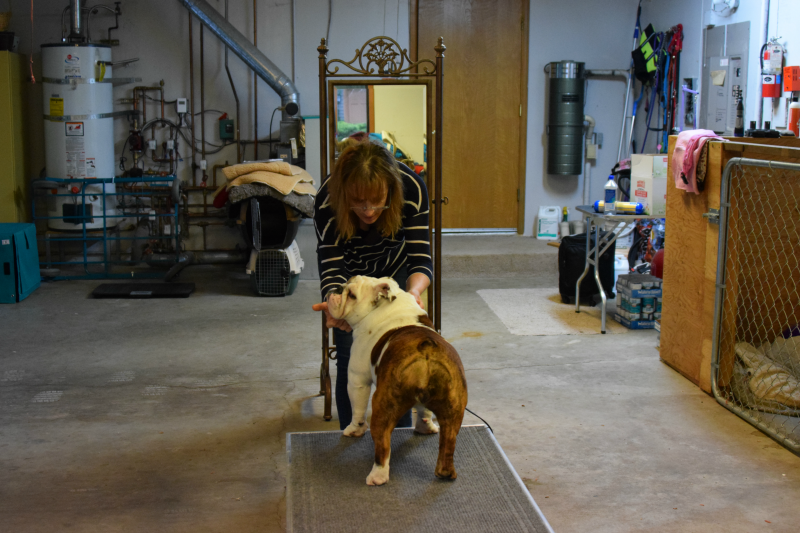
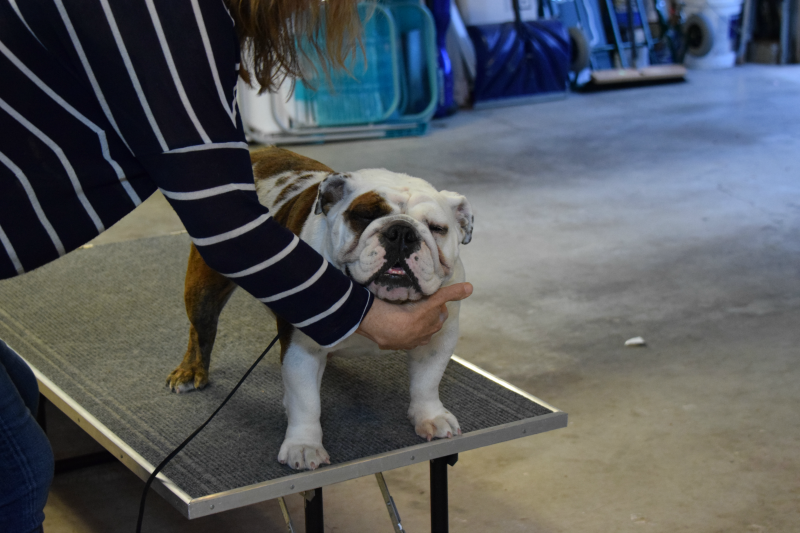
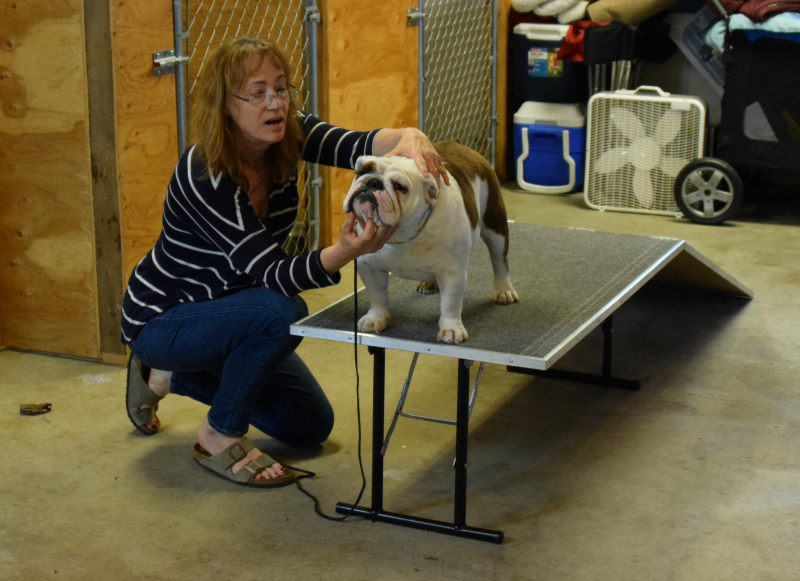

Patience first
Anyone seeking to train their dog, whether or not it is a bulldog, should understand that without patience there will be no placing. All dogs learn in their own time and you should not be discouraged if your pup will not stand still or even stand up on the table during the first few training sessions. Your dog is looking to you for calm guidance during this unfamiliar activity. If you get upset your dog is going to learn that training is something to dread. Keep your training sessions short to prevent over stressing either your dog or yourself. Another good rule of thumb is to always end a training session positively even if it does not feel as if you have made much progress.
Showtime
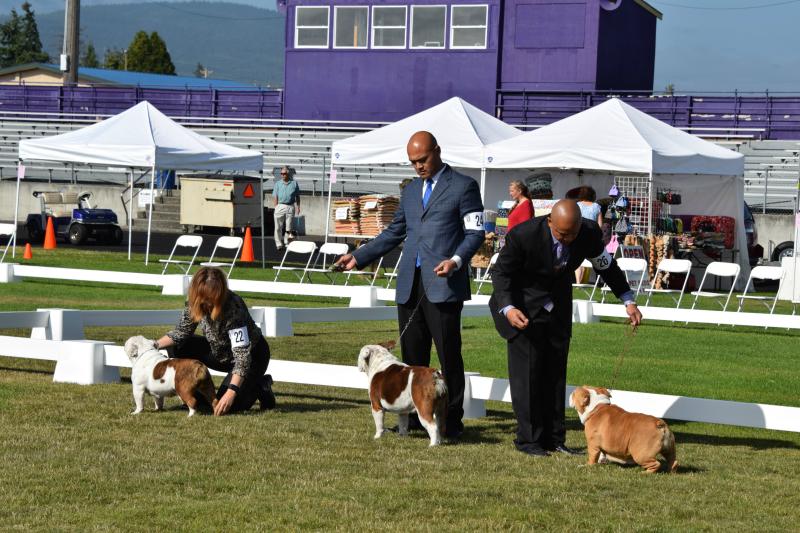
Observe others
You and your pup should visit at least one dog show before you ever enter the ring. It is important that your dog is socialized around other dogs and should be accustomed to being handled by strangers. Watch the other dogs and their handlers. Quietly note what you have already learned works for you and your dog. Keep an open mind towards learning something new. Let your pup get used to the comings and goings of the other dogs and people at the show. This will relax you both.
Dress for success: What the show handler should wear
A dog show handler should always look professional whether it is their first or 50th show. The colors you wear should complement your dog’s coat. Men and women should wear neat, loose-fitting pants that allow them to get down and stack their dogs as well as move briskly in the ring. Long skirts that flap with movement and noisy jewelry are prohibited. Shoes for women and men should be low-heeled and well-maintained. Open-toed footwear and sandals are not permissible in the show ring. Shirts and jackets should not restrict the handler’s movement.
What to pack:
In your show day bag should be grooming supplies, a water dish and a bottle of water, nylon showing leads, and an emergency first aid kit. It can be handy to bring a small plastic spray bottle containing a mix of water and a little dog shampoo. Your show schedule and associated paperwork should be in an outside pocket of your bag to help keep you organized. Inside your dog’s crate should be a familiar blanket or bed.
In the Ring
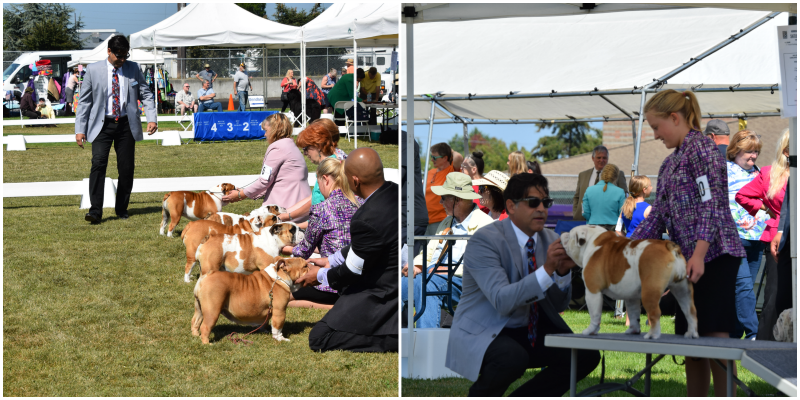
A professionally turned-out dog show handler radiates calm confidence. Remember to relax and not ‘over handle’ your dog. Bulldogs are prized for their head and neck carriage and should not be ‘strung up’ like terriers. Be pleasant to the judge as he or she goes over your dog, however, it is considered rude to attempt any longer conversation.
Got any more tips? Leave a comment below and let us know! We’d love to hear from you!
About Cascade Bulldogs:
Cascade Bulldogs is a bulldog blog dedicated to providing bulldog care and training tips. The blog is managed by Eddie and Gail and their two bulldog show dogs, Wildflower and Snow White. For more tips and fun bulldog photos, please follow Cascade Bulldogs on Facebook.
Common Bulldog Health Problems And How To Treat Them
Loyal and charming, bulldogs are a favorite pet for many families. Like any dog breed, however, they can sometimes develop health problems. The following list of common bulldog health problems will help you recognize the signs and symptoms so that you can treat the problems early, before they require potentially costly visits to the vet.
Hot Spots And Fungus Spots
“Hot spots” is the term used to describe the red, oozing, itchy patches that can sometimes develop on bulldogs as a result of allergies or bug bites. In order to treat hotspots, you’ll need to first cleanse the area with a pet shampoo and then rinse and dry thoroughly. For a quick cleanse, wipe the affected area with baby wipes containing Lanolin and Aloe. Then treat with topical medications like Sulfodene or cortisone cream. If you cleanse and apply medication to the hot spots every day, you should see improvement in a couple of days.
Fungus spots are fairly similar to hot spots, though they don’t ooze as much. Cleanse the area, making sure to remove any scabby tissue. Fungus responds best when using a sulfur-based shampoo. Treat with medications like Panalog or any anti-fungal medication. As with both conditions, if there’s no noticeable improvement, make an appointment to see your vet.
Interdigital Cysts
Interdigital cysts present as red swollen skin between the bulldog’s toes. If you suspect your dog may have a cyst between his or her toes, examine the paw, including between the pads, to be sure there’s no other issue (like a thorn, for instance). There are two common methods for treating interdigital cysts:
- First, soak the affected paw in a bath of warm water with added epsom salt. After soaking, dry completely and apply Panalog.
- Make an appointment with the vet and have him or her give you a prescription medication
After the visible symptoms go away, continue treating the cyst for a few days to be sure it doesn’t return.
Facial Acne And Infection
Bulldogs love sticking their noses into everything, and the dirt that they collect in the folds of their skin can cause acne and skin infections. Another source of facial acne can be plastic food and water dishes. Tiny cracks in the the plastic material can hold bacteria, which can lead to facial bacterial infections. You can treat these infections by cleaning the area and applying an antibiotic cream or Benzoyl Peroxide. If the issue persists, you should see your vet.
Bulldog Eye Problems
Under the bulldog’s bottom eyelid, near the inner corner, is a gland which can occasionally protrude or, for lack of a better term, “pop out”. Cherry eye, as it’s called, isn’t as gruesome as it sounds, and doesn’t need urgent care, though you should take your dog to the vet when you can. Treating it quickly will ensure a high chance of not having to remove the gland. If the gland must be removed, the bulldog will likely have a dry eye and require ointment for the rest of his or her life.
Hip And Knee Disorders
Hip dysplasia is a common ailment for bulldogs. According to the British Veterinary Association and the American Kennel Club (AKC), about 70% of bulldogs are diagnosed with some degree of hip dysplasia. Hip dysplasia causes pain, problems walking, and may cause the bulldog’s rear legs to be deformed.
Knee problems, like patellar luxation, are also common with bulldogs. Patellar luxation is a disorder where the kneecaps dislocate. Approximately six percent of bulldogs develop this. Patellar luxation causes pain and mobility issues and may need to be surgically corrected. It is also highly likely to reoccur even following surgery.
Tail
Some bulldog’s have a flap of skin around the base of the tail, essentially forming a pocket. This pocket area must be kept clean and dry to prevent infections. Clean it often and be sure the pocket is dry. Apply an ointment or drying powder as necessary.
Bulldog Respiration Difficulties
Bulldogs are known to have narrow airways and shortened nostrils, which can cause issues with respiration. These problems cause the dog to snore while sleeping and breathe through the mouth, both of which may need to be corrected with surgery to ensure the bulldog can breathe properly.
To learn more about the measures you can take to prevent these common bulldog health problems, read our Caring For Your Bulldog guide. Also, follow Cascade Bulldogs on Facebook for more bulldog tips and cute photos.
Bulldog C-Section Planning Tips
Everything You Need to Know For Your Bulldog’s Big Day!
So your bulldog is going to be a mama! Congratulations. Now it’s time for the hard work! Since 90 percent of bulldogs require a Caesarean in order to deliver, it’s safe to say that you have a bulldog c-section in your horizon. Here’s a guide to what to expect and how to prepare your dog and your household for the arrival of the latest additions to your fur-baby family!
First step: Estimate when your litter is due
A bulldog will be due to whelp 63 days after she’s ovulated. You can tell when your dog is ovulating by having your vet check her progesterone levels (a bulldog will ovulate when her progesterone reaches 4 to 8 ng/dl). In order to ensure your bully doesn’t go into labor prior to your Caesarean surgery date, it’s a good idea to schedule your appointment for a day early (at 62 days after ovulation instead of 63 days). That way you won’t run the risk of making an emergency vet trip in the middle of the night! Because due date timing isn’t an exact science, however, you should start monitoring your dog closely for labor signs 48 hours before her surgery, just to be on the safe side.

Here is our bulldog, Snow White, 24 hours before her c-section, looking very pregnant and very ready to have those babies out of her belly!
Preparing for your Bulldog C-Section: What to do before surgery
Prepare your home
Section off a quiet, warm area of your home or kennel that you can designate for your puppy nursery. Make sure you pick an area that is out of reach of children or other dogs.
Gather all the proper whelping and neonatal care supplies
Though you should ask your veterinarian for a complete list, some of the important supplies you’ll likely need will include:
- a rectal thermometer
- a room thermometer
- a heat source
- iodine for umbilical cord care
- a puppy scale
- a system for recording puppy information (the puppies’ weight, temperature and urine color, for example)
- a feeding tube
- puppy formula
- a medi-nurser baby bottle
- a dewormer

Here is where we keep our puppies! Safe and protected from the other dogs.
The countdown begins!
1 week prior to surgery—Avoid applying any topical flea or tick products your dog’s skin 7 days before her c-section date.
3 days prior to surgery—Veterinarians recommend that three days before your dog’s scheduled surgery, you apply an Adaptil (DAP) collar. These come in two sizes, and emit a pheromone that veterinarians believe can help with maternal skills.
2 days prior to surgery—If you feel comfortable doing so, it’s a good idea to give your bulldog a bathe so that she’ll be clean for the surgery and clean for when she starts caring for her puppies. This is also a good time to shave the part of her abdomen the veterinarians will be tending to, as this will save time the day of the surgery.
The night prior to surgery—You won’t be able to feed her the morning of the surgery, so make sure she eats a a decent-sized meal the night before!
Morning of the surgery—Again, do not feed her the morning of the surgery. The exception being if she is on any medications, then you can coat her tablets in wet food (but use as a little as possible). She may drink water the morning of her surgery, but remove her water source prior to leaving for the clinic.
What to bring to the surgery:
Here is a list of items veterinarians recommend you bring with you to the clinic the day of your bulldog c-section:
1. A tarp or tablecloth (preferably vinyl) to cover the seats or floor of the car
2. A large crate for your bulldog
3. Blankets and towels
4. Heating pad and inverter to run the heating pad
5. Plastic laundry basket to carry the puppies home in. Drape a towel across the inside.
What procedures are performed during the c-section?
Many veterinarian practices recommend you arrive to the clinic one to two hours early. Though the standard procedures may differs slightly between vet practices, here is what you can generally expect will happen during the operation:
Before the surgery:
1. First, an evaluation will be conducted to see if your bulldog is in active labor. This may involve a vaginal examination.
2. An x-ray or ultrasound may be performed
3. An IV catheter will be placed, which will require her front leg to be shaved.
4. She will be shaved for surgery
5. Blood may be drawn to test progesterone levels
6. Her tail will be wrapped so that it is kept clean.
During the surgery:
When all of the pre-op prep work is done, your bulldog will be taken to the surgery suite, where anesthesia will be administered and the c-section will take place. After the veterinary staff provide neonatal resuscitation and post-op care on the puppies, the placenta is removed, the umbilical cord is cared for and then the puppies are brought into an incubator or warming area. Ask your vet if you can assist the pups as they nurse for the first time, as this is usually done in the clinic.
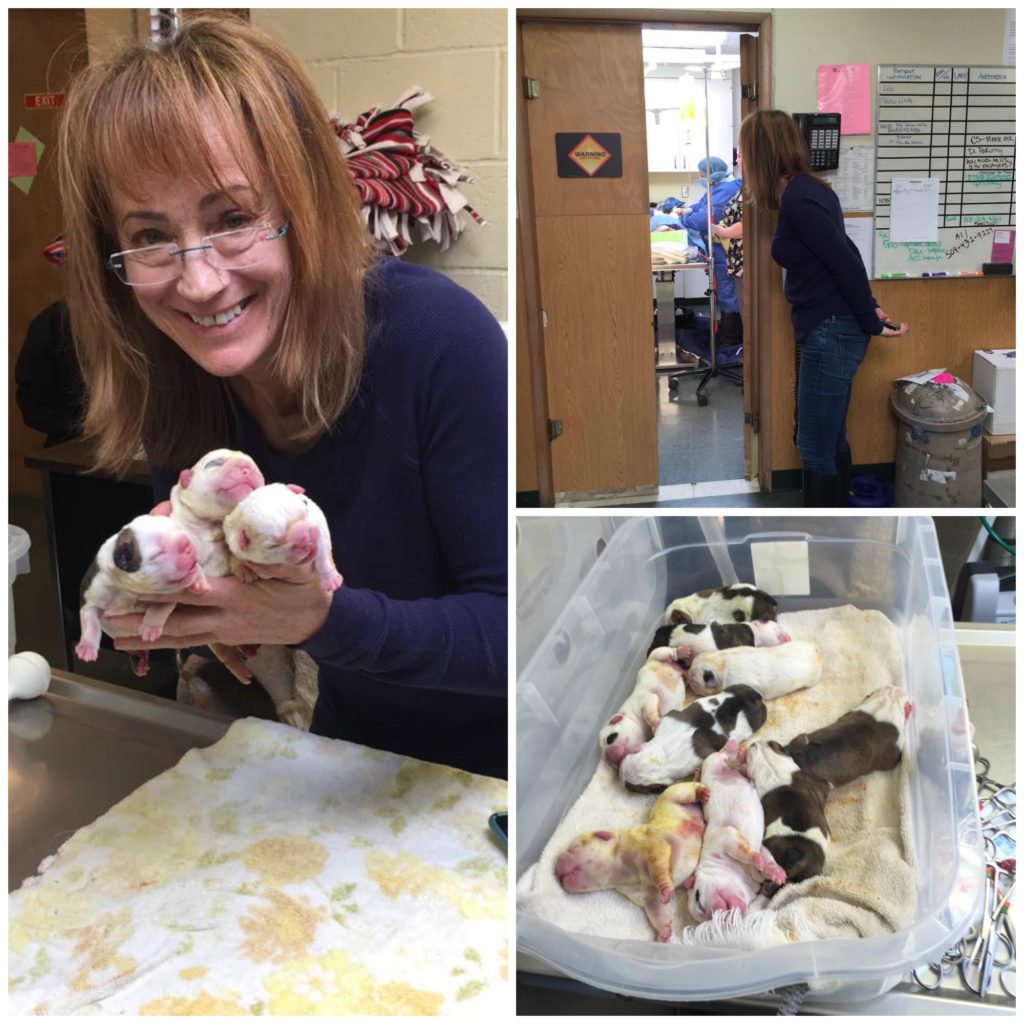
Here are our puppies shortly after they were born! It was so exciting to hold them for the first time. You can view more photos of the puppies on our bulldog puppies page.
After the surgery:
You’ll be given a number of medications to take home with you, including pain medications (usually MetacamR (meloxicam) or RimadylR (carprofen) for post op pain management), Reglan/metacam (to aid in improved lactation by increasing milk production) and Oxytocin (to help with lactation).
Bringing your new puppies and happy mama home
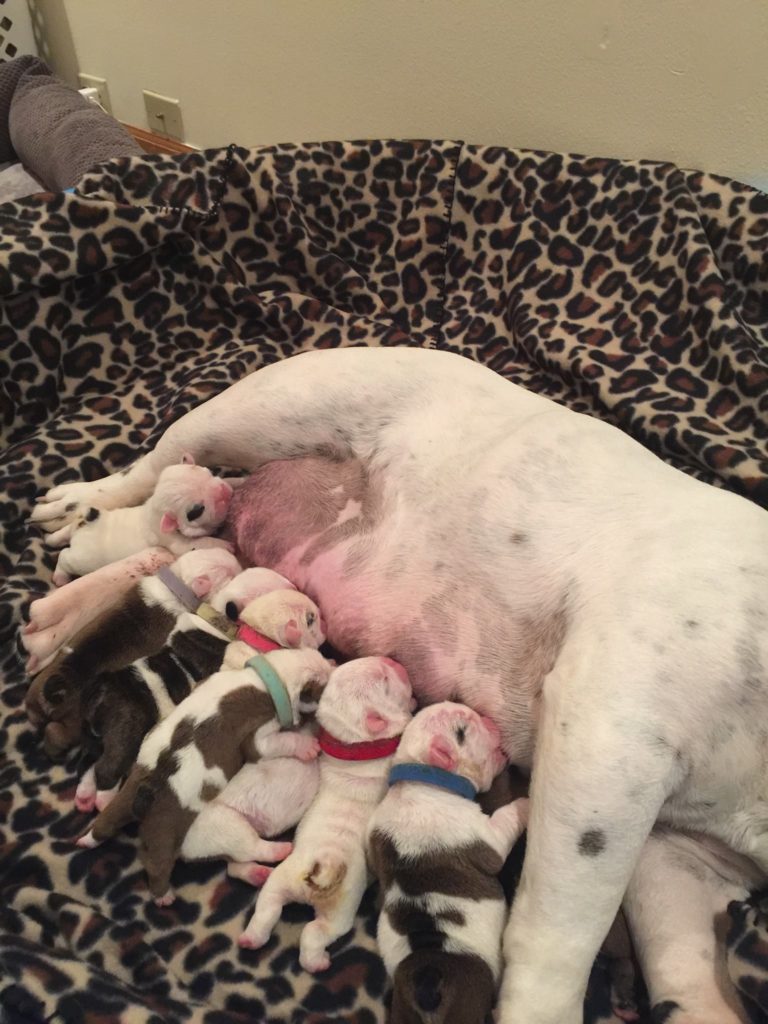
After you bring your new doggy mommy and her puppies home, you’ll need to monitor your bulldog carefully to make sure the puppies remain safe under her care. Do not leave her and the puppies unsupervised until you are sure they are safe.
Keep on the lookout for the following:
- Make sure your bulldog mommy does not lay on her puppies
- Check your puppies weight, temperatures and urine color twice each day (and record your findings) to make sure they are nursing enough and gaining weight.
- If any of your pups aren’t gaining enough weight or aren’t staying well hydrated, you may need to bottle or tube feed them.
- Check your bulldog incision, mammary glands and temperature once per day and monitor her appetite.
When to call the vet
- If any of the puppies are fussy, refusing to nurse or are not gaining an adequate amount of weight, it’s a good idea to contact your vet. Also call the vet if any of your pups have dark colored urine.
- If your bulldog has a fever higher than 103 degrees Fahrenheit or if she isn’t eating or drinking much, you shouldn’t hesitate to call your vet. Also double check with the vet if her mammary glands are swollen or if her incision looks infected.
- While it is normal for your dog to experience bloody vaginal discharge the first days, if there appears to be a lot of blood or if the discharge seems to have an odd color or odor, it’s best to play it safe and give your vet clinic a call.
What to expect at your first post-operation vet visit
When you come in for your post-op checkup, some of the procedures you can expect will include:
2, 4, 6 and 8 weeks post-op—Deworming (for both the puppies and the mom)
10 to 14 days post-op—Removal of C-section sutures
8 weeks—Health exams, health certificates for travel, microchips and first vaccinations
About Cascade Bulldogs: Cascade Bulldogs is a blog dedicated to everything you ever needed to know about raising and showing bulldogs. The site is managed by Eddie and Gail Harris, who raise and show English bulldogs in Seattle, Washington. Please follow us on Facebook for more helpful bulldog-related advice and info. You’ll also receive daily updates on our nine adorable puppies and our show dogs, Wildflower and Snow White.
Summer Safety Tips for Bulldogs
Snow White and Wildflower are fortunate to live in Washington State, where the summers are relatively mild in comparison to other areas of the country. Where elsewhere temperatures in June and July may reach the triple digits, in the Seattle area, the average high is in the low to mid 70s. Just because the temperatures aren’t scorching, however, doesn’t mean that bulldog moms and dads shouldn’t remain vigilant. Bulldogs are extra sensitive to heat and if they aren’t able to regulate their body temperatures, they succumb to heat stroke, which can be deadly.
In addition to the obvious ‘no’s no’s’ like “don’t leave your bulldog alone in the car” and “don’t tie your bulldog up outside in the sun”, here are some safety precautions to take this summer to ensure your bully remains happy, healthy and safe:
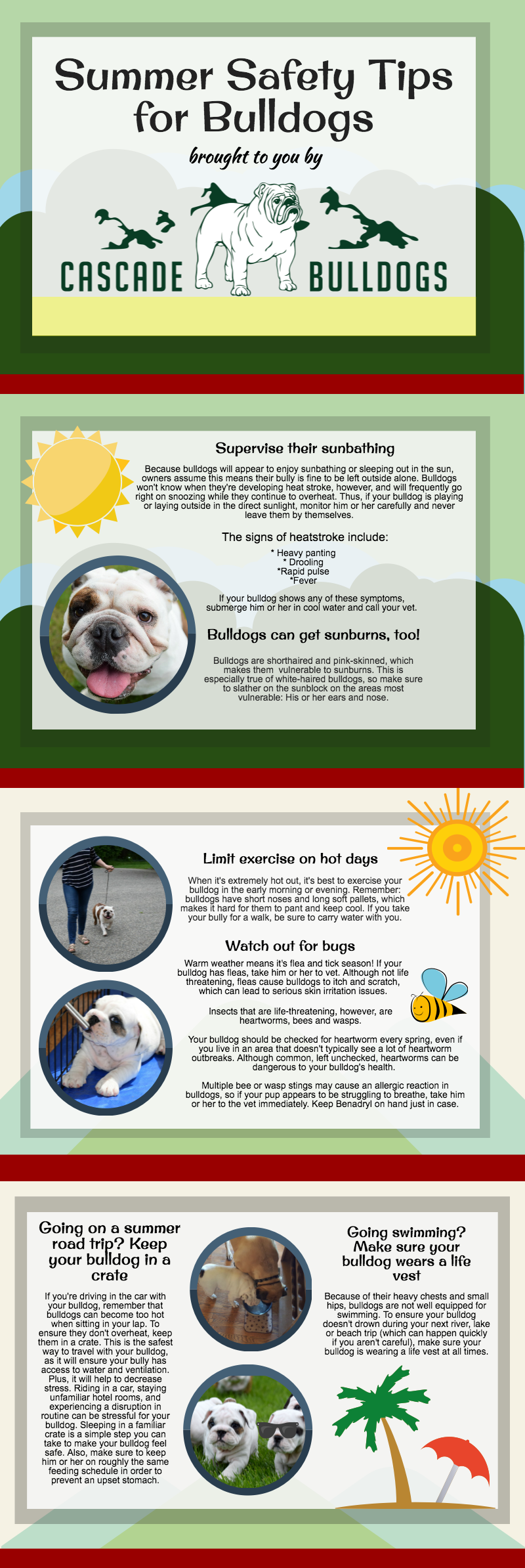
For more bulldog health and safety tips, read our guide to caring for your bulldog.
About Cascade Bulldogs
Cascade Bulldogs is a bulldog blog managed by Gail and Eddie, the owners of two bulldog show dogs, Snow White and Wildflower. This blog is dedicated to providing information about raising, training and showing bulldogs.
9 Important Questions to Ask Your Bulldog Breeder
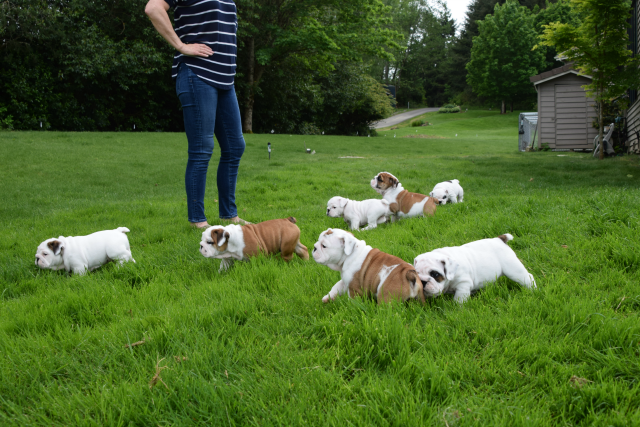
If you’re looking to add a bulldog puppy to the family, it’s important you choose a breeder who is honest and reputable. This will help ensure that whichever bulldog puppy you go home with, he or she will be healthy and well tempered. Because even the most virtuous and well-intentioned bulldog breeders might not have the right amount of breeding experience and bulldog knowledge to be able to guarantee your bulldog meets AKC quality and health standards, which is particularly important if you are looking for a show-quality dog.
Here are nine questions to ask your bulldog breeder before you make your decision:
1. How long have you been breeding bulldogs?
While an experienced breeder is usually better, a lack of breeding experience doesn’t necessarily mean you should rule them out. However, a first-time or inexperienced breeder should have done their research and be extremely educated on all aspects of breeding, raising and showing bulldogs. If they’re new to breeding, ask them where they got their information and if they consulted with other breeders beforehand.
2. Is breeding a full-time business?
Unless your breeder owns several bulldogs, breeding shouldn’t be a full-time business. If it is, this could be a sign they’re over-breeding their dogs. For most breeders, the business is merely a hobby or at most, a part time job.
3. How old are the puppies?
It’s important that puppies remain with their mom and brothers and sisters for at least seven weeks. If the breeder is selling them at five or six weeks age or younger, go with another breeder.
4. Do you think a bulldog is the right breed for me?
A bulldog isn’t for everyone and an honest breeder won’t hesitate to tell if you they think you’d be better suited with another breed. A good breeder will care about his or her puppies and will want to make sure each of them go to a loving home. They’ll be honest about some of the pitfalls about owning a bulldog (for example, their shorter life span and plethora of health problems) because their puppies’ happiness is more important than making a sale.
5. Can I meet the puppy’s parents?
You should at least be able to meet the mom. This is a good idea because you’ll want to make sure she is friendly and confident; this is a sign she’s been well cared for and has a good temperament; which your puppy will hopefully have inherited. You want to try to avoid choosing a puppy whose mom acts overly shy or aggressive.
6. Where are the puppies kept?

A good breeder will make sure puppies have access to clean drinking water at all times.

A reputable breeder will house puppies in a pen that’s clean and spacious.
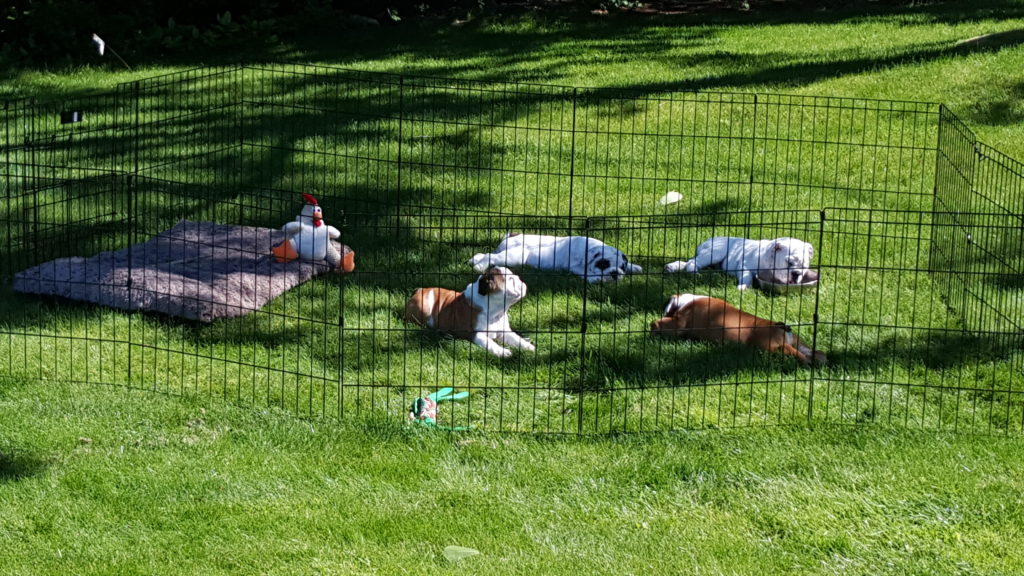
If puppies are kept outside, they should be in a shaded area with access to water. If it’s hot or excessively humid out, however, puppies should be kept indoors.
You want to make sure the puppies are kept in a clean kennel area that allows for access to food, water, toys, and a comfortable sleeping and play area. If the breeder won’t show you where the puppies were raised or will only bring out the puppies one at a time, this a sign the puppies may not have been well cared for.
7. Do you have the pedigree and registration forms?
This is particularly important if you’re looking to show your bulldog. Even if you aren’t, however, if you’re paying for a purebred dog, you want to verify that the puppy is indeed purebred before taking it home. A pedigree will be able to confirm this.
8. Can I see the puppy’s health record?
A health record will show you important information about the puppy’s health status as well as a record of what vaccinations he or she has received and when he or she was wormed.
9. Can I return the puppy if I change my mind?
While you should hope that this isn’t the case, you may decide that a bulldog just isn’t the best breed for you or that a puppy is more work than you can manage at this point in your life. If this is the case, you want to be able to return the bulldog to the breeder. A good breeder will care about their puppies enough to want to see them go to the best homes possible and will be willing to take back their dog at any time if its deemed that you and the puppy aren’t a good fit.
About Cascade Bulldogs
Cascade Bulldogs is a bulldog blog featuring celebrity bulldogs Snow White and Wildflower. Their owners are Eddie and Gail, two breeders and bulldog lovers who live in Seattle, Washington.
Is a Bulldog Right for Me? The Pros and Cons of Owning a Bulldog
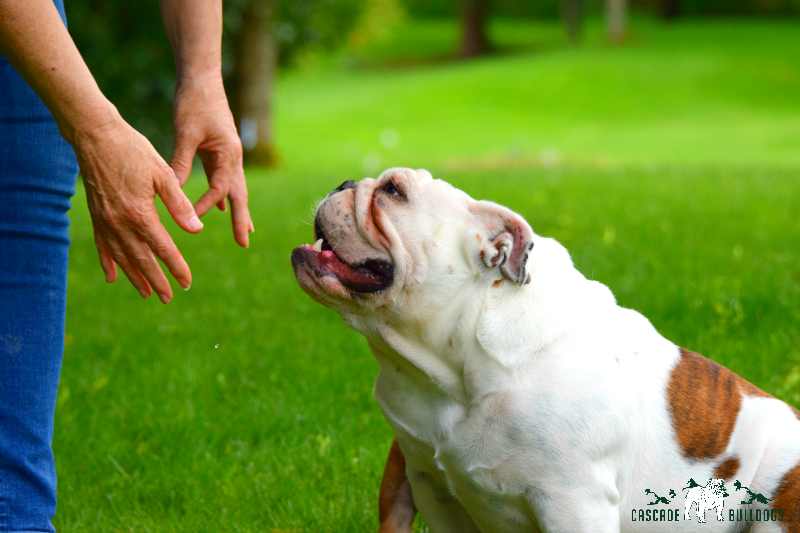
Wildflower the Bulldog, showing off her big, friendly grin
Many looking to welcome a new dog into their home may wonder: Is a bulldog right for me? The simple answer to that is: That depends. As with any breed, bulldog ownership has its positives and negatives. Here is a list of bulldog pros and cons to help you decide.
The Pros
-
A Gentle and Mellow Temperament
Bulldogs tend to be more easygoing than other breeds. Although they can have a stubborn streak, on a day-to-day basis, they are fairly laid back. This makes them great companions for relaxing at a park or cuddling on the couch.
-
Great with Kids and Other Pets
Bulldogs are also loving and social, making them ideal for families and kids. What’s more, their mild temperament means they get along well with other pets.
-
Low Maintenance Grooming
Bulldogs have short fine hair; no tangles to hassle with!
-
Great for Families that Live in Apartments or Small Houses
They’re medium-sized— not too small, not too large.
-
Bulldogs Don’t Bark Much
Although bulldogs snort and snore, they don’t bark a lot, which makes them quieter than many other breeds. Because bulldogs aren’t known for barking, they generally aren’t used as watch dogs. But they can be intimidating when they want to be, thanks to their stocky build, wide stance and their shuffling yet surprisingly fast gait.
-
Bulldogs are Low Maintenance; They Don’t Need to be Entertained
While bulldog puppies are quite energetic, bulldog adults are generally mellow and reticent; spending much of their time asleep and snoring from their favorite bed or sofa.
-
Bulldogs Don’t Need to be Run or Taken on Long Walks
Bulldogs don’t need a lot of exercise to stay healthy (a 20-minute walk once a day is sufficient).
The Cons
-
Your Bulldog Won’t Be Able to Accompany You on Jogs or 10-Mile Hikes
Although bulldogs are great companions for laid back leisure activities (like movie nights at home), they won’t be able to accompany you on long jogs, hikes or swims. So if you’re looking for a dog who can keep up with your active lifestyle, the bulldog breed likely isn’t for you (they are, however, great for short walks!).
-
Bulldogs Don’t Do Well in the Heat
Bulldogs are particularly sensitive to hot weather, so if you live somewhere hot, you’ll need to take them on walks early in the morning or late in the evening when it’s cooler.(Read: Summer Safety Tips for Bulldogs).
-
You Won’t Want to Stand Down Wind
This breed of dog is more flatulent than most. However, monitoring what they eat and drink will help with this issue. Exercise helps, too.
-
Bulldogs Need to be Cleaned Every Day
Their famous folds and wrinkles need to be cleaned on a daily basis.
-
Training Can Sometimes be a Challenge
Their stubbornness means they are not always the easiest dogs to train.
-
Bulldogs Must Deliver via C-Section
Bulldogs who become mothers generally need a cesarean section when they give birth, as the puppies are often unable to pass through the birth canal. This can make breeding a bulldog unusually costly.
-
They Don’t Live as Long as Some Other Breeds
The average bulldog’s lifespan is about 8 to 10 years.
-
A Bulldog Puppy Can be Expensive
Purebred bulldog puppies cost approximately $2,000-$3,000, making this breed among the more expensive ones. Their lifetime veterinarian bills tend to be high too.
If you are looking for a kind and caring best friend to keep you company at home, and if you have the time and desire to take on some of the added responsibilities of bulldog ownership (regular veterinary checkups and daily grooming routines), then a bulldog might be the perfect choice for you!
About Cascade Bulldogs
Cascade Bulldogs is a bulldog blog that provides helpful information on raising, training and showing bulldogs. The blog’s stars are two bulldog show dogs, Snow White and Wildflower, as well as Snow White’s litter of adorable puppies.





